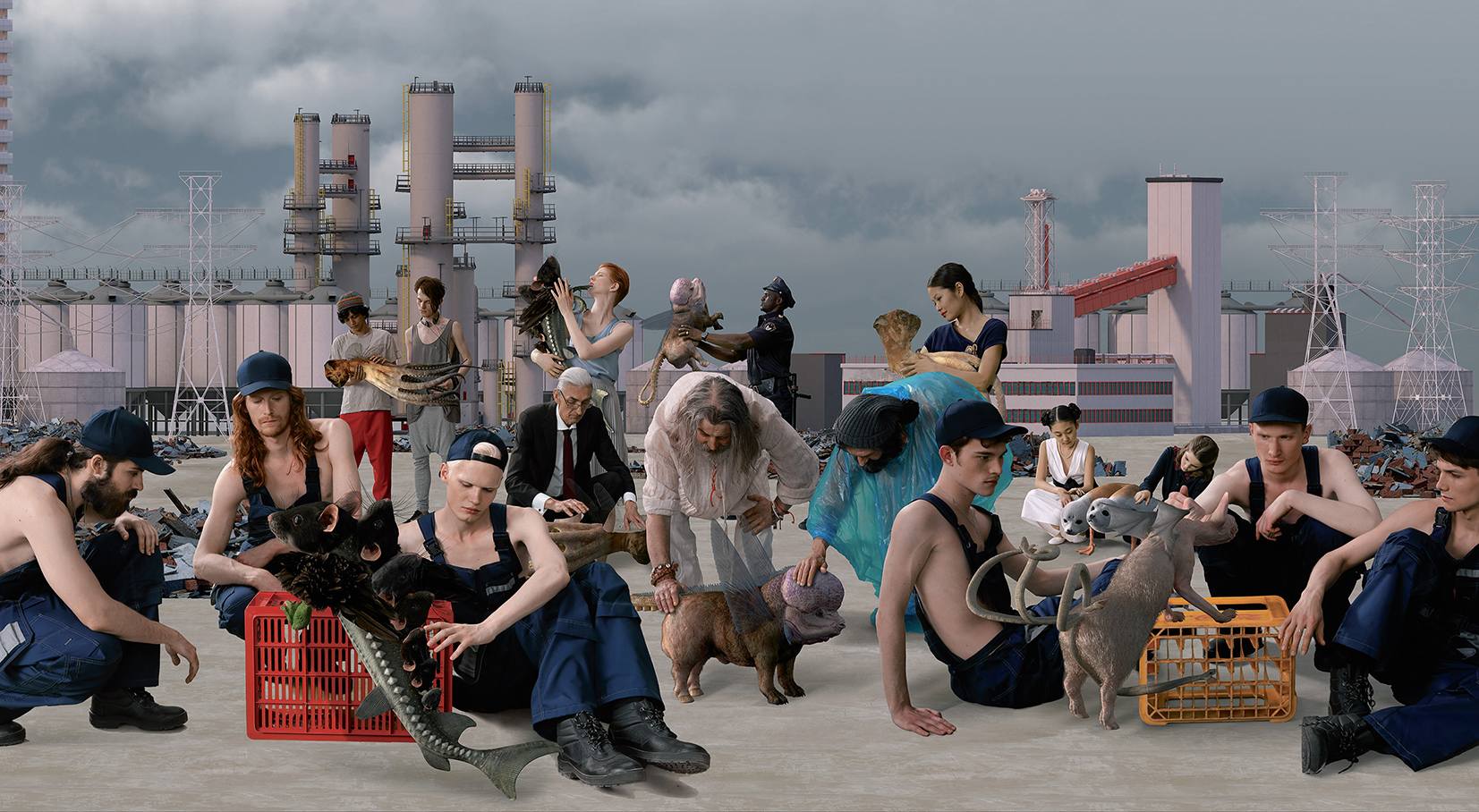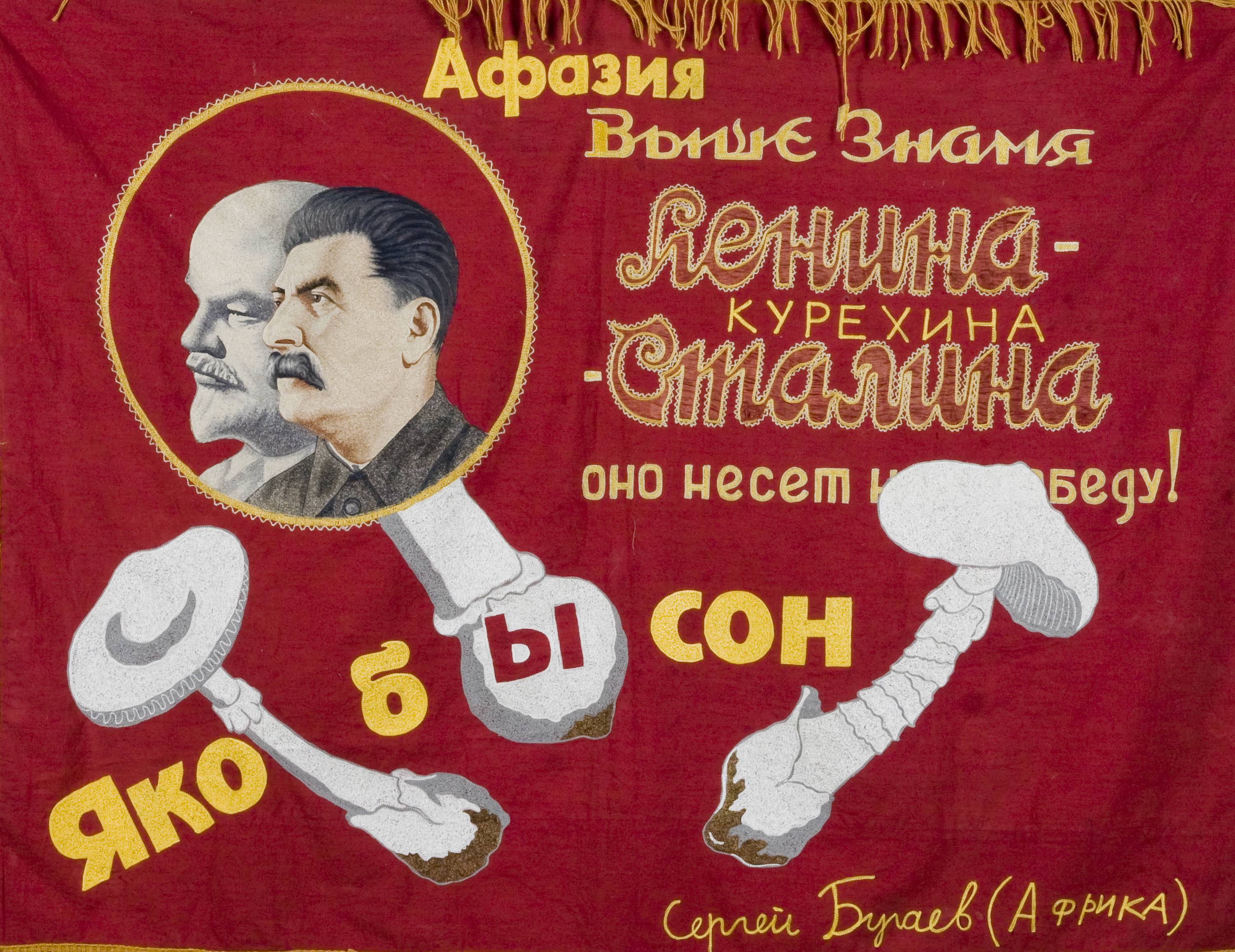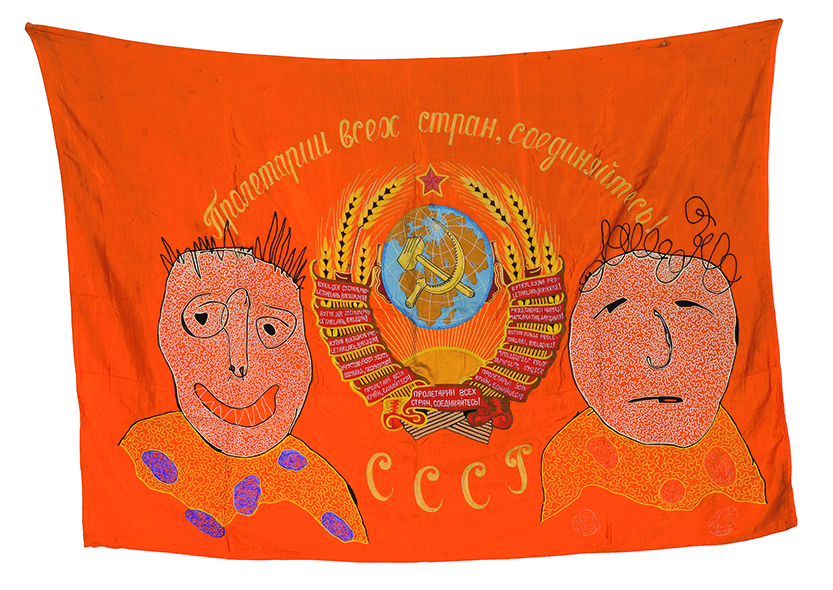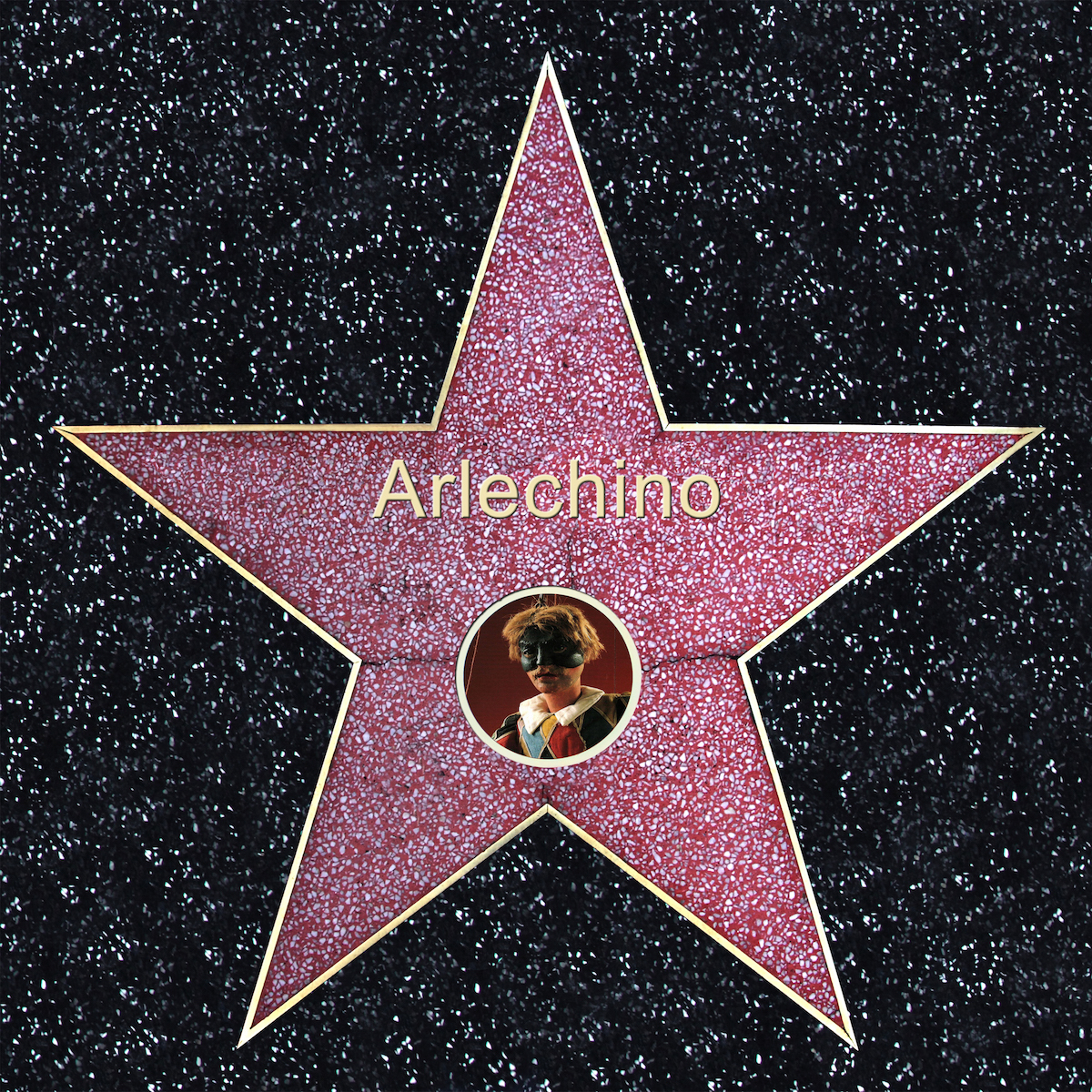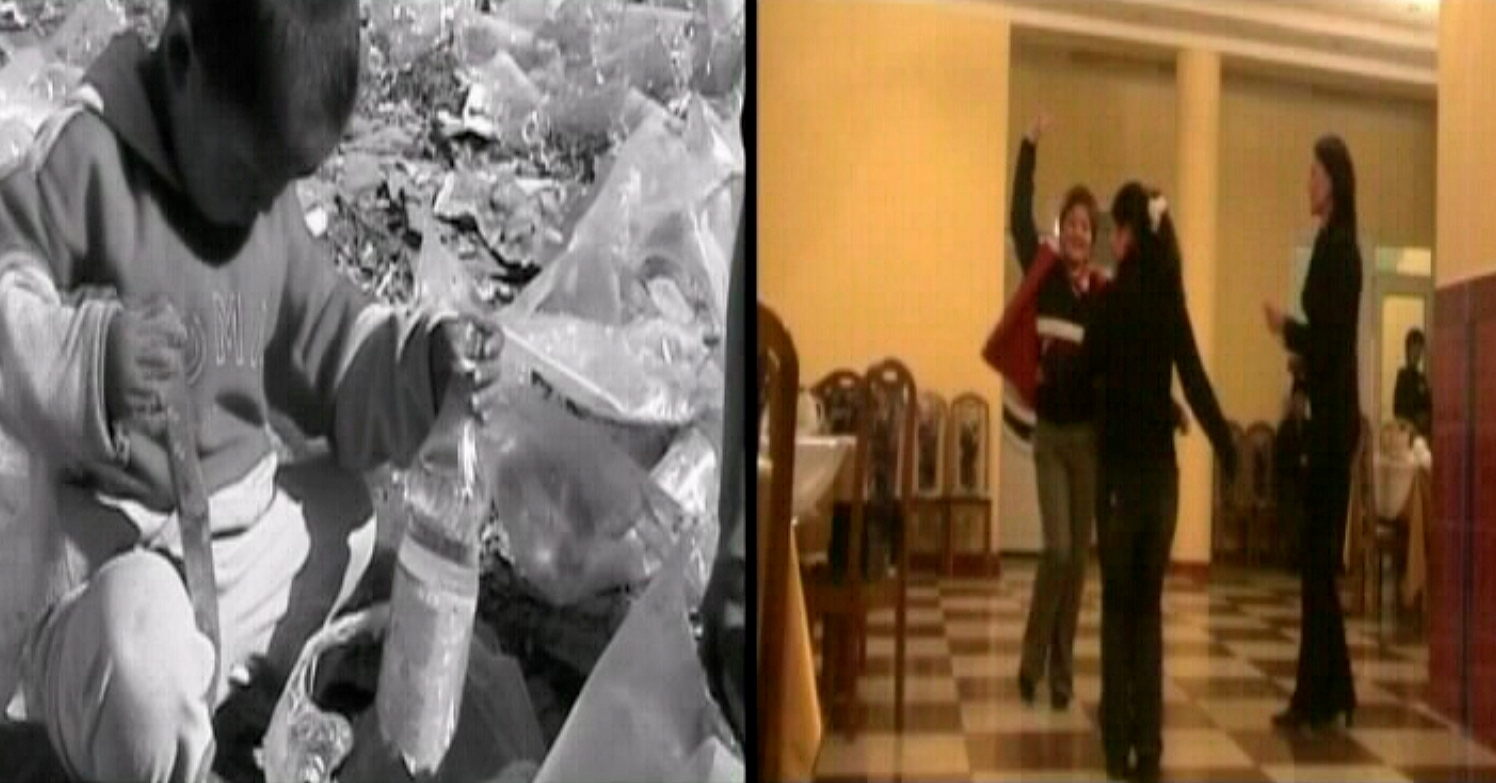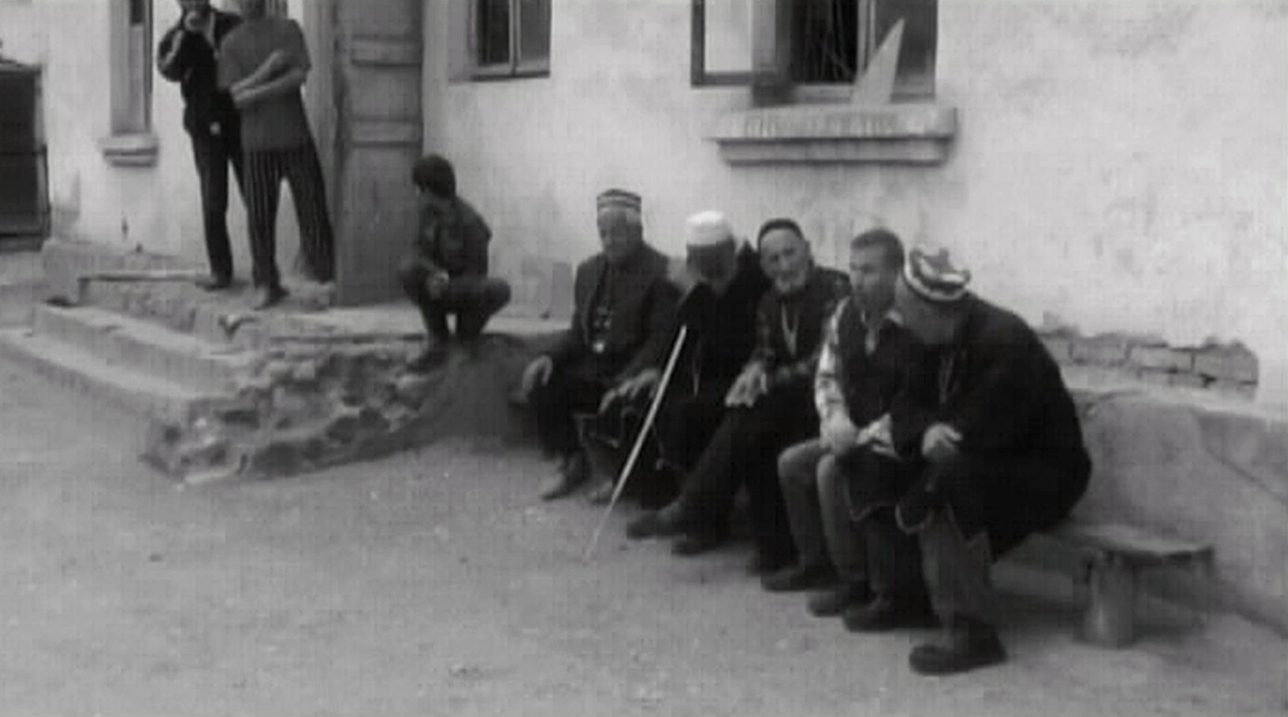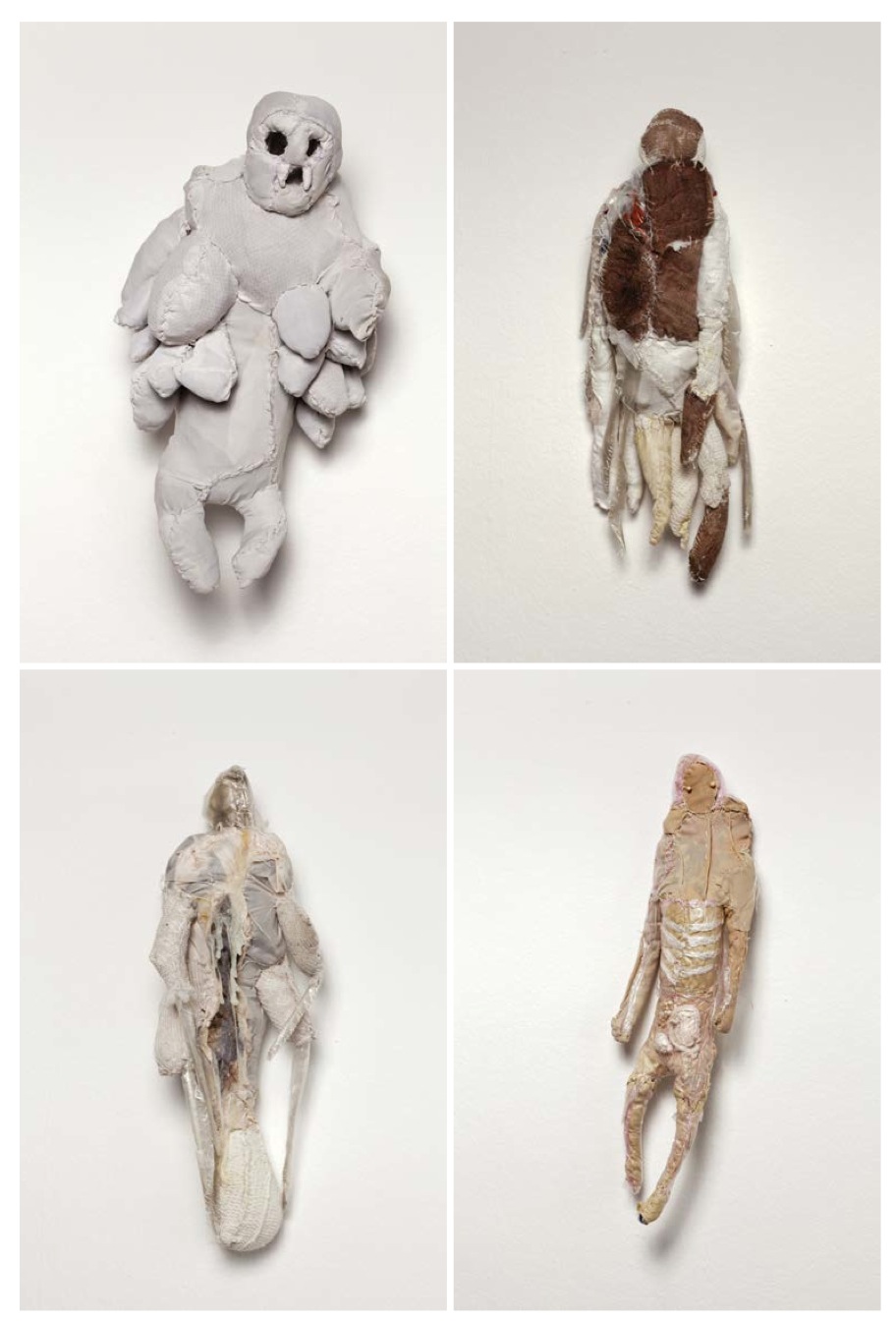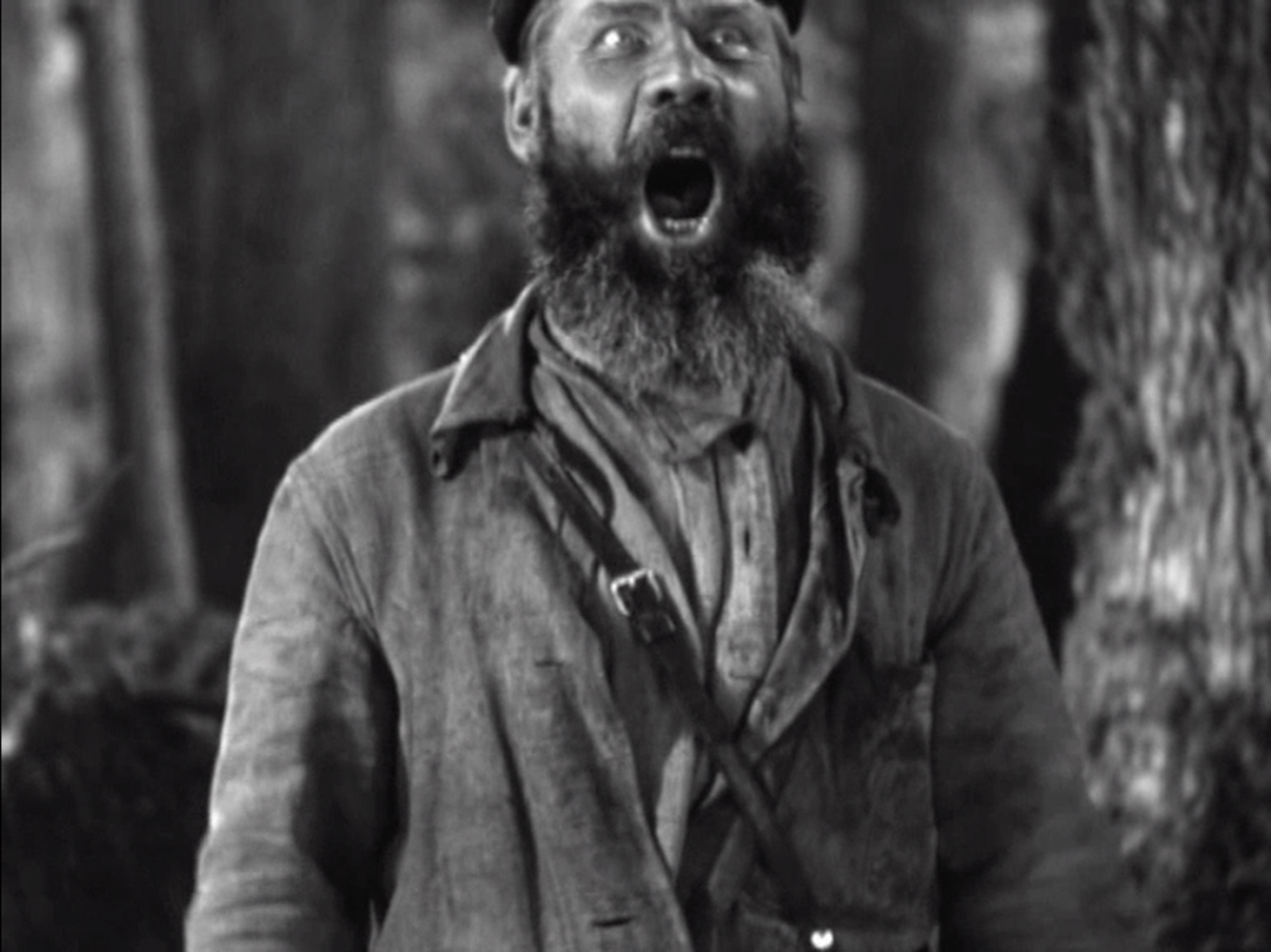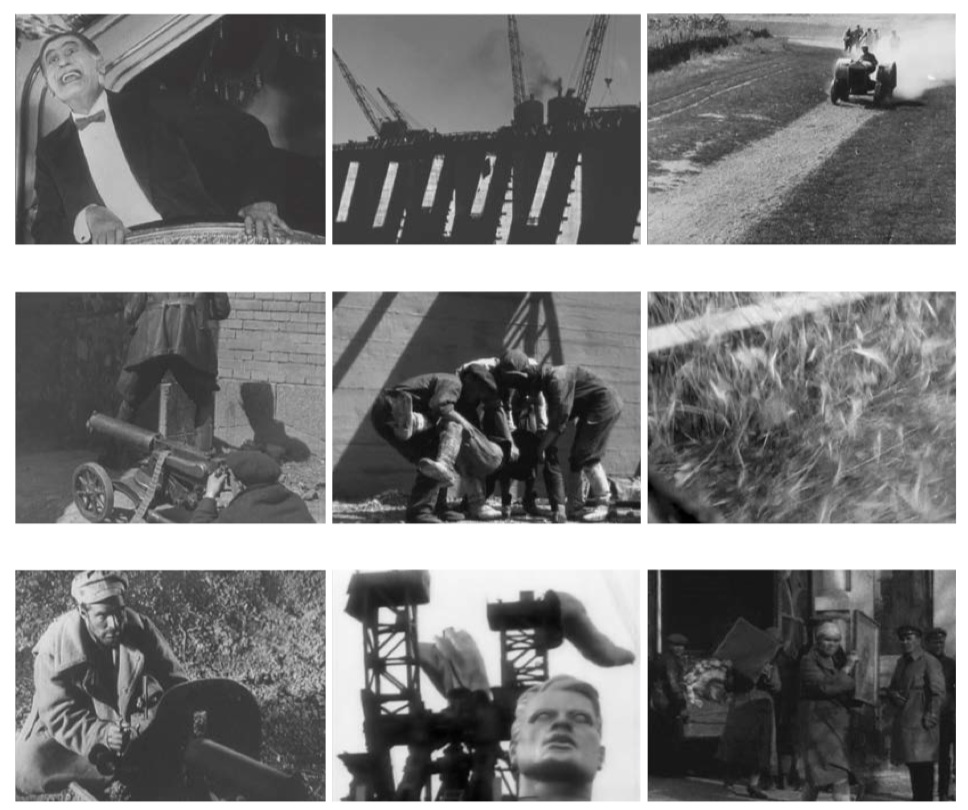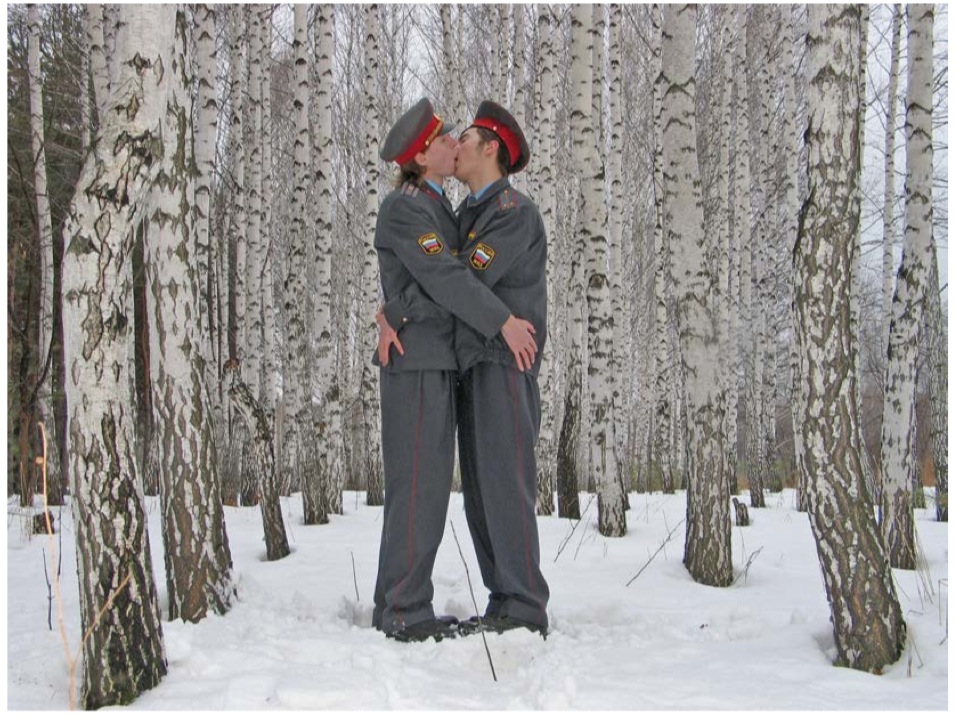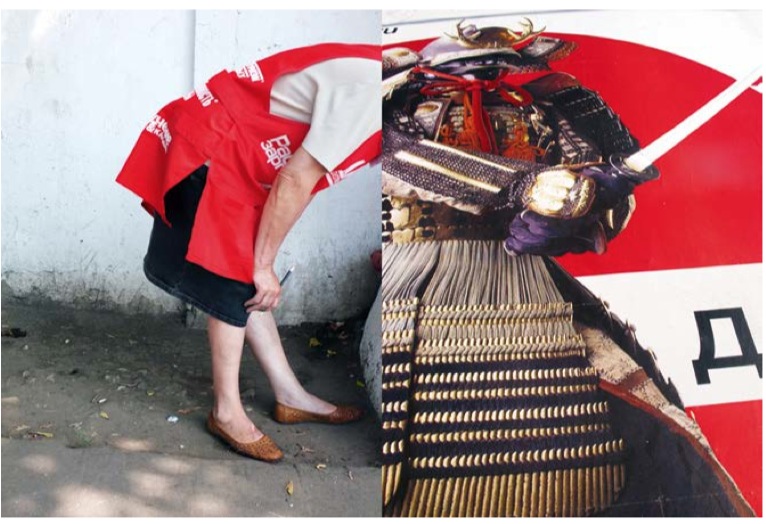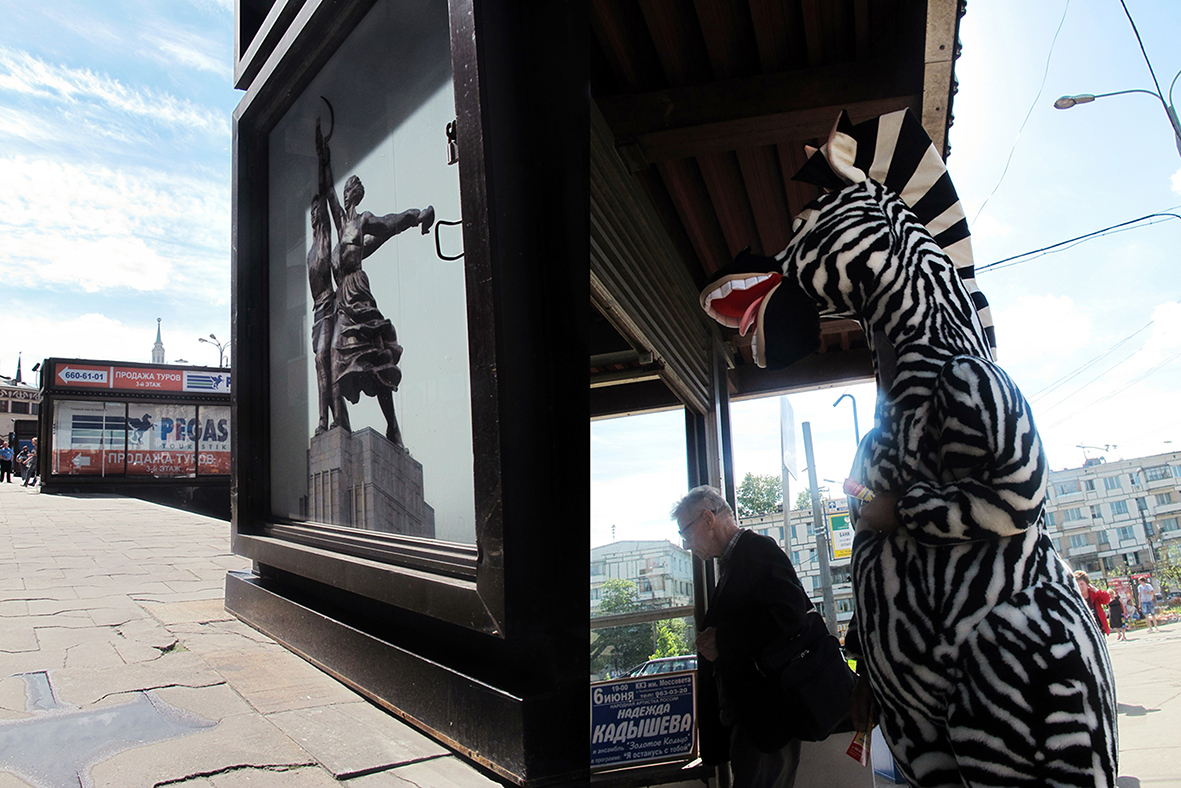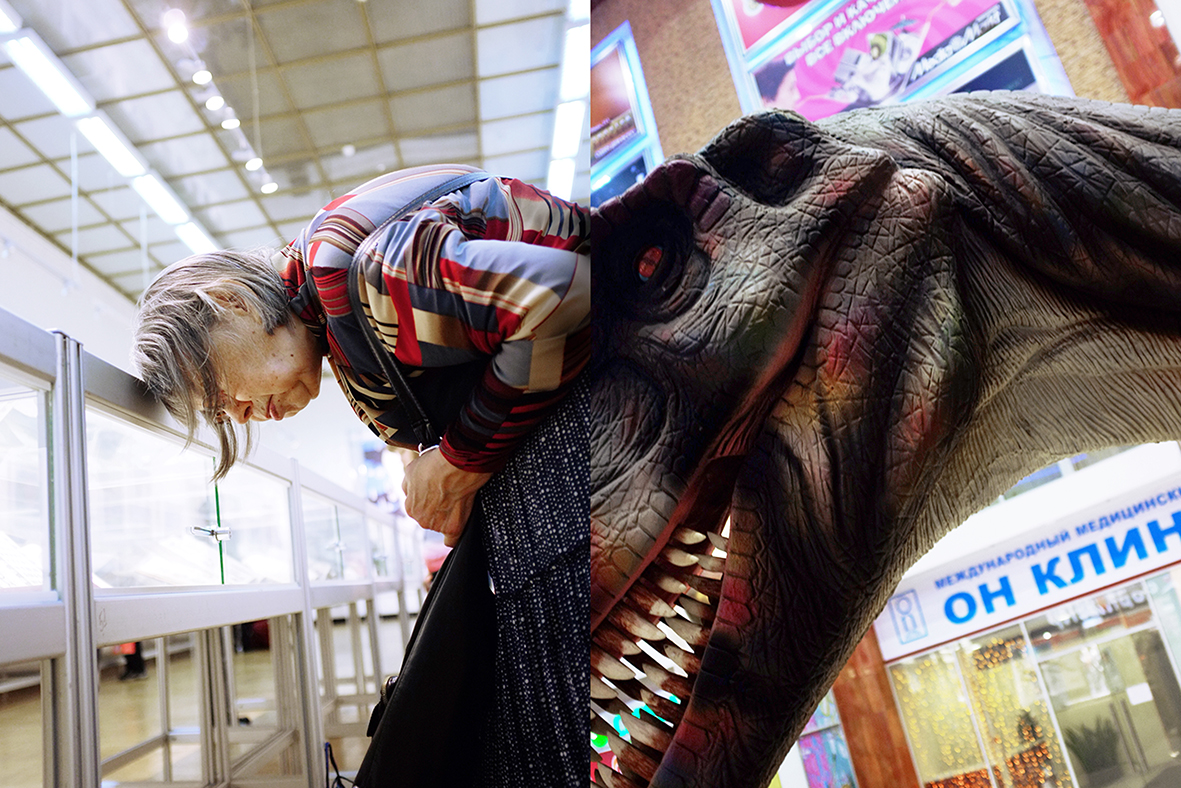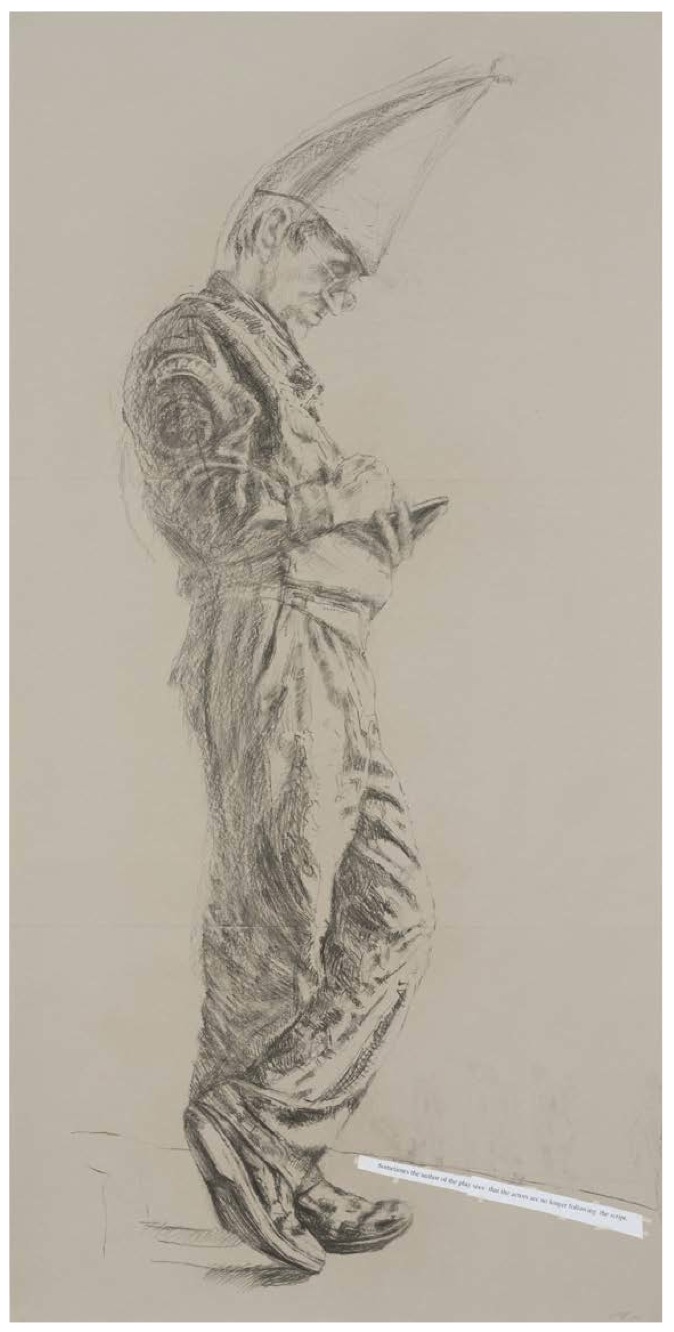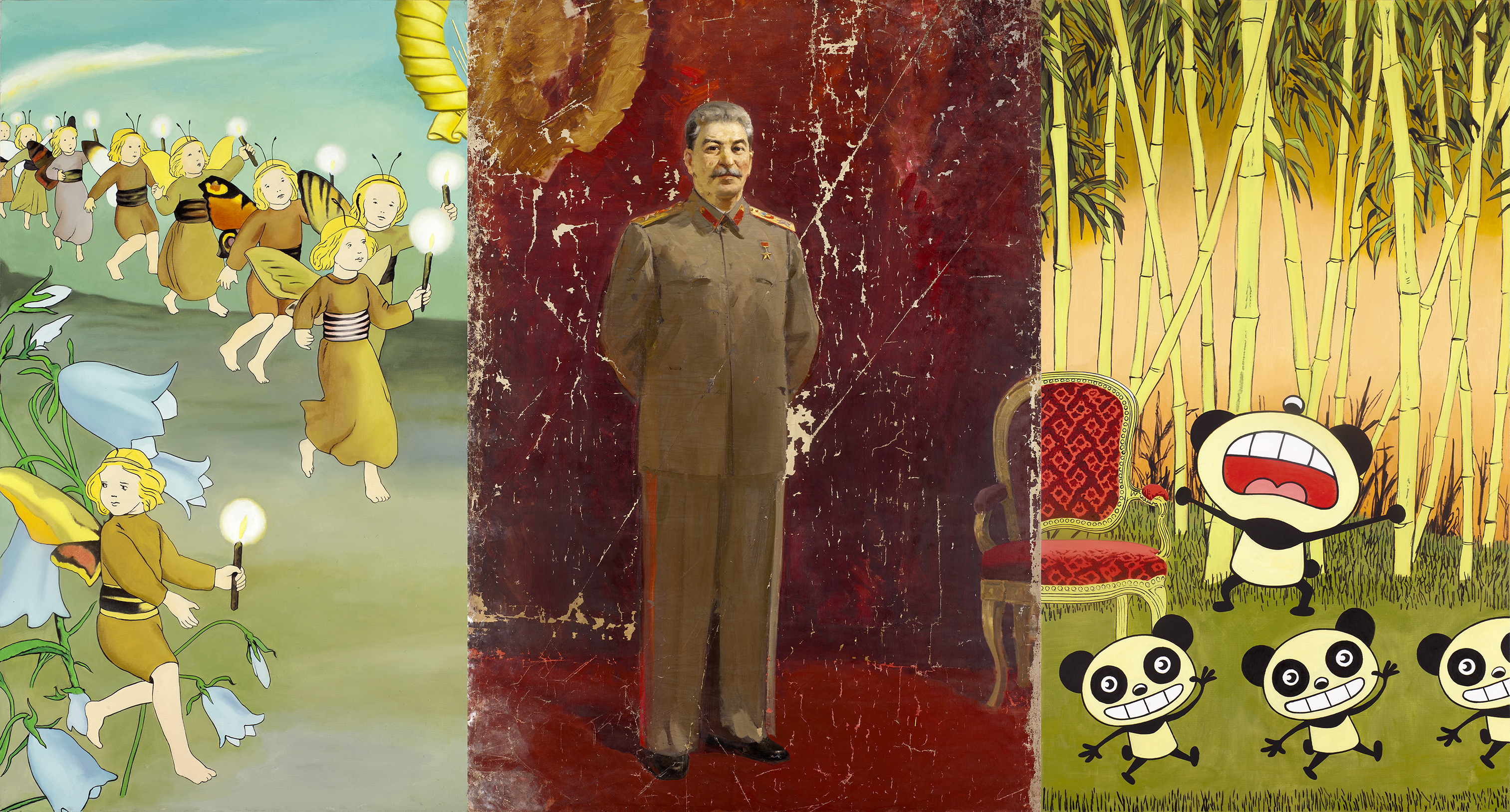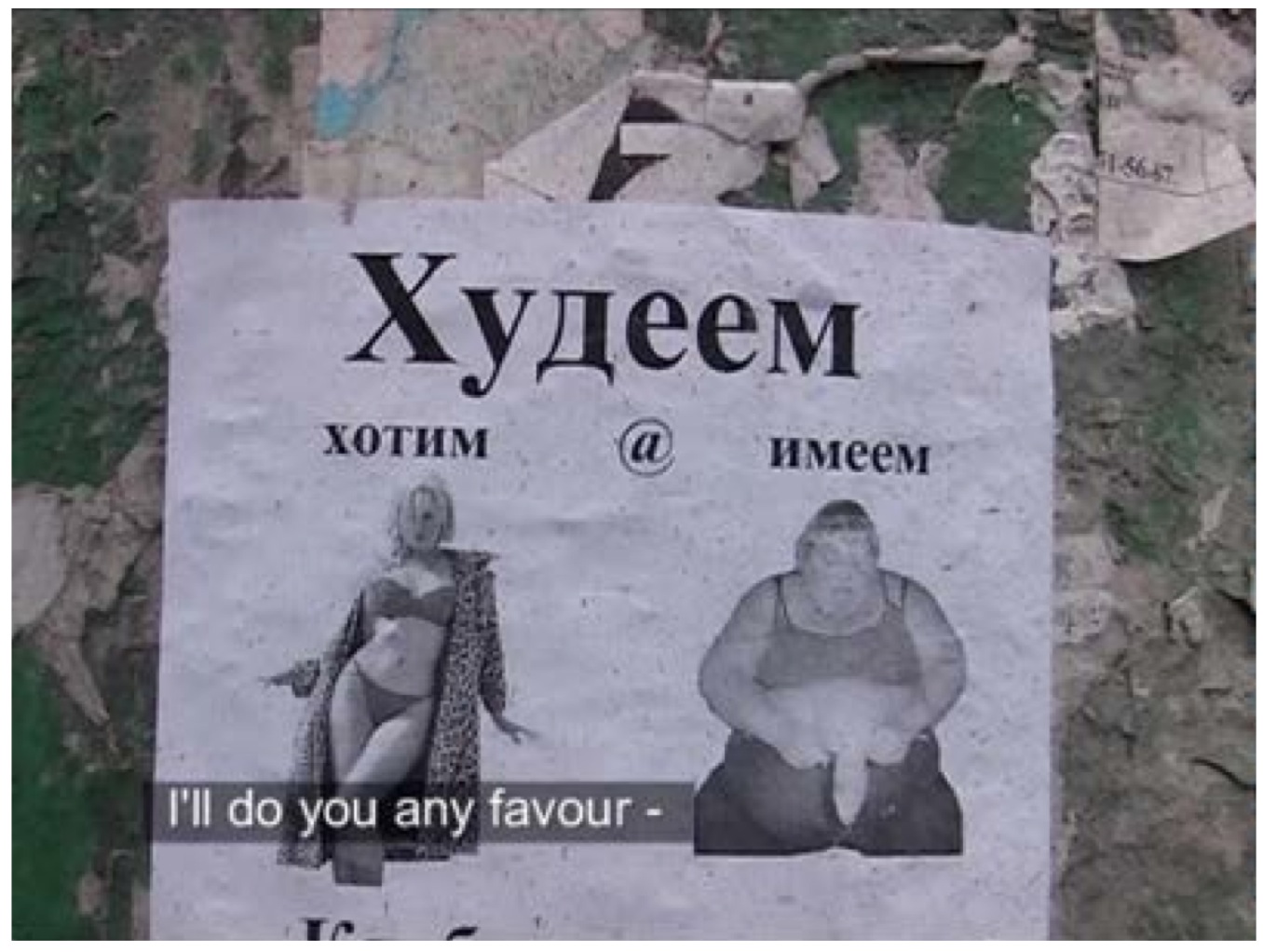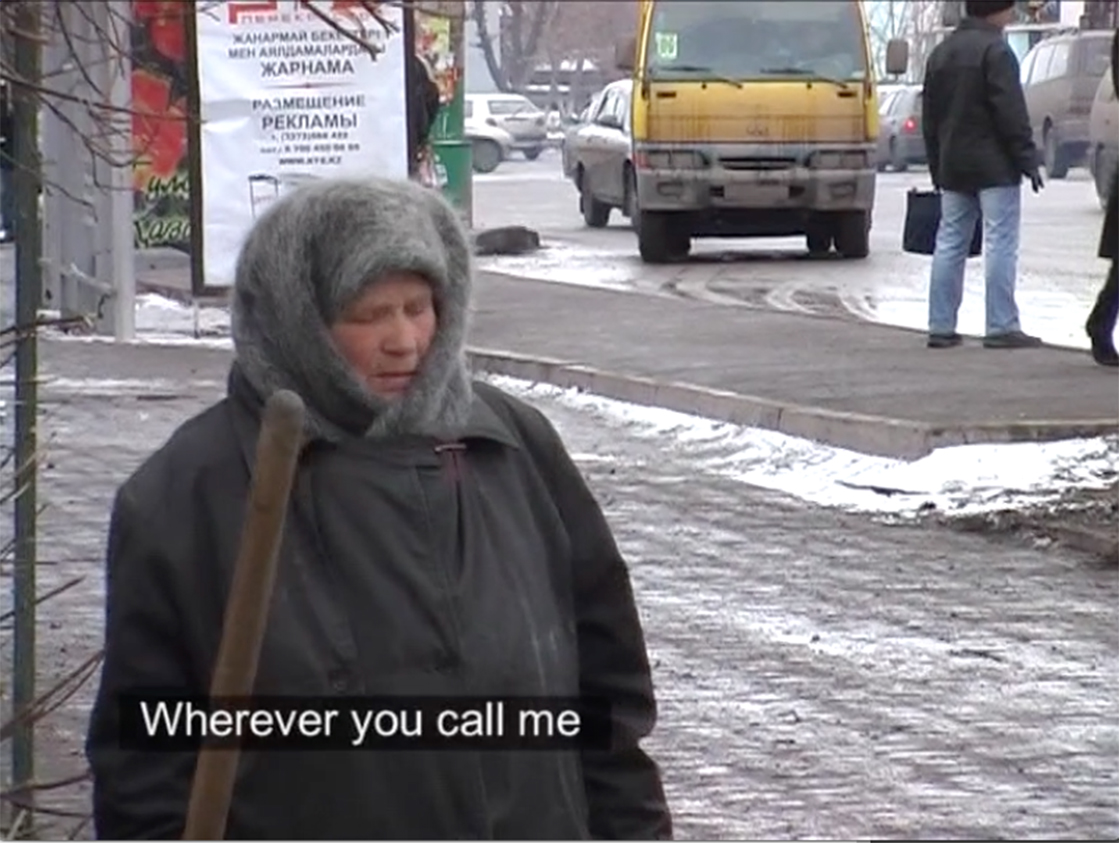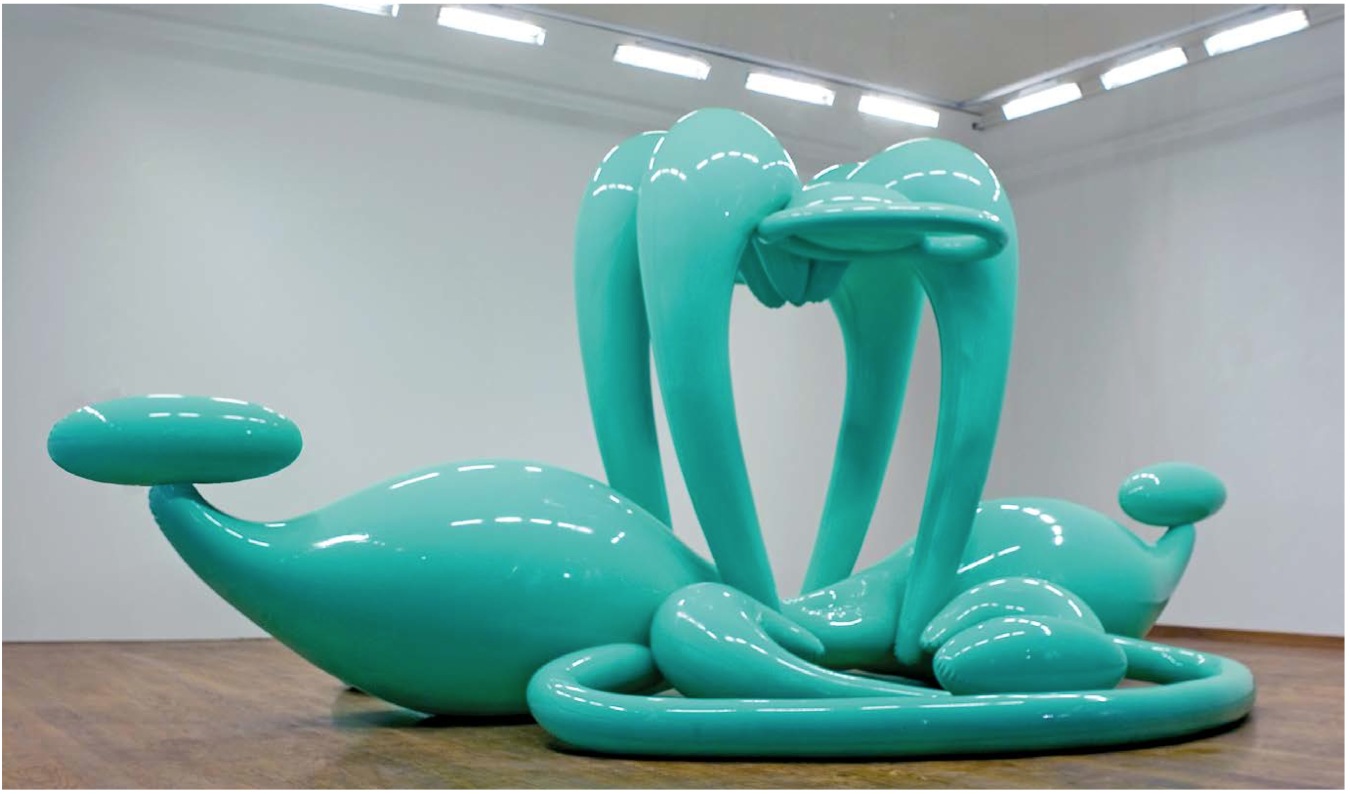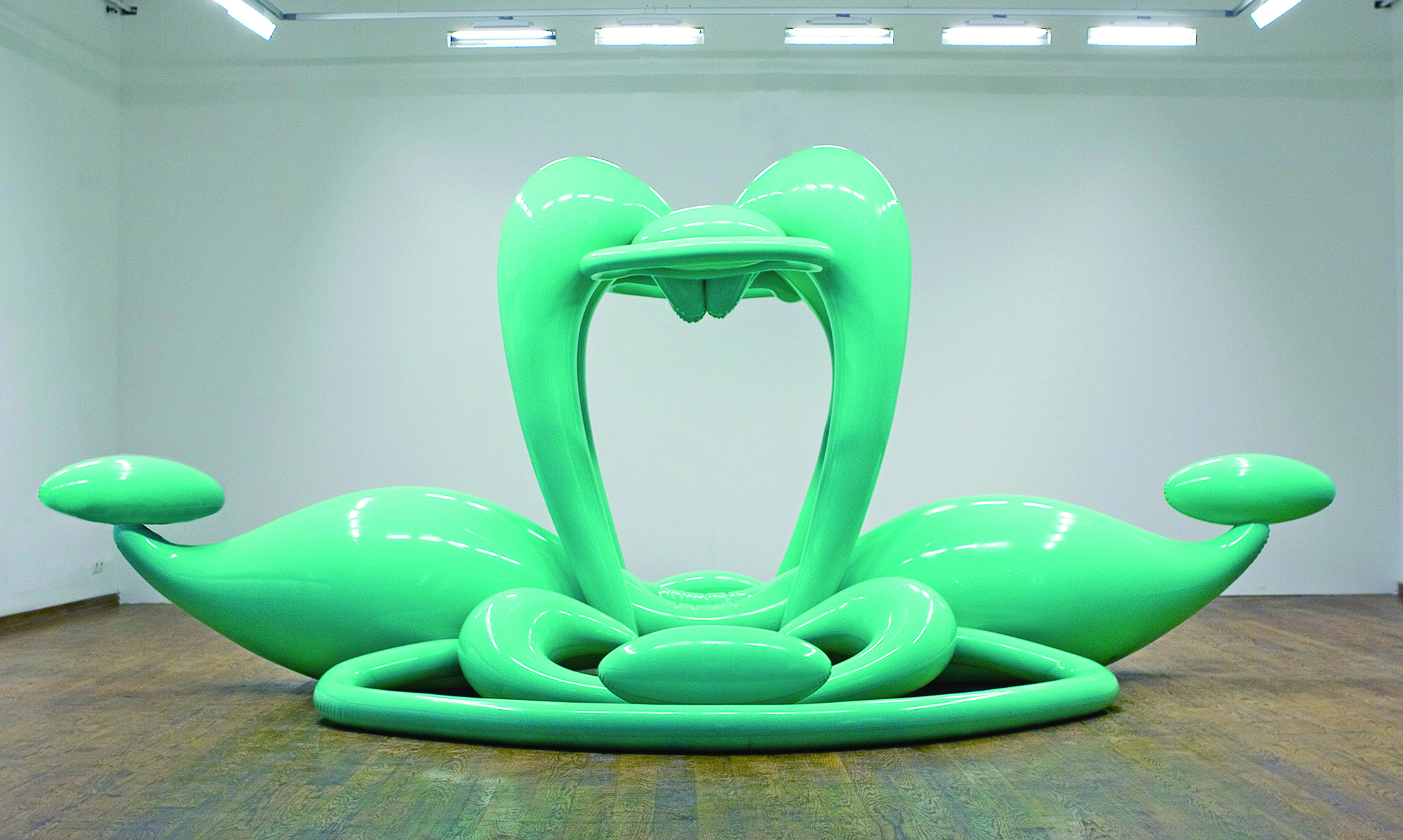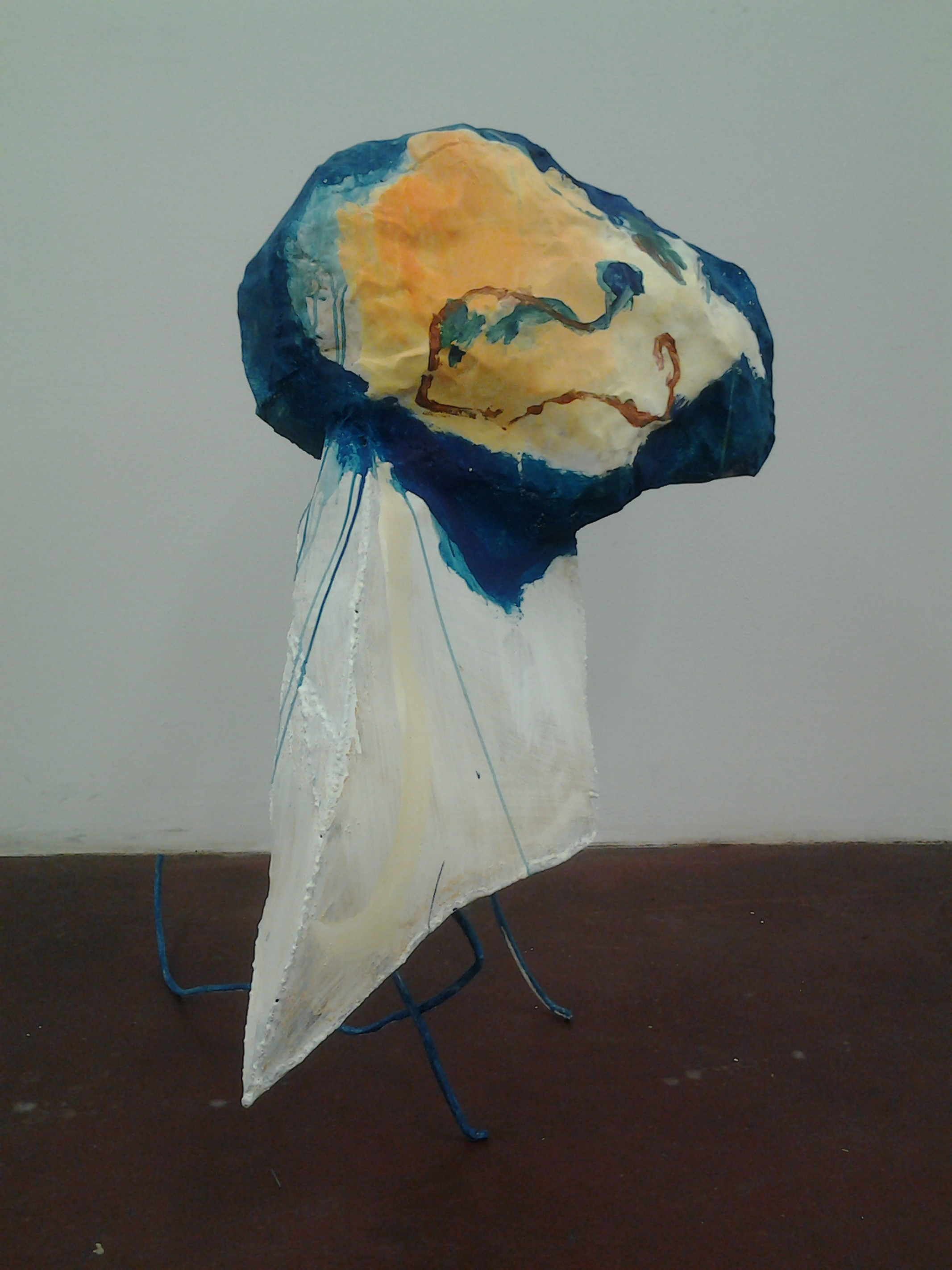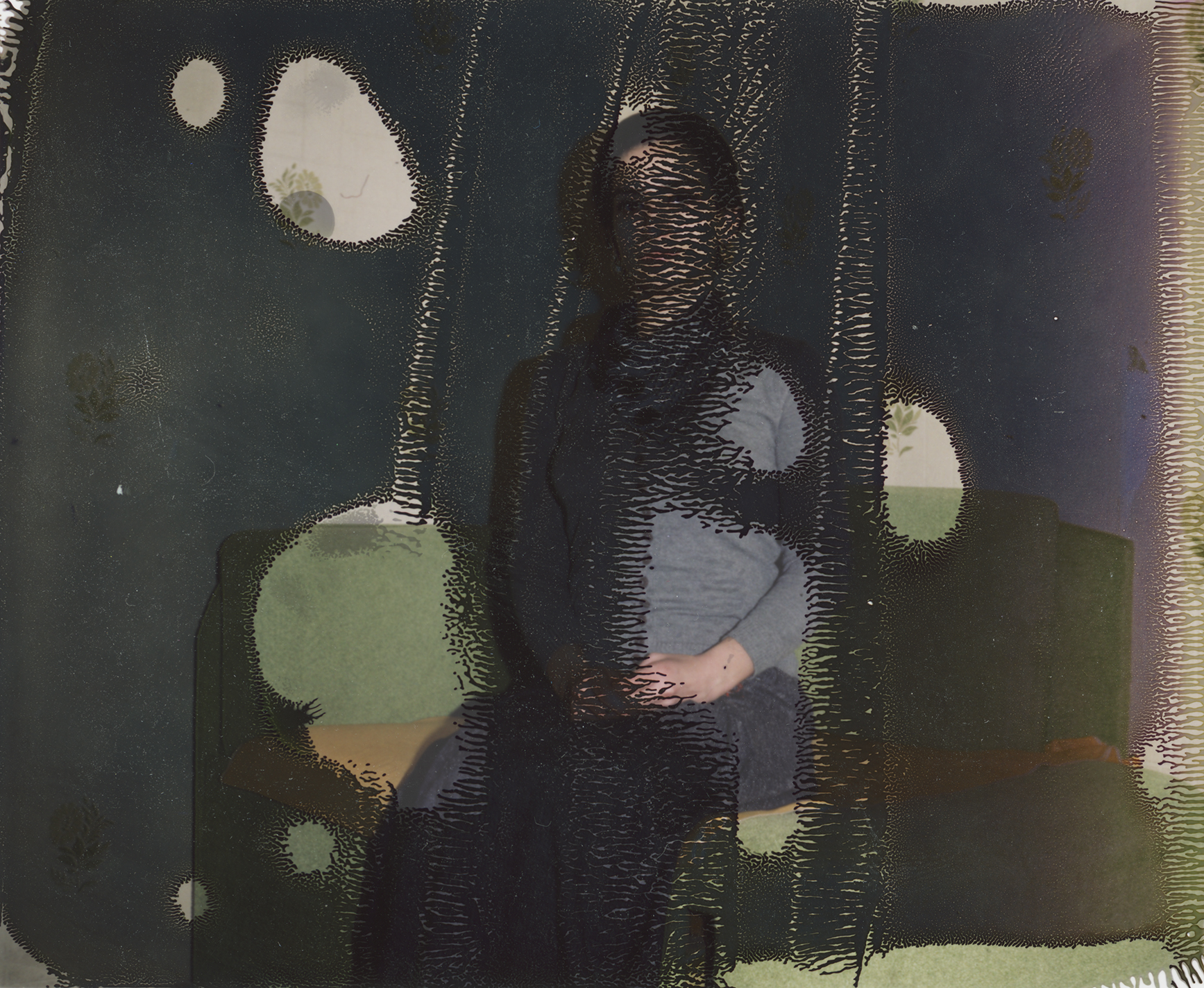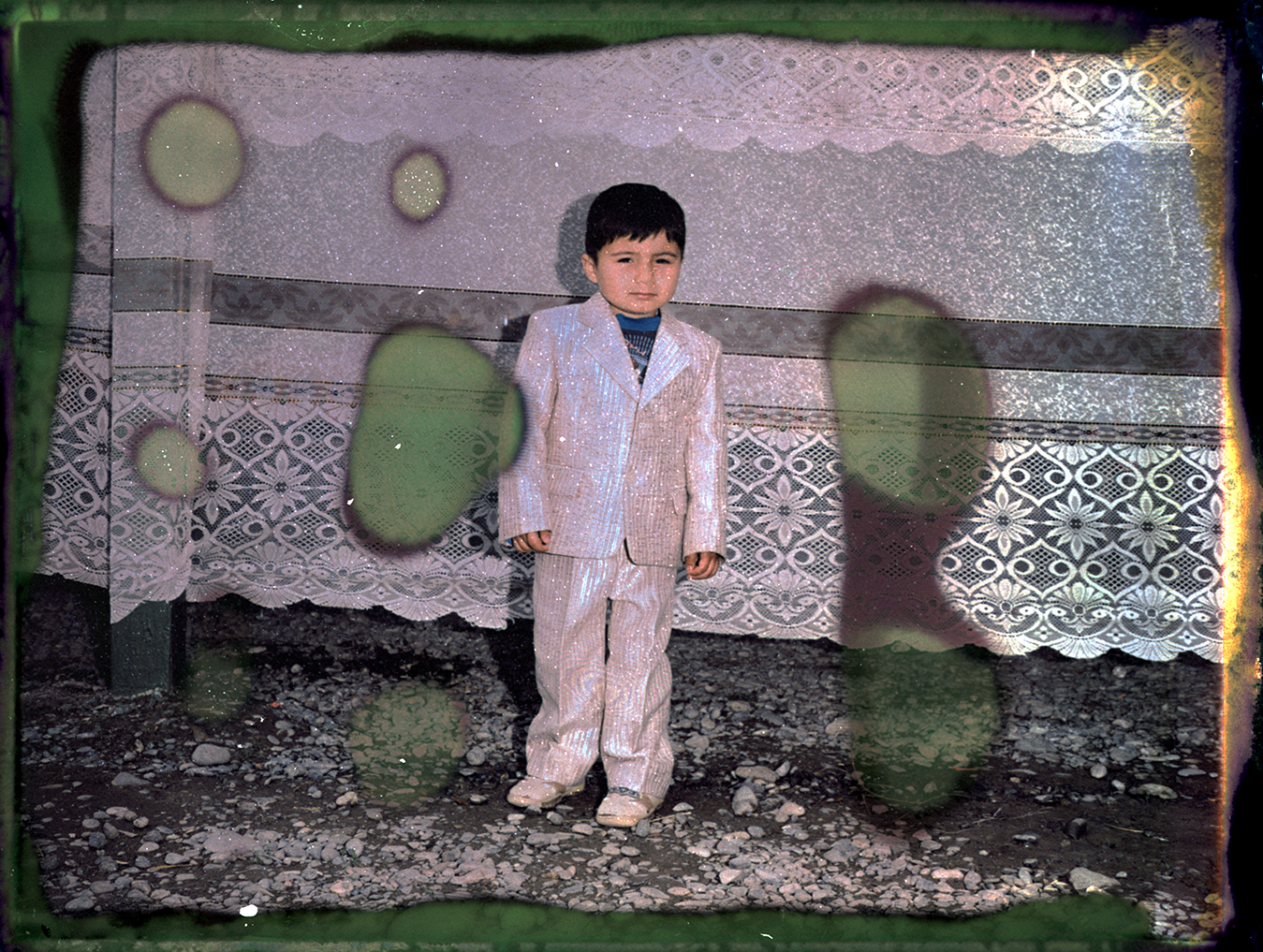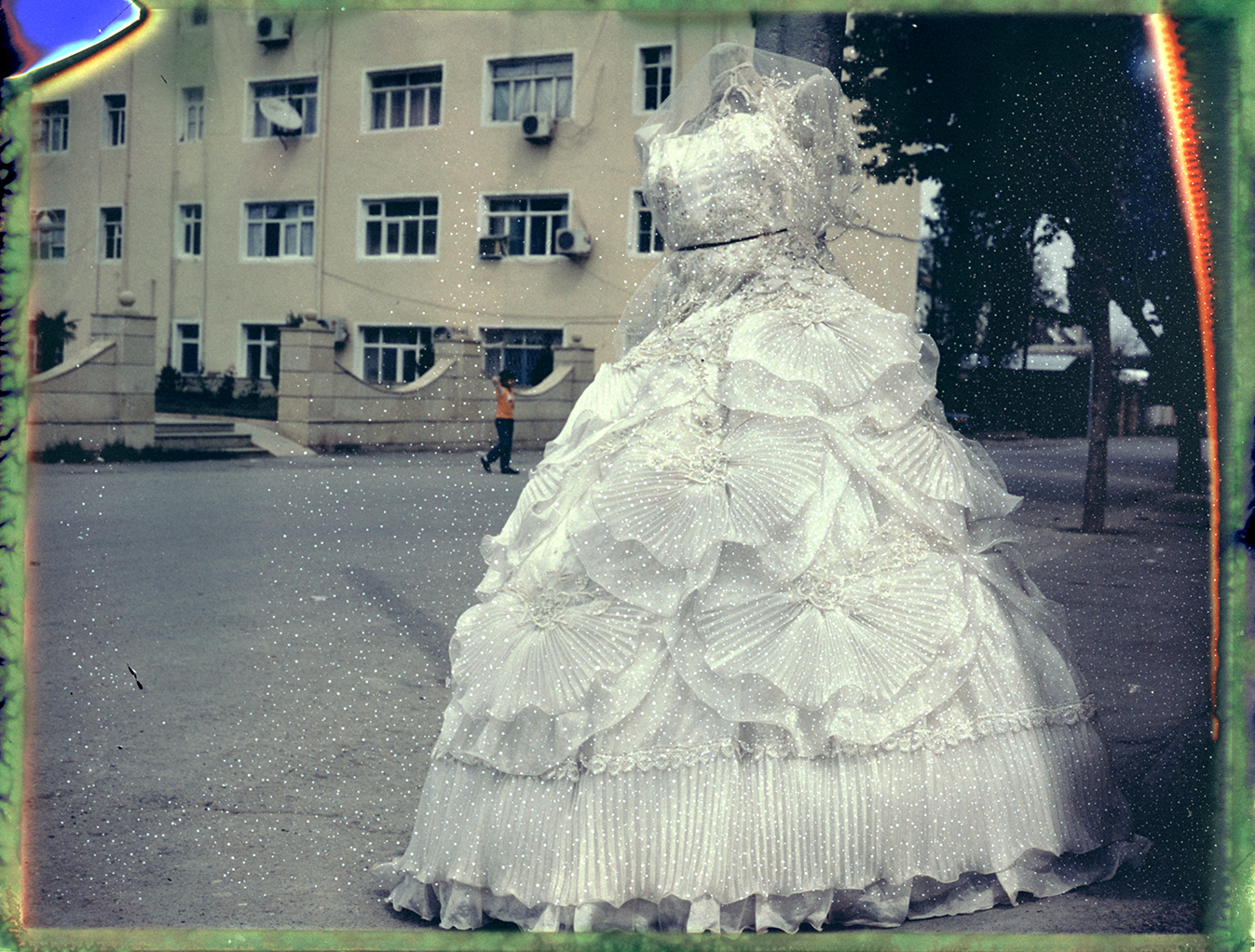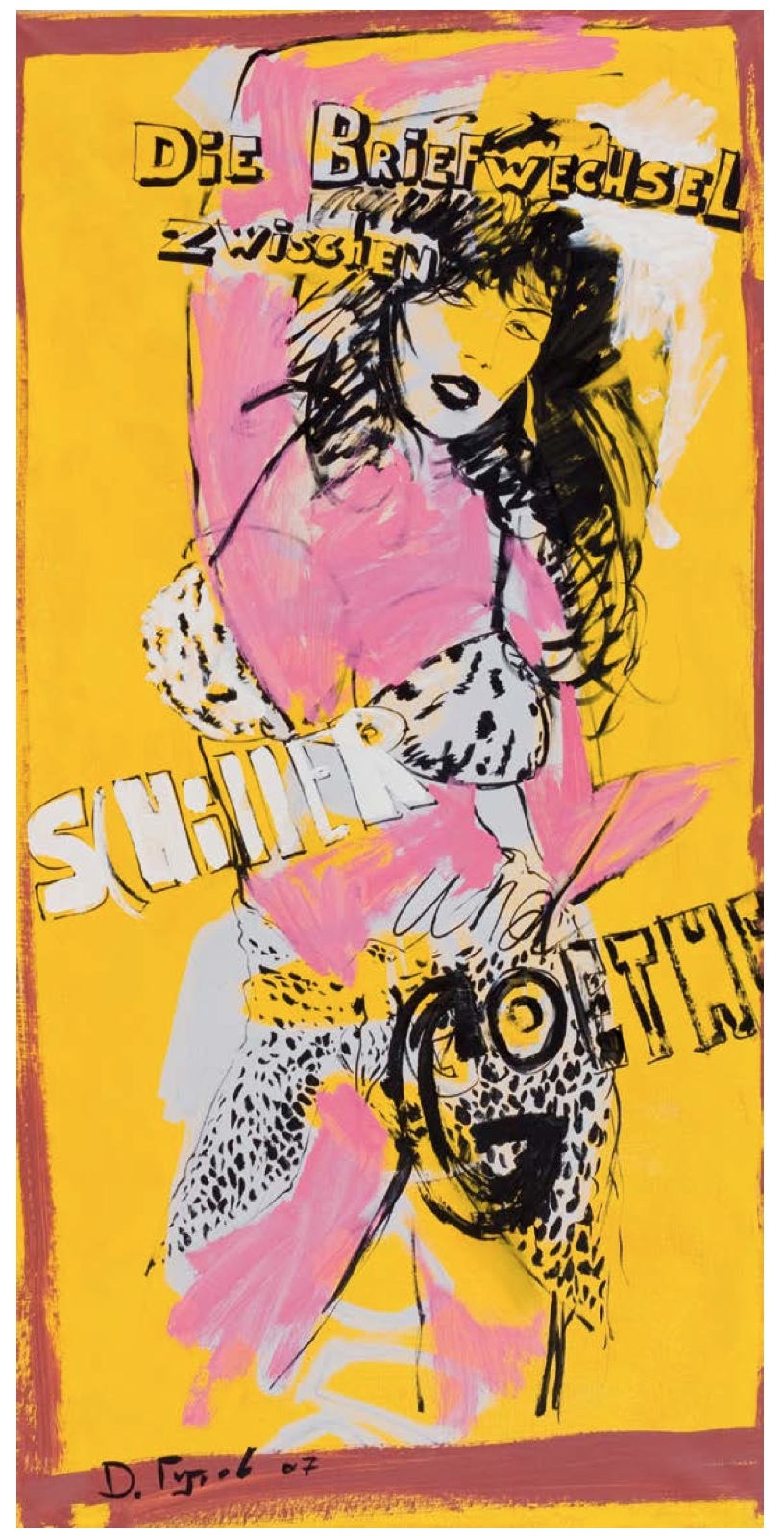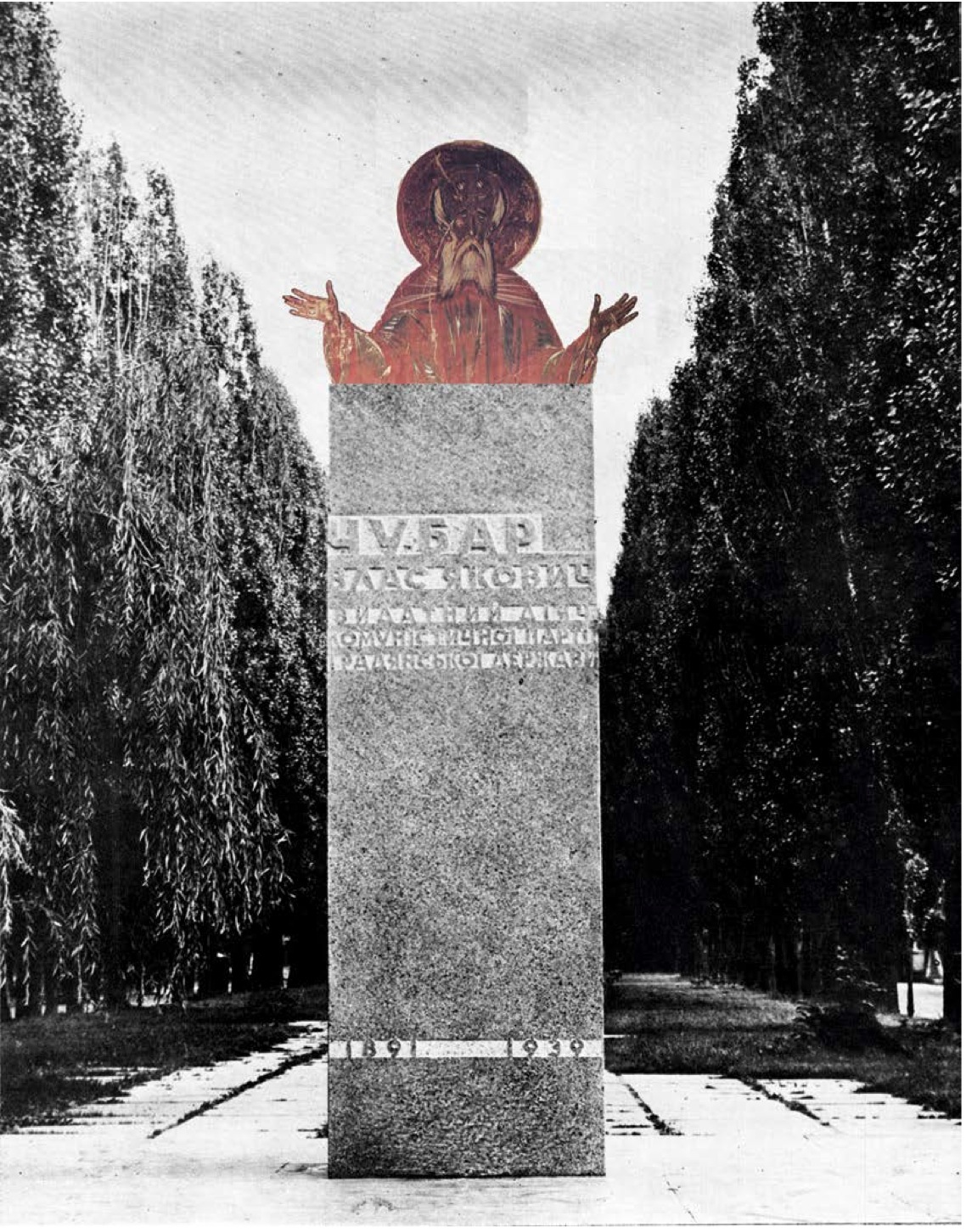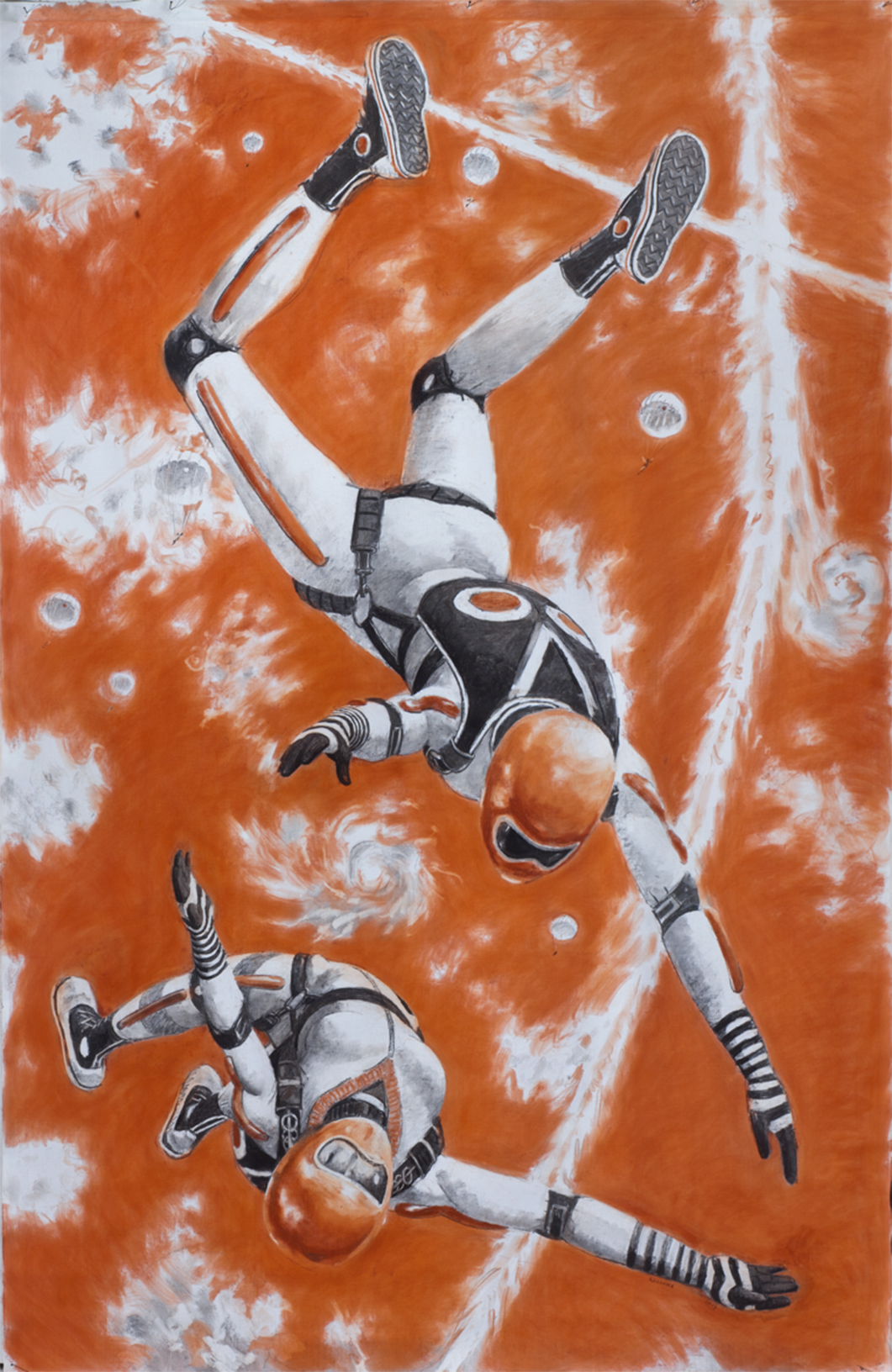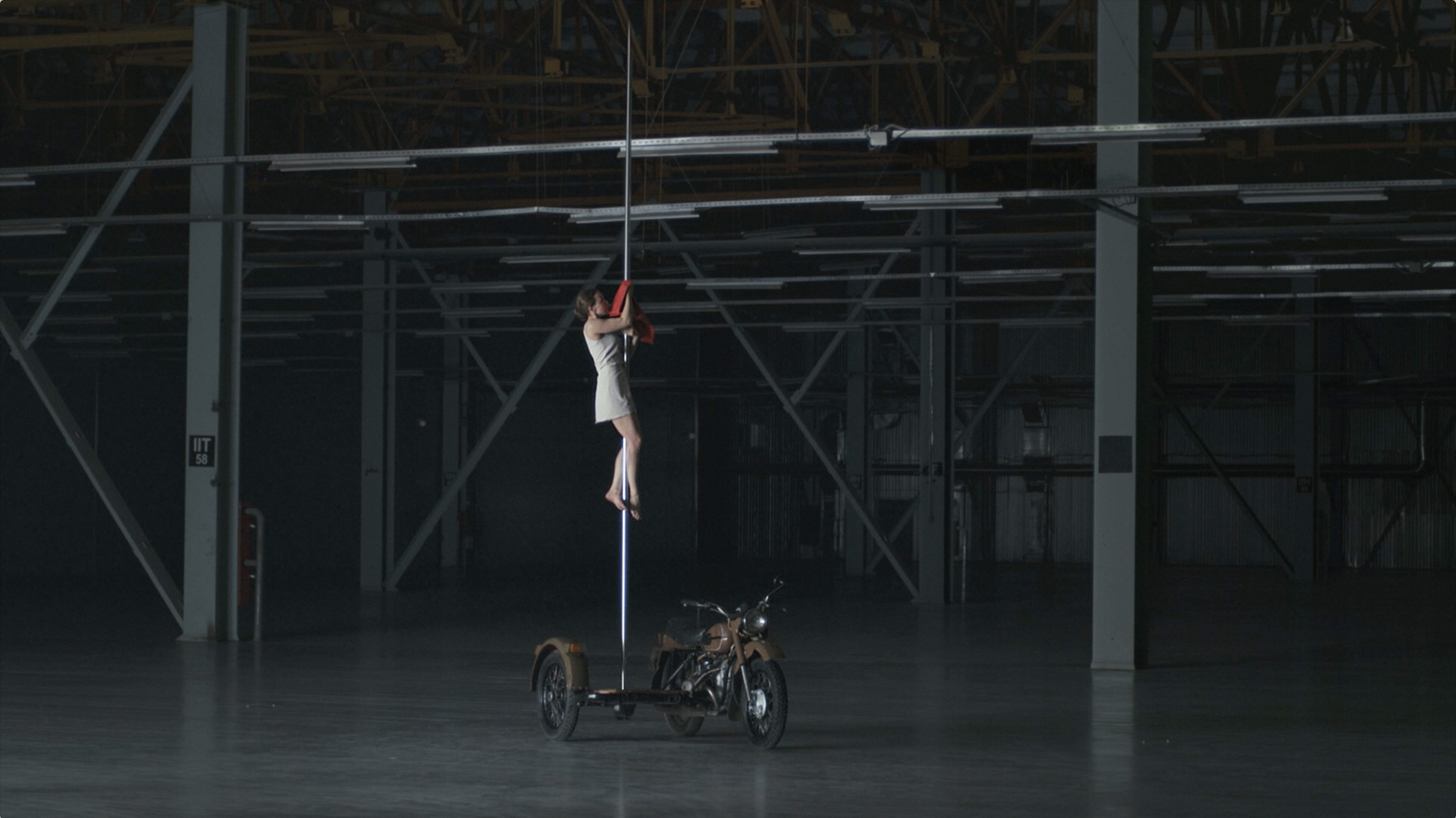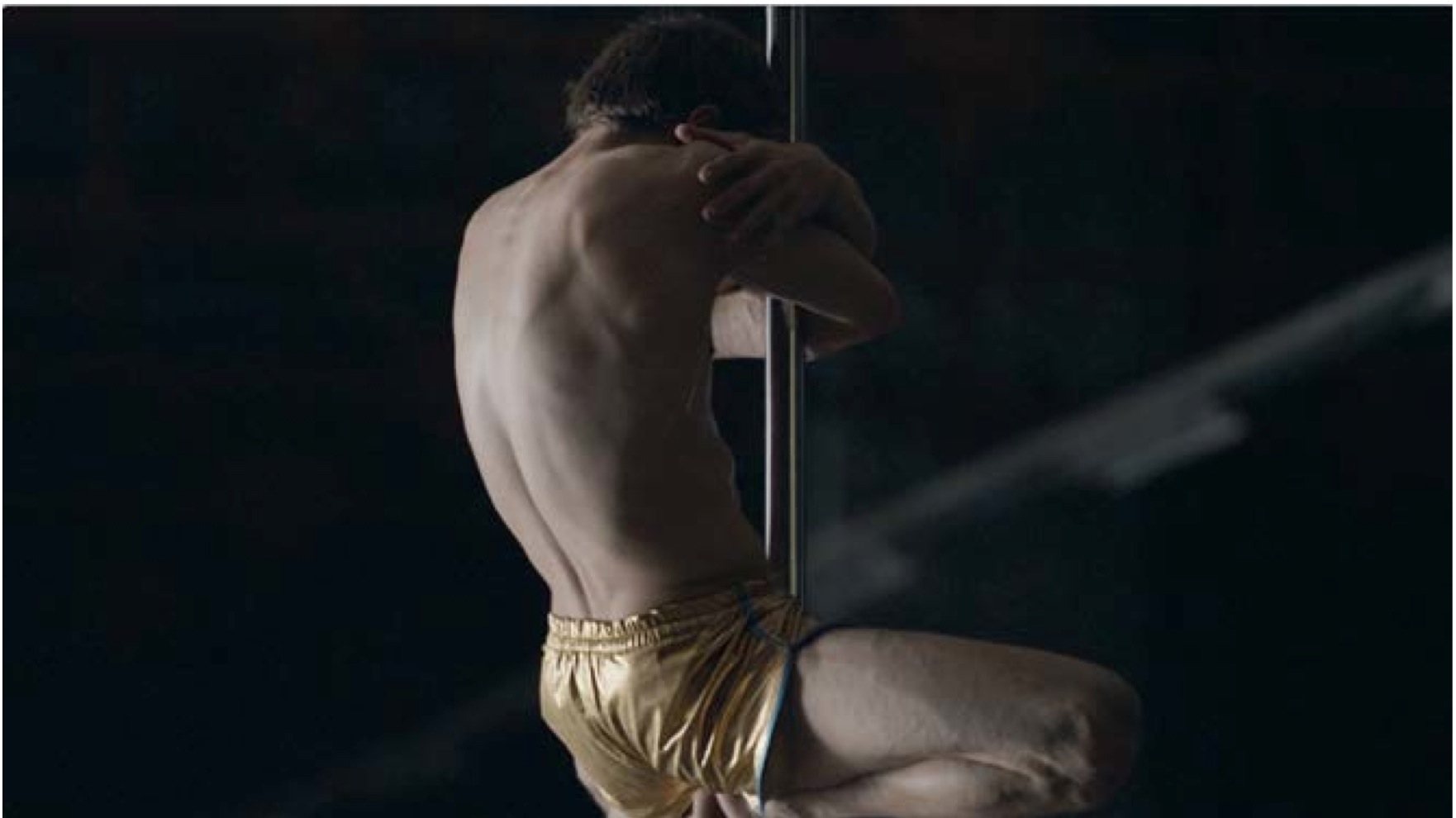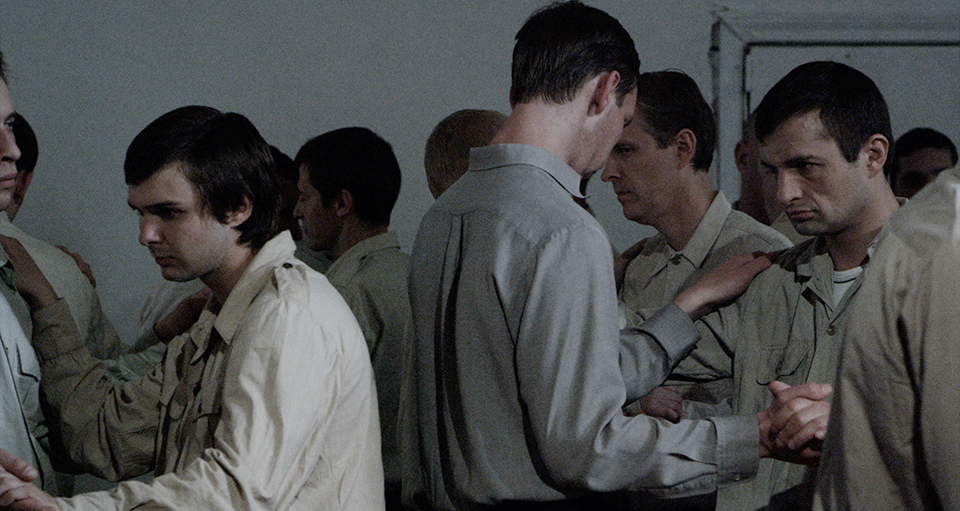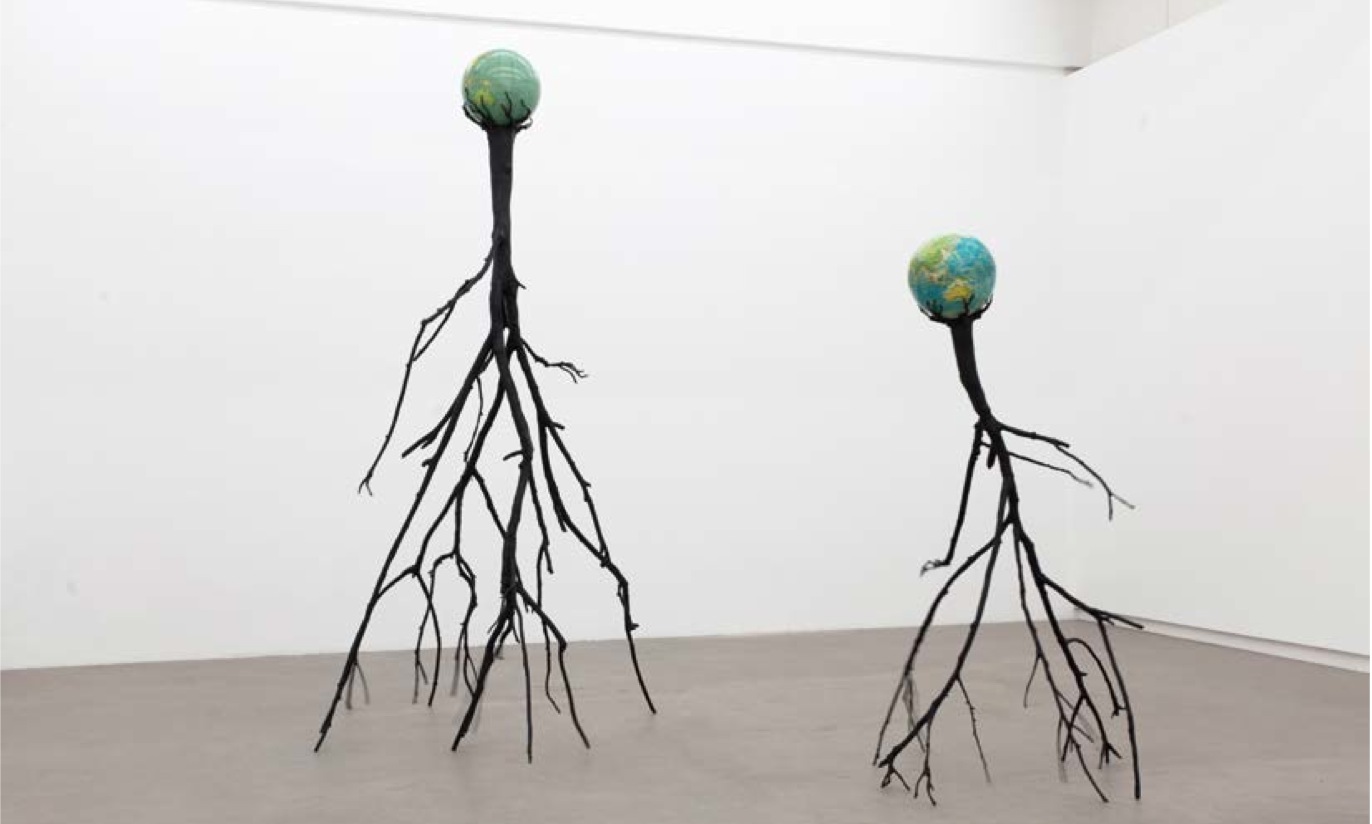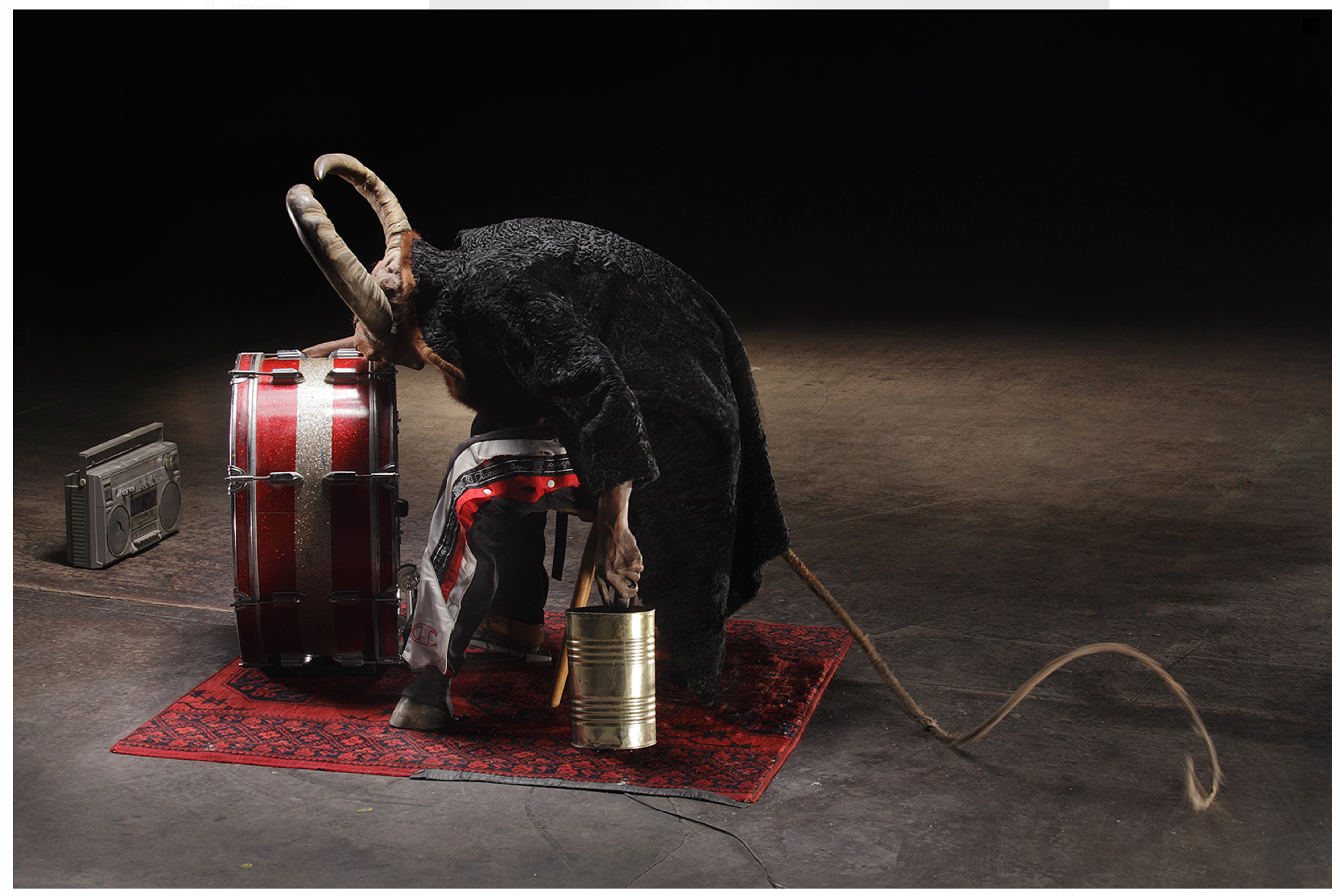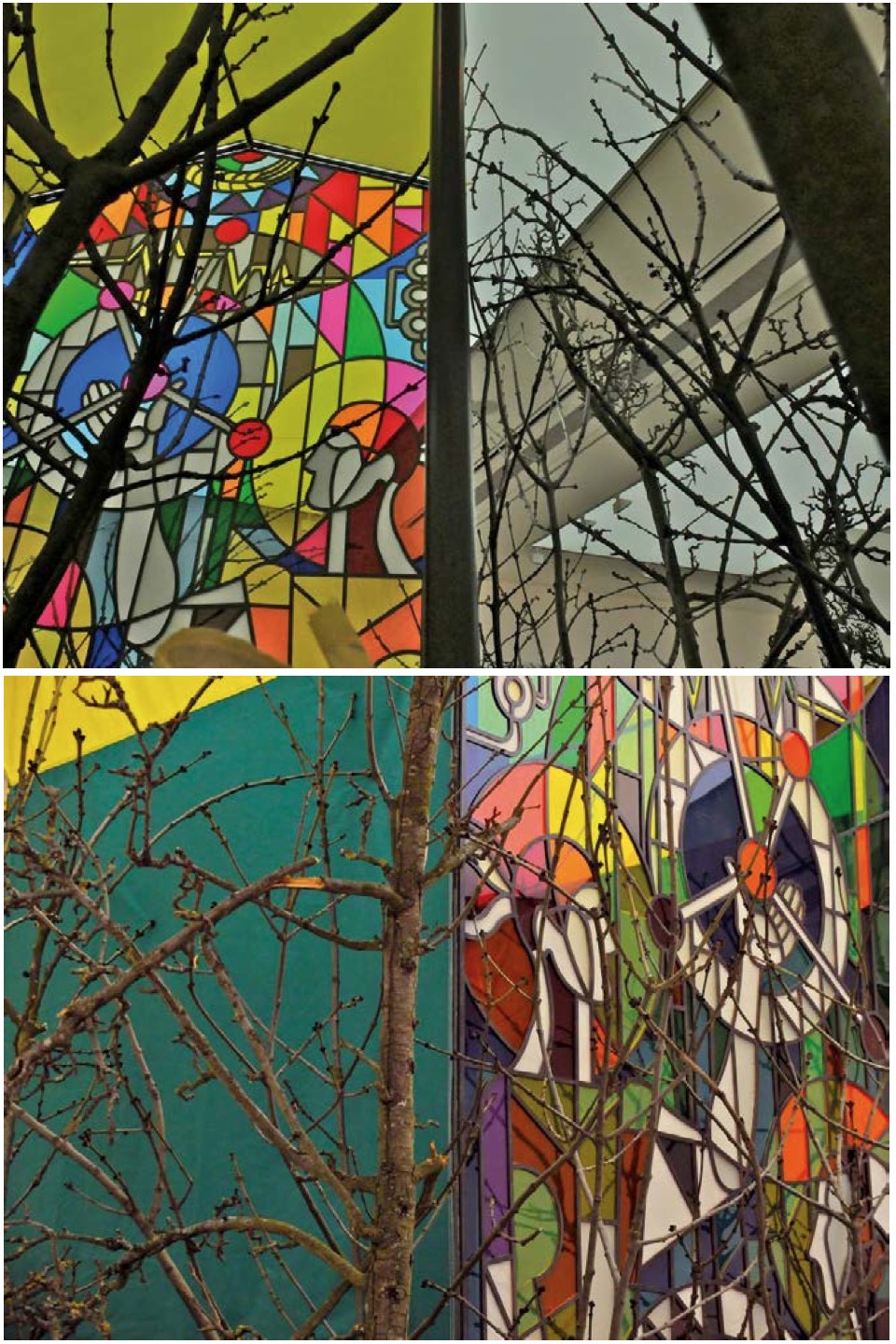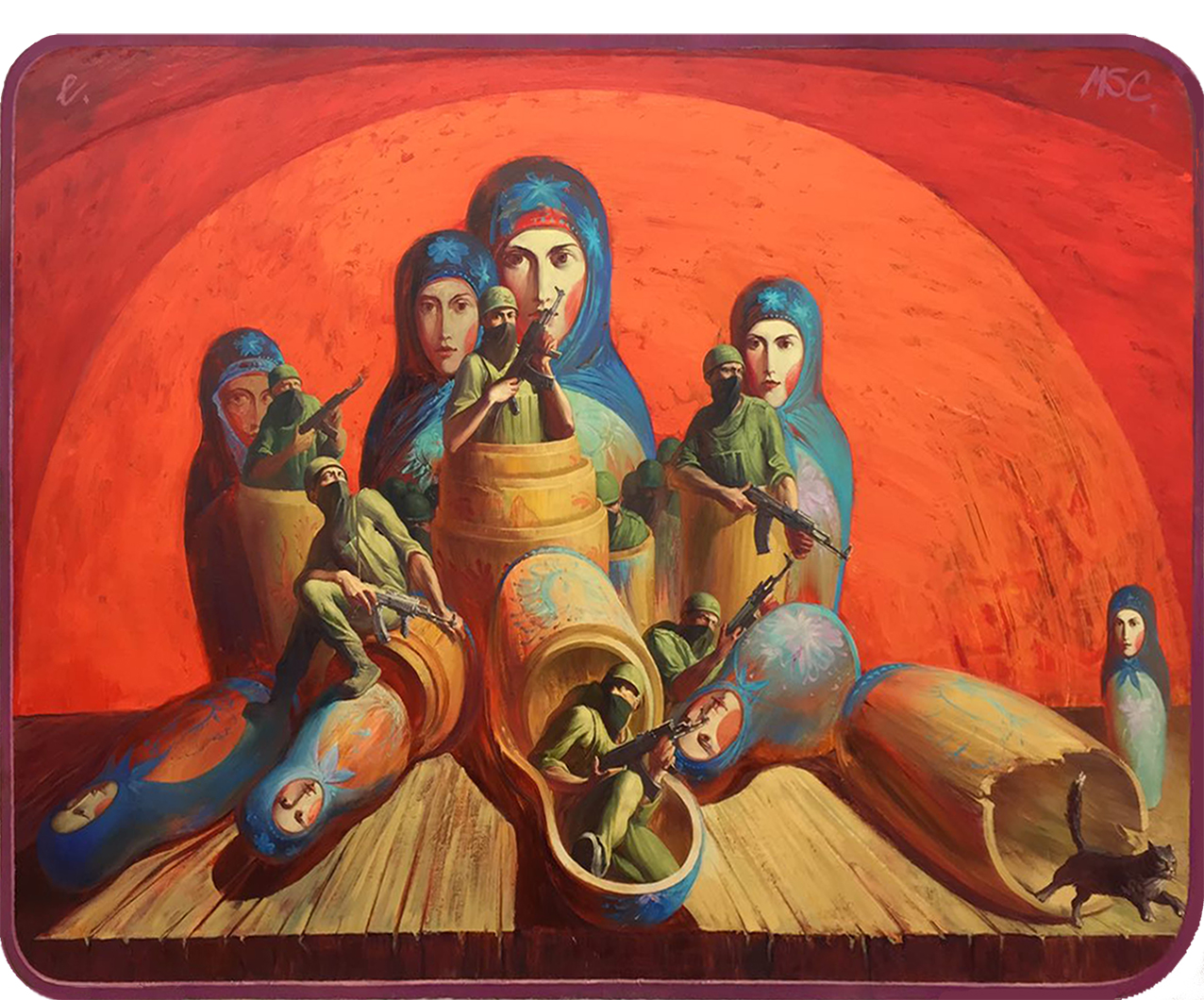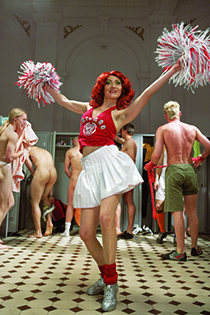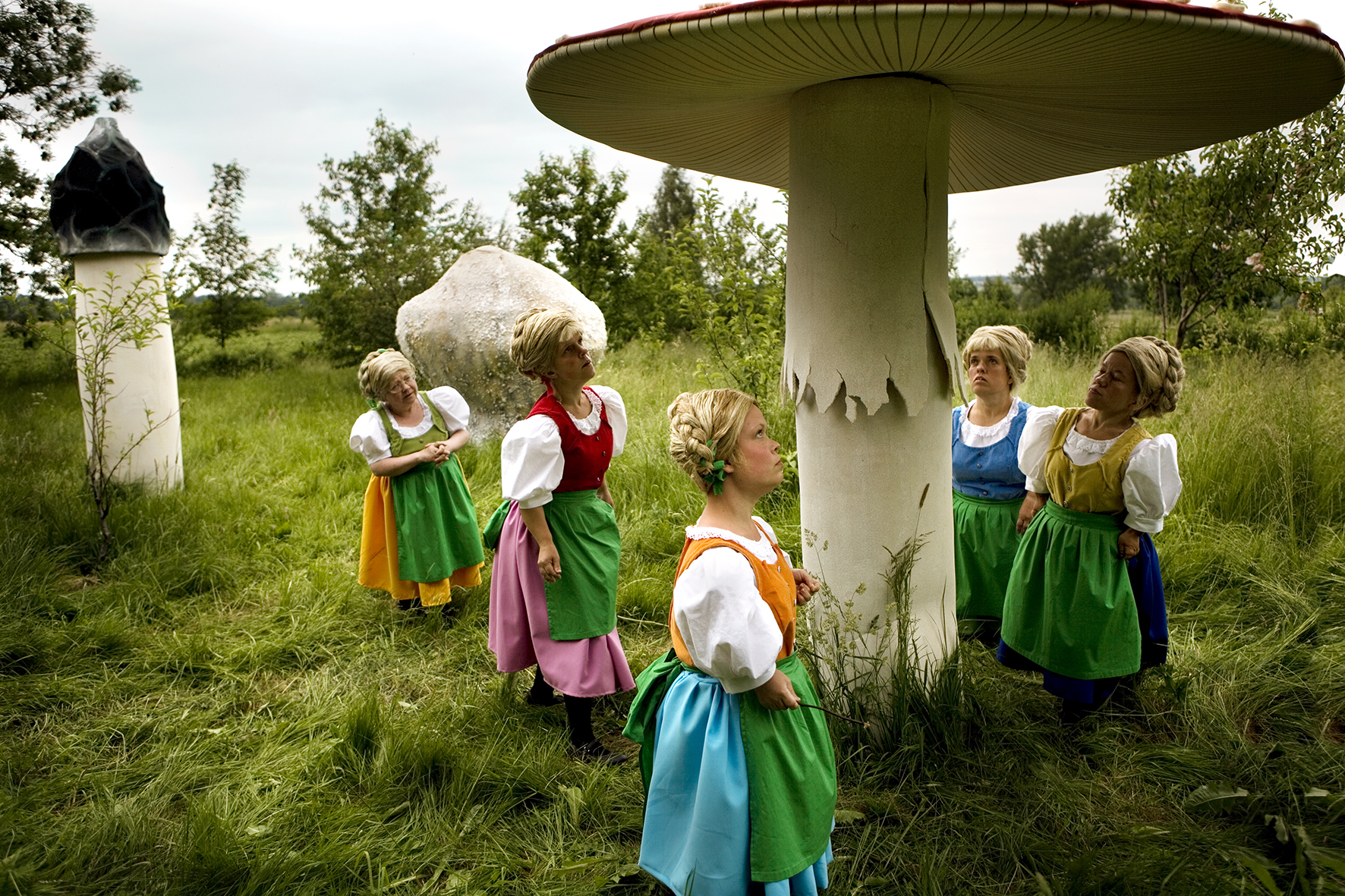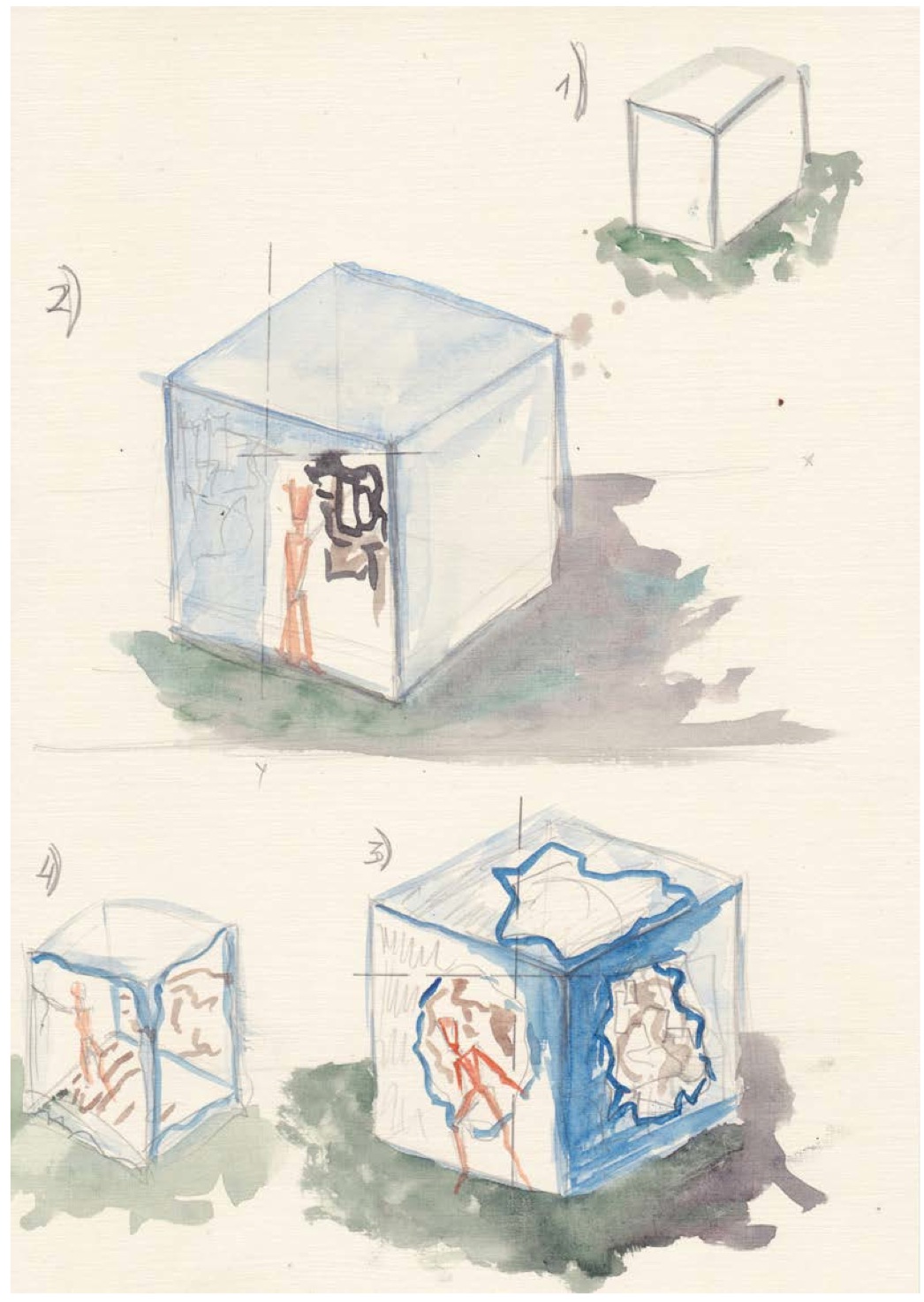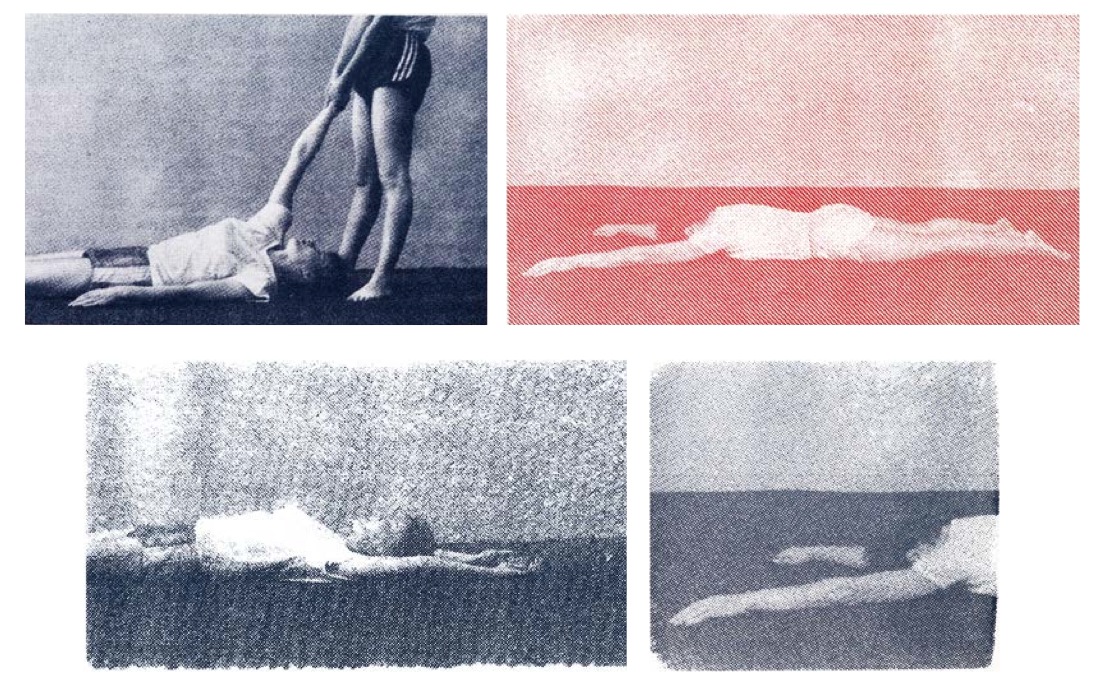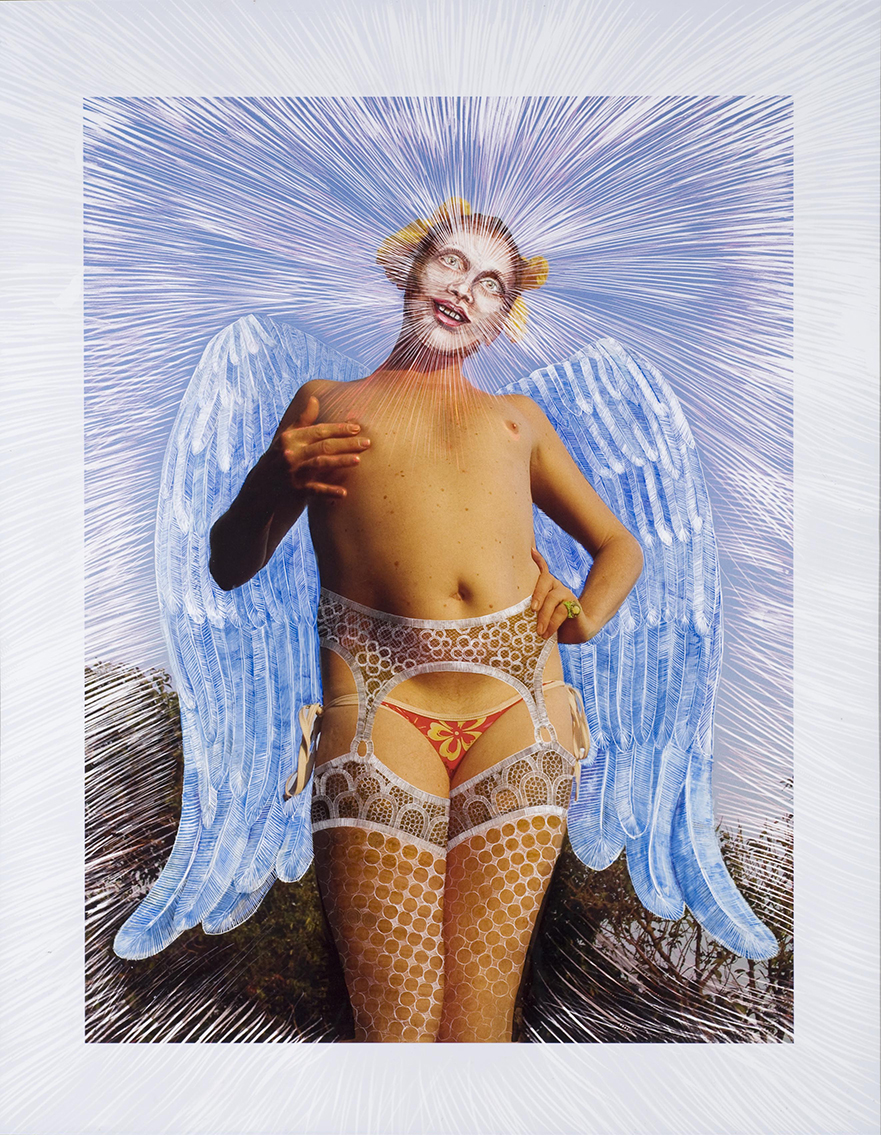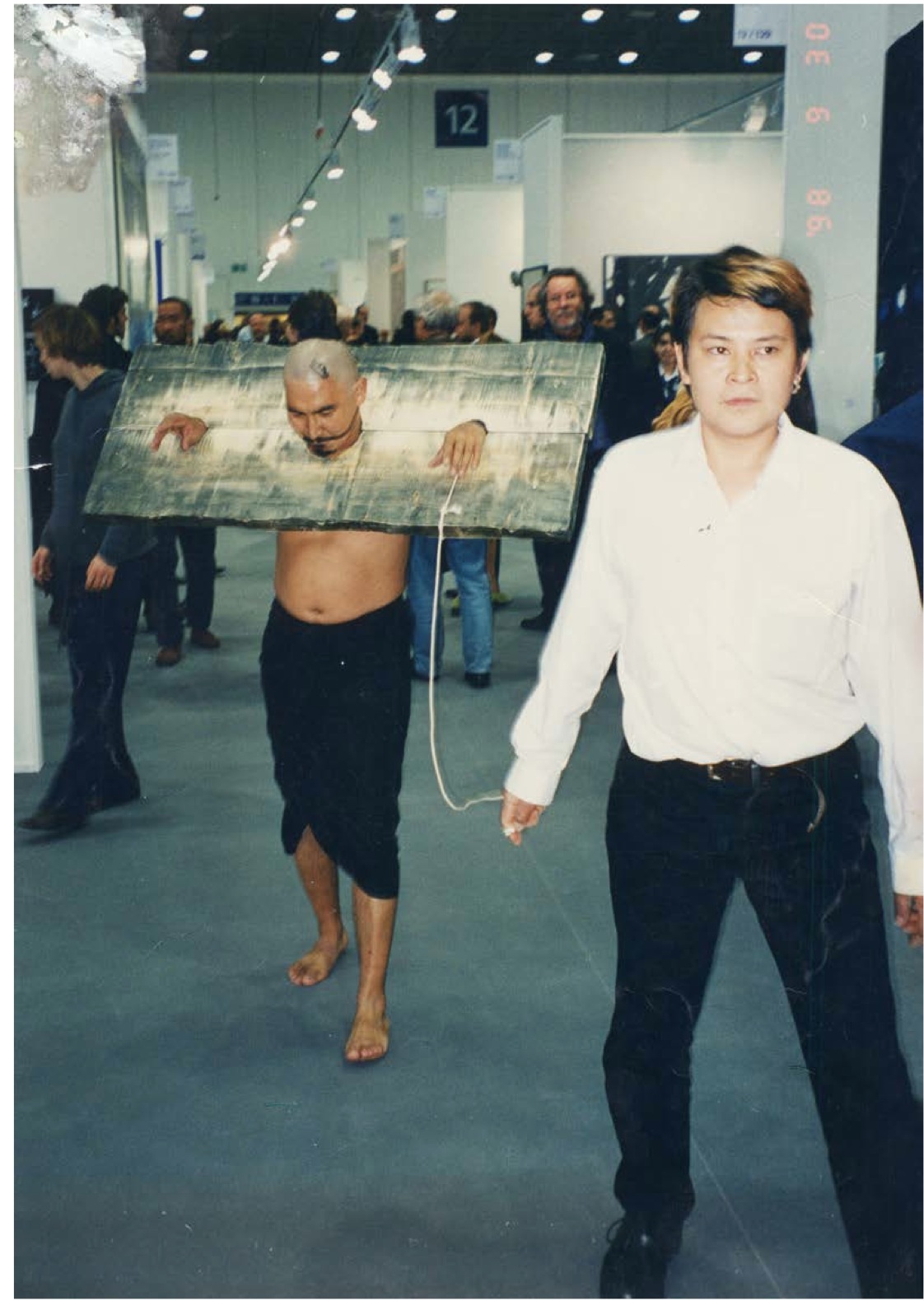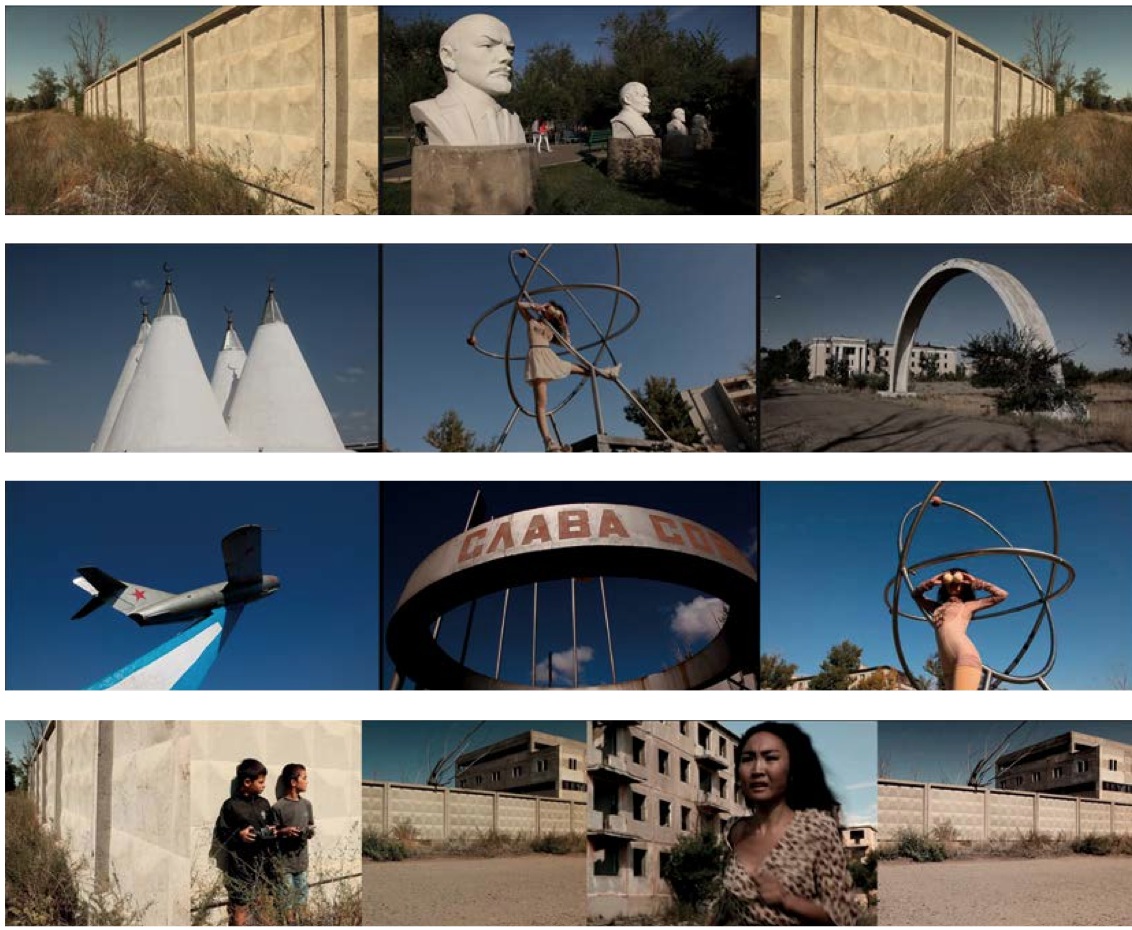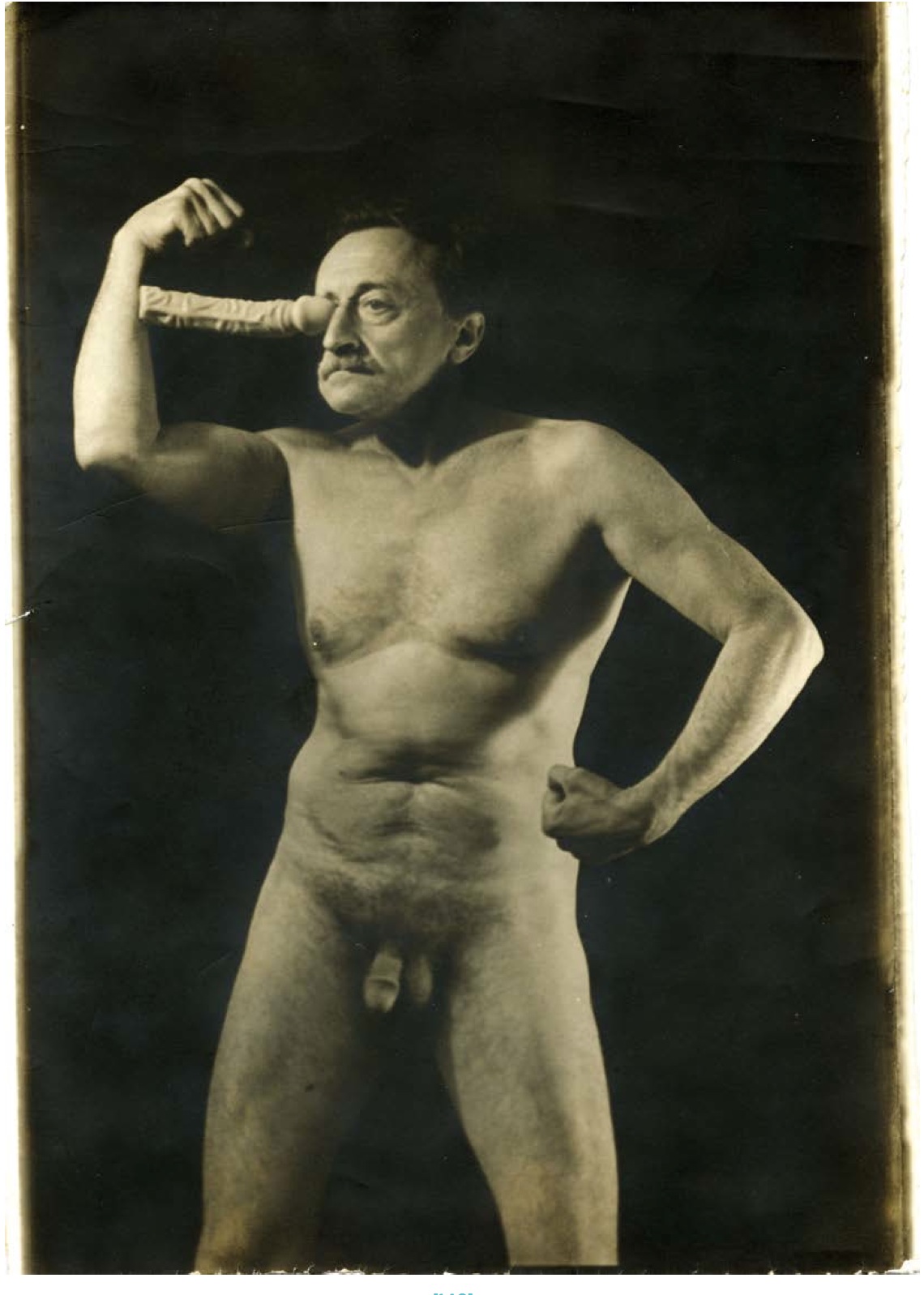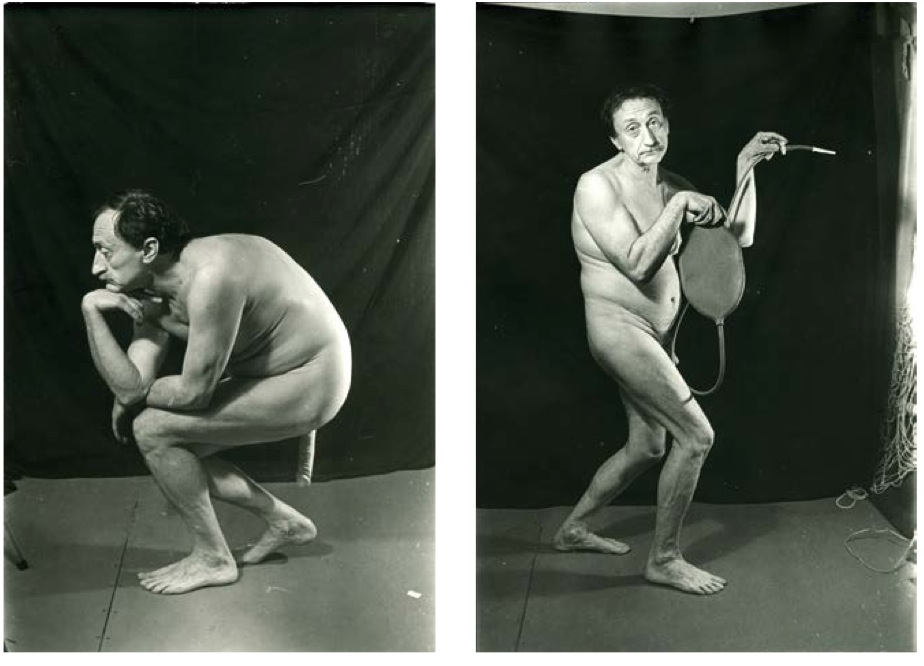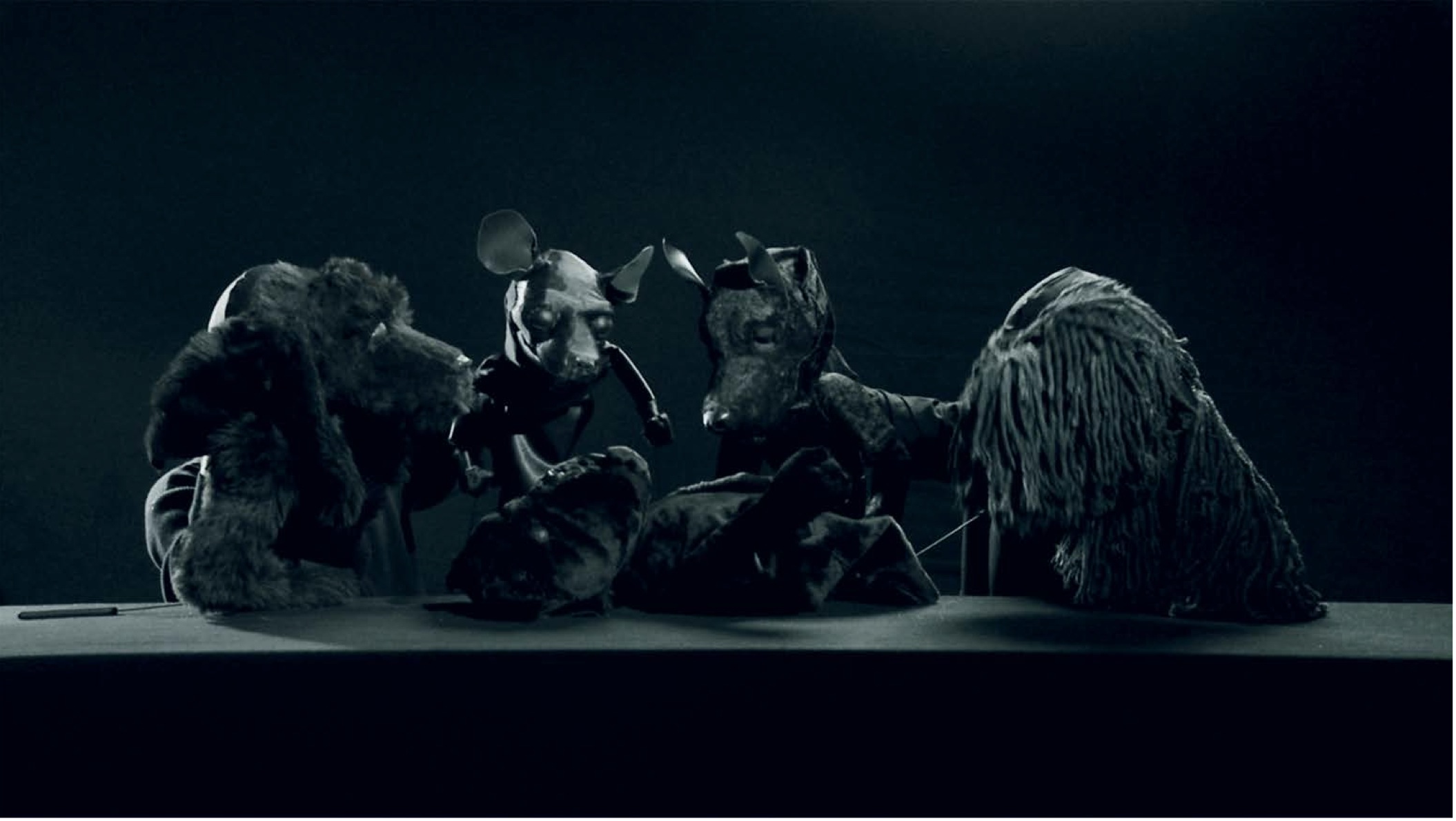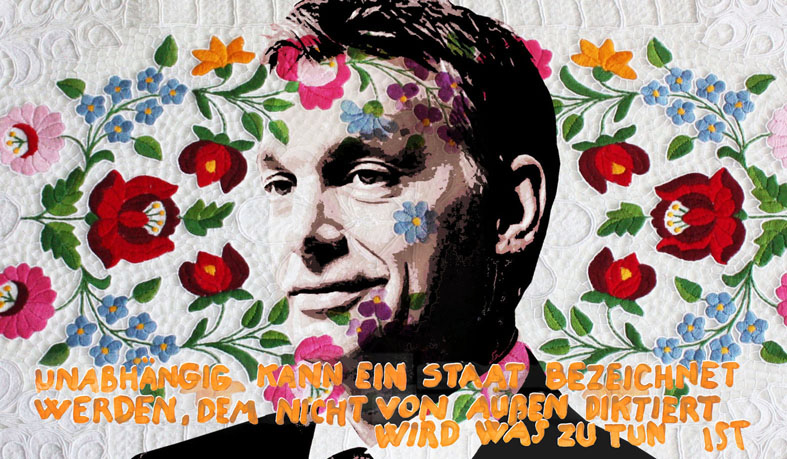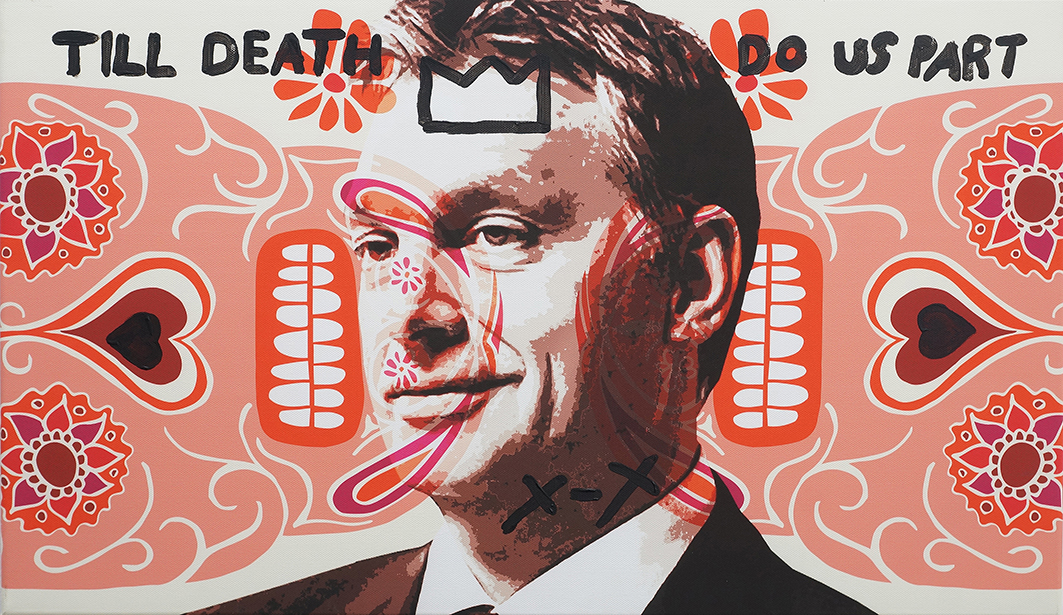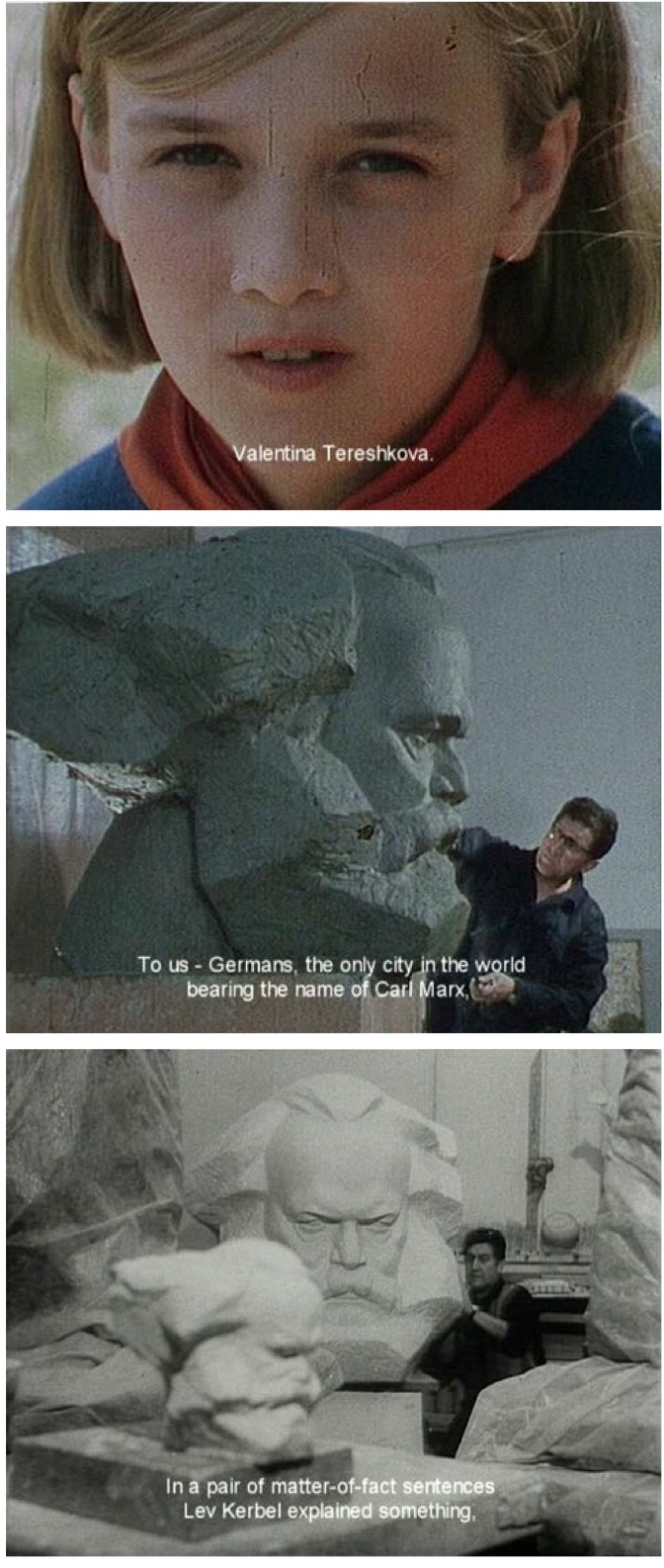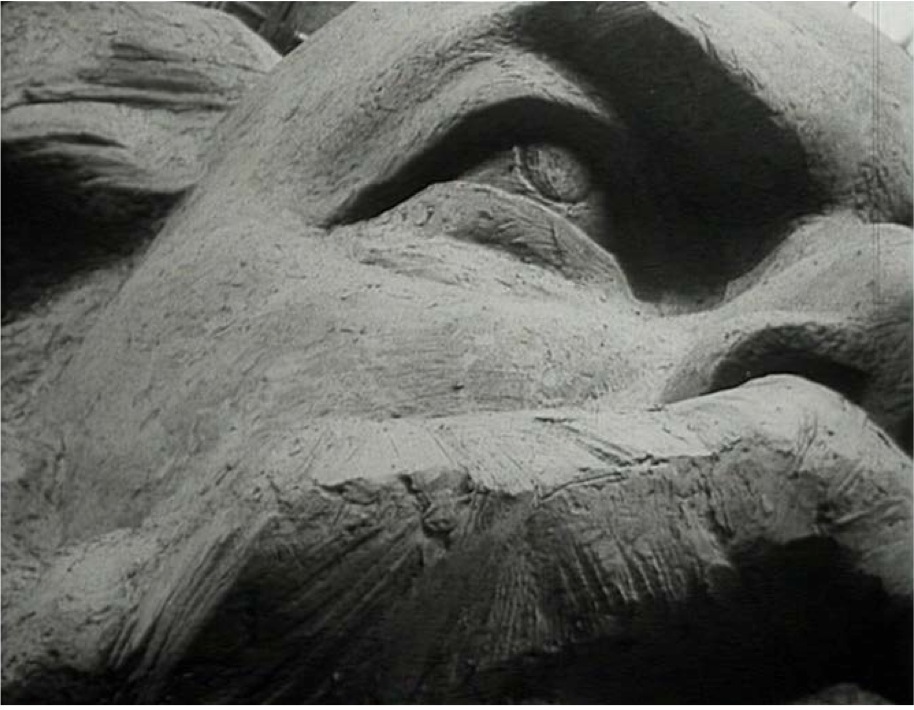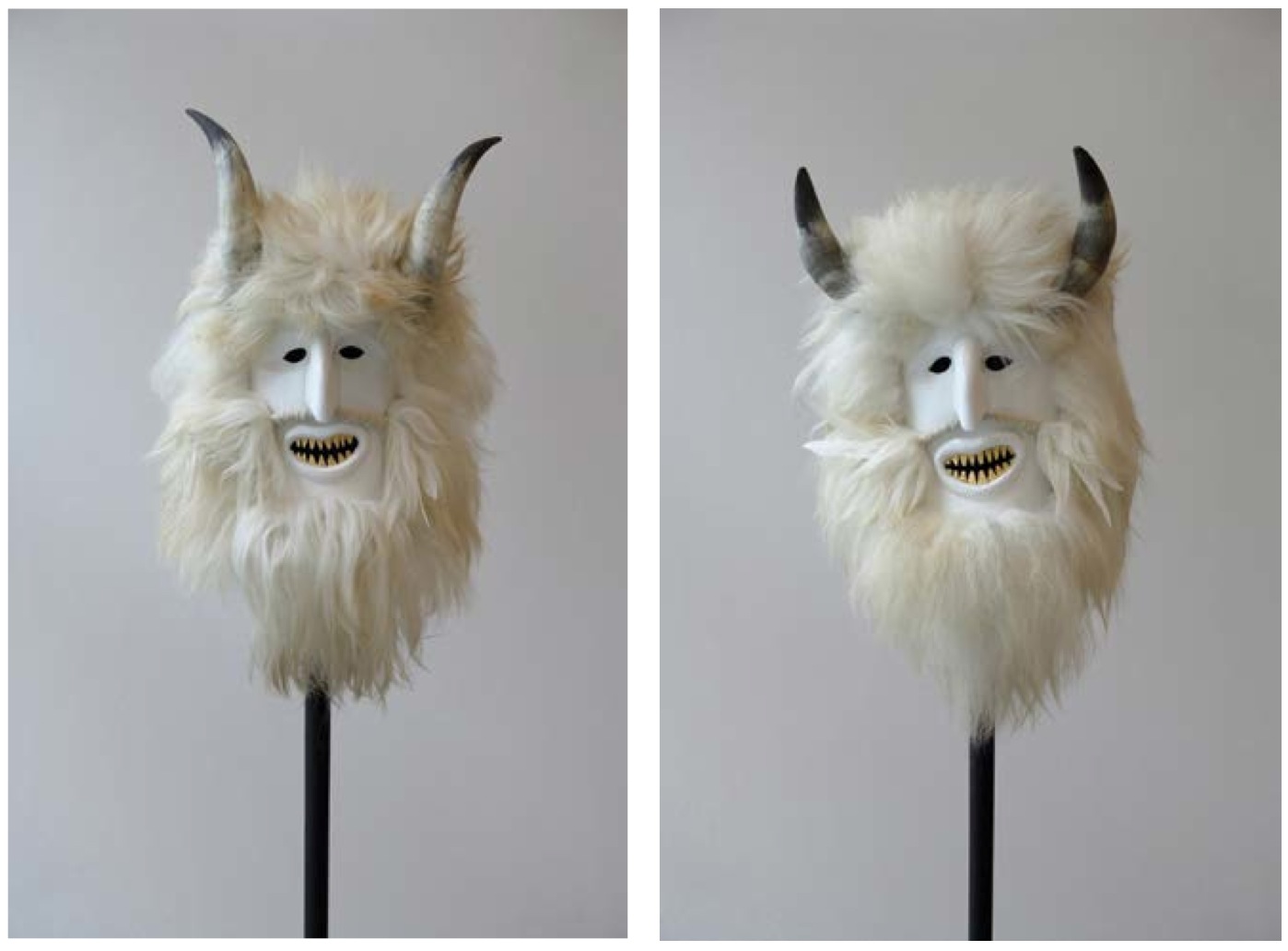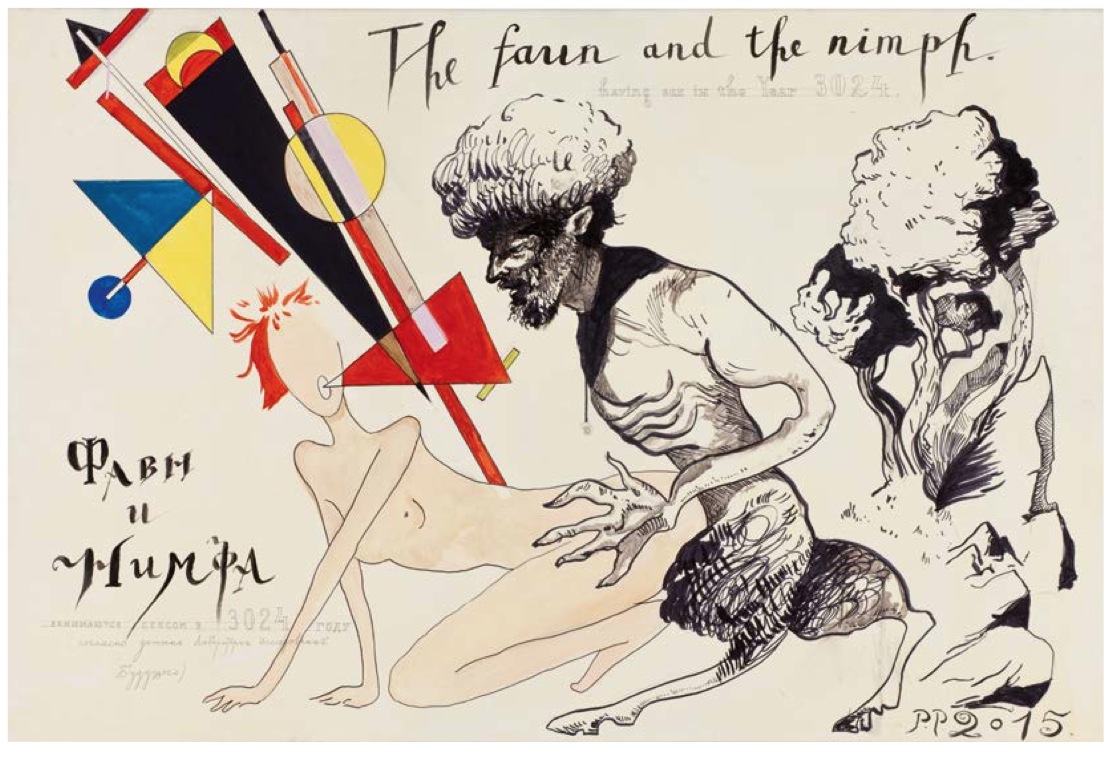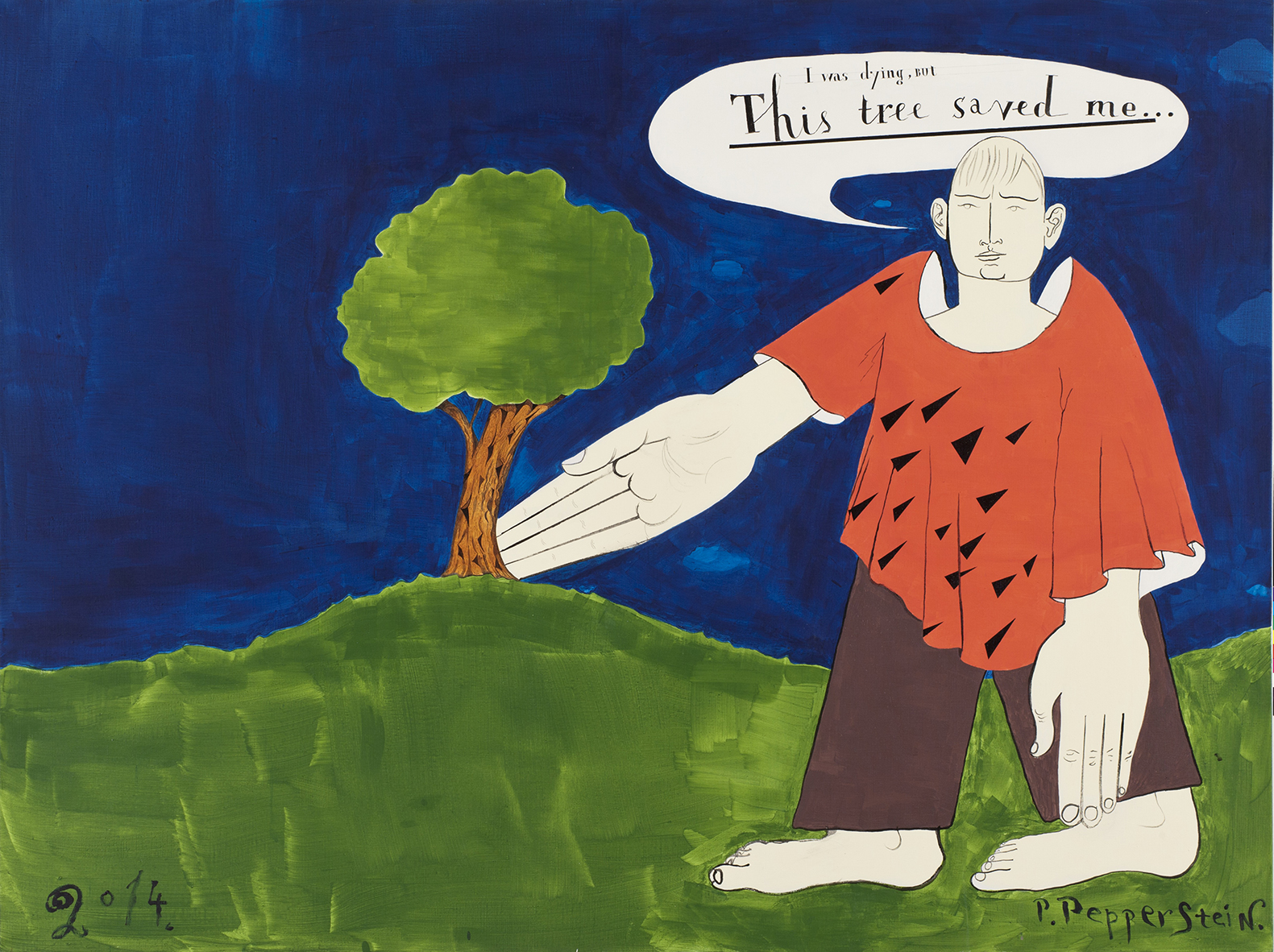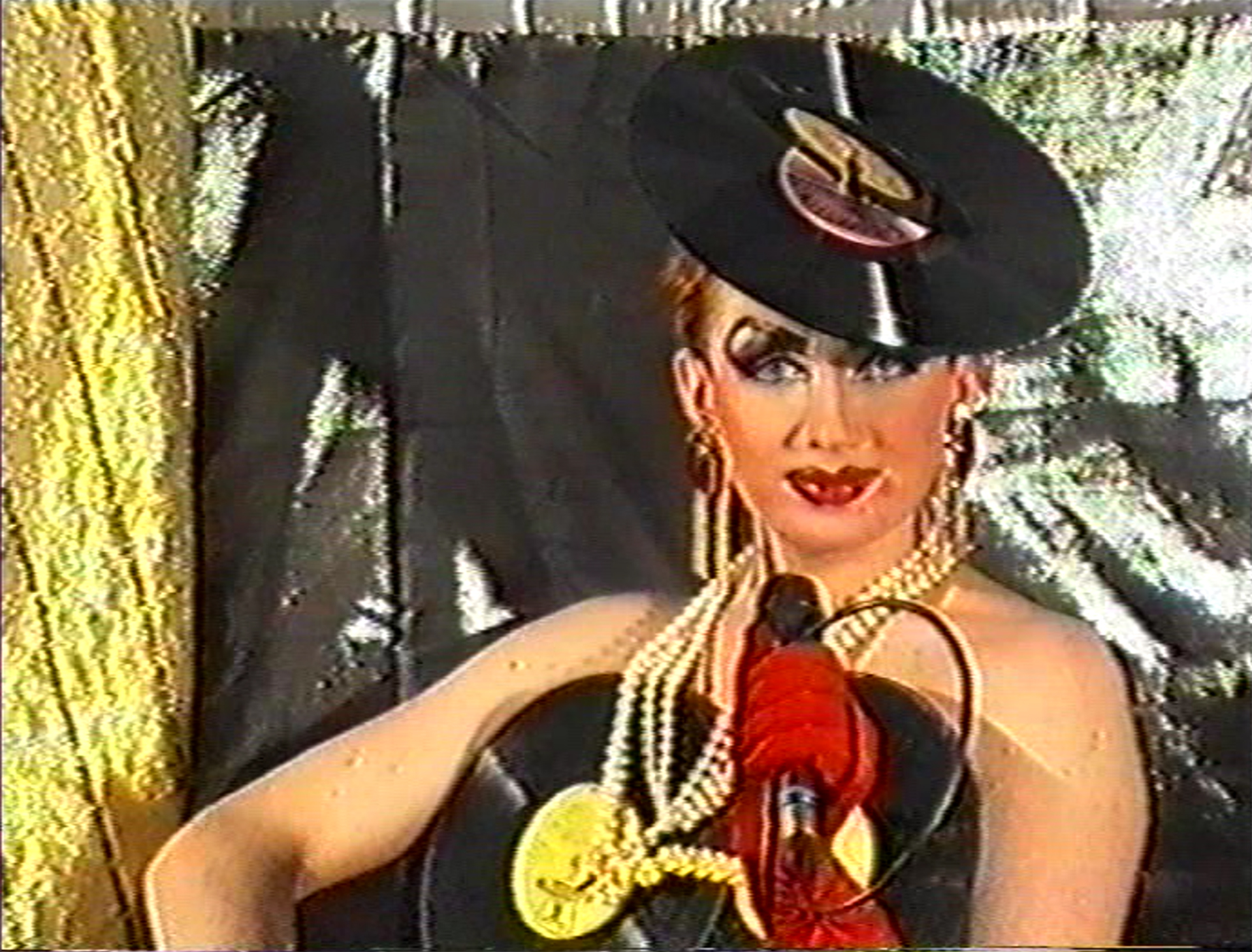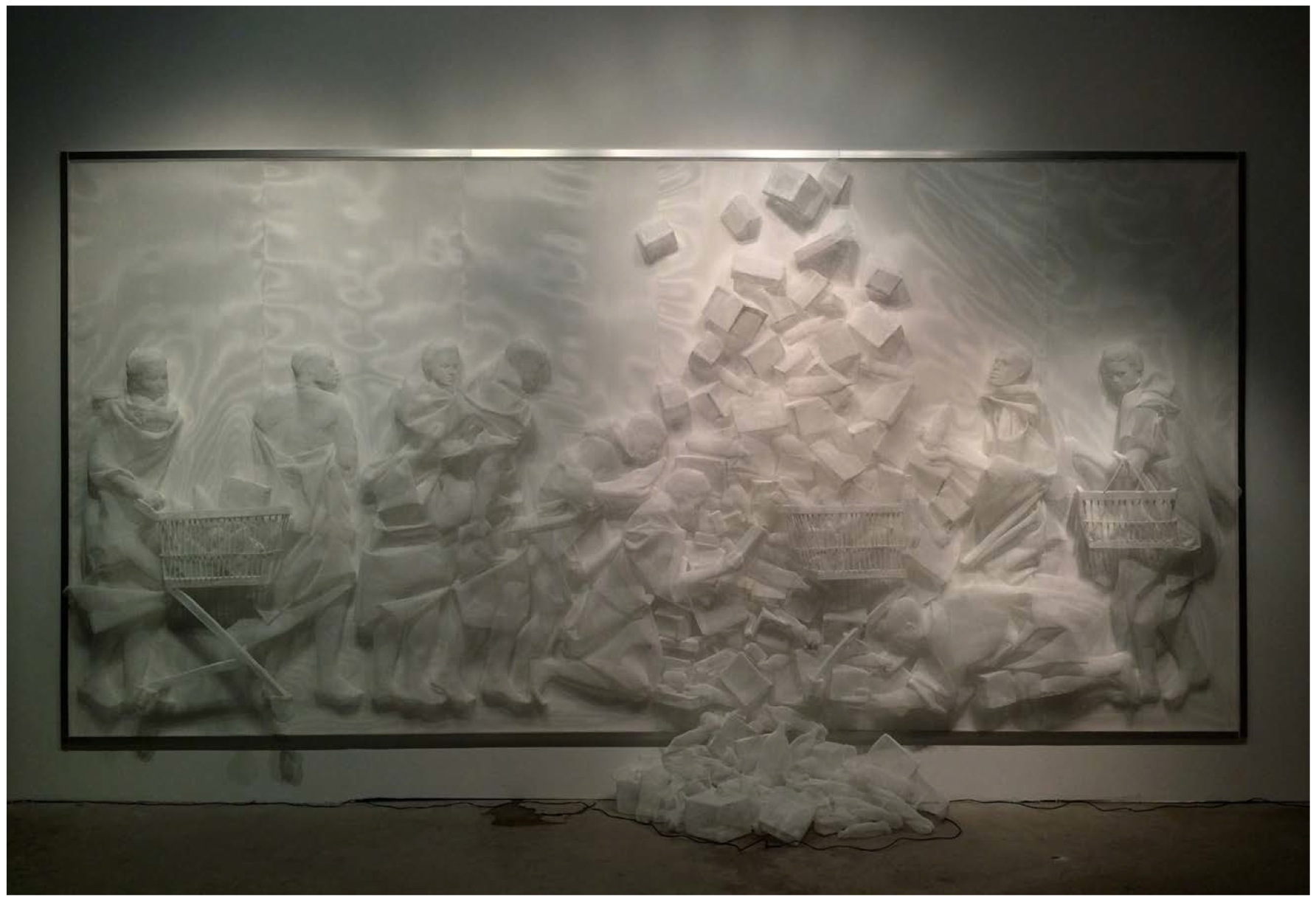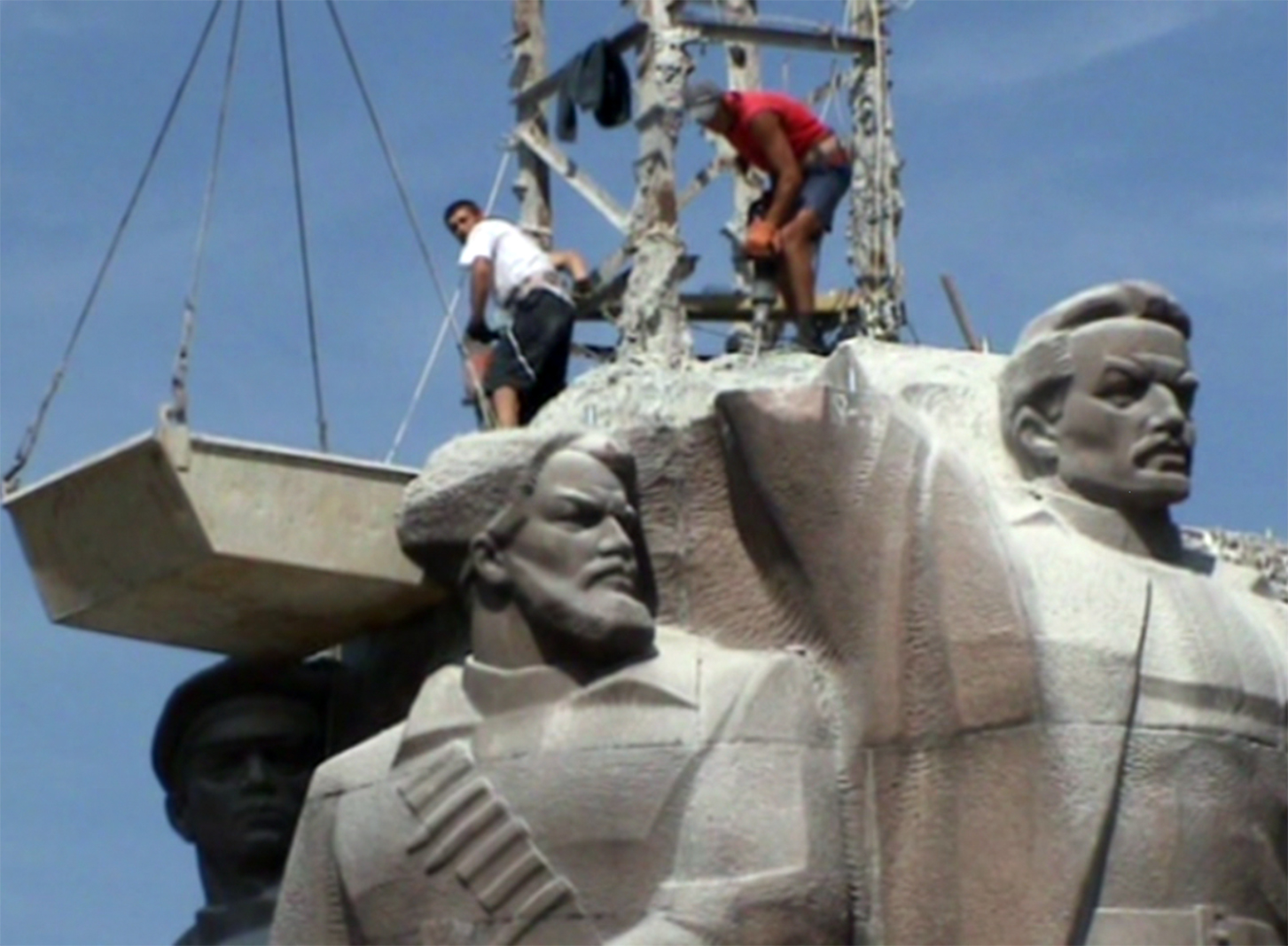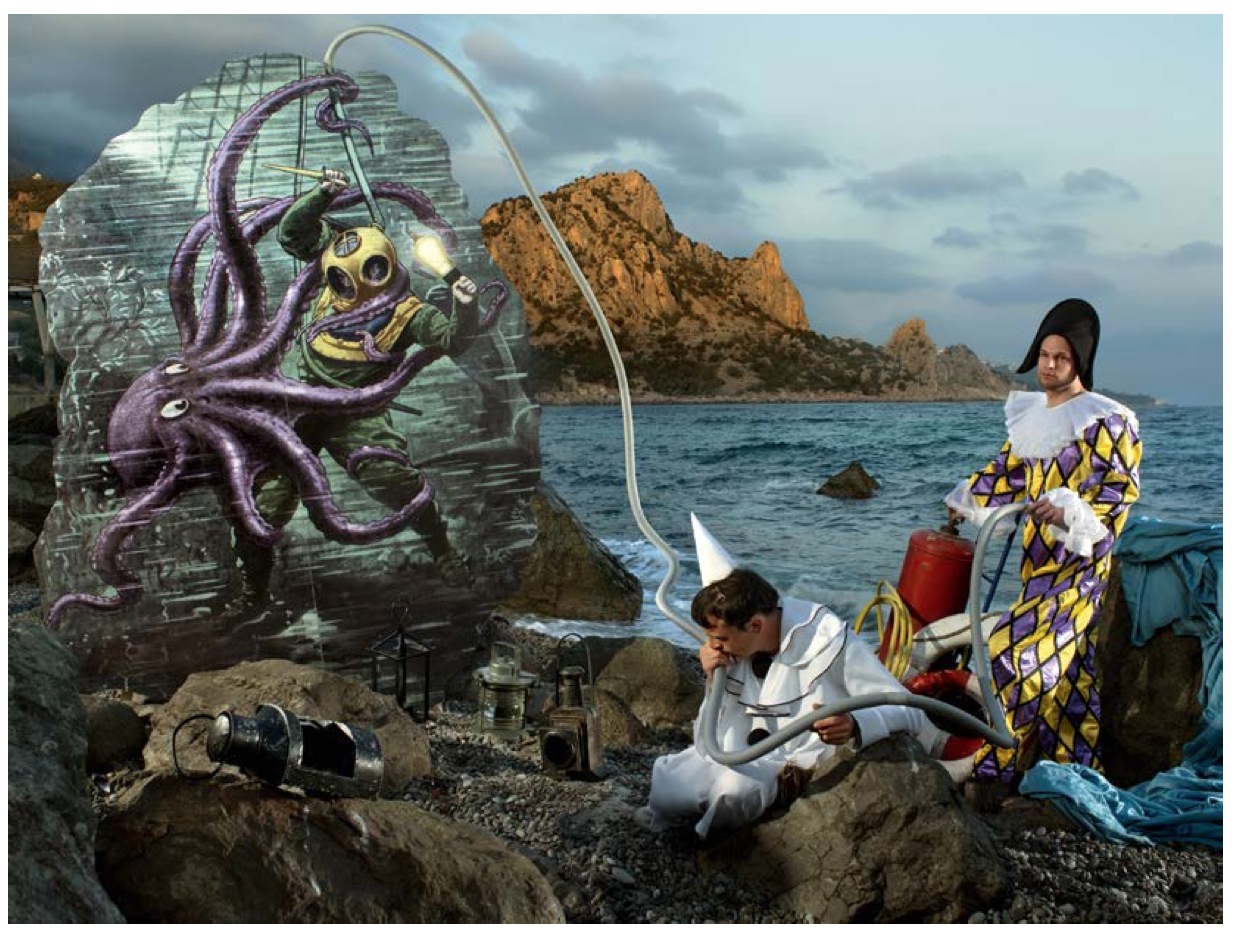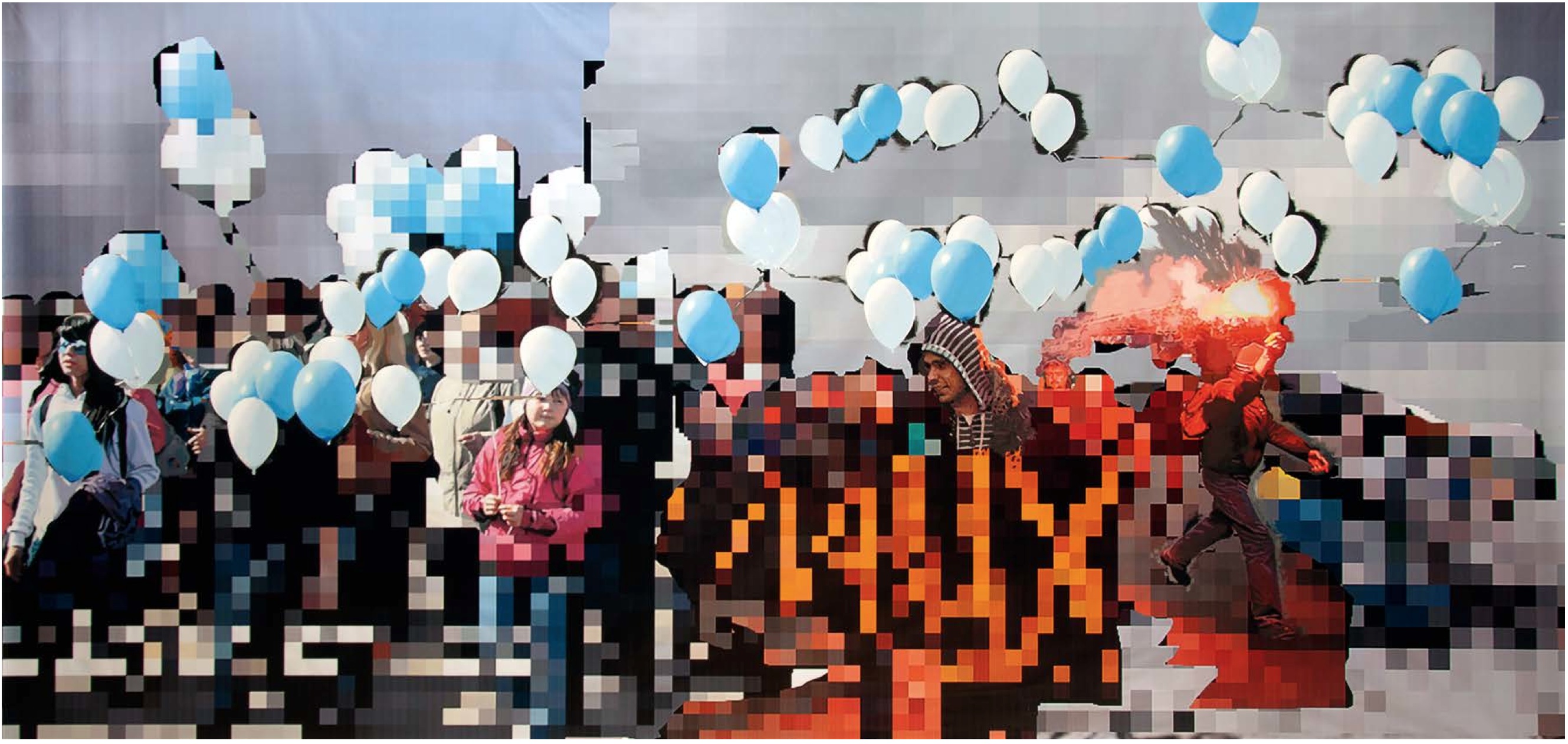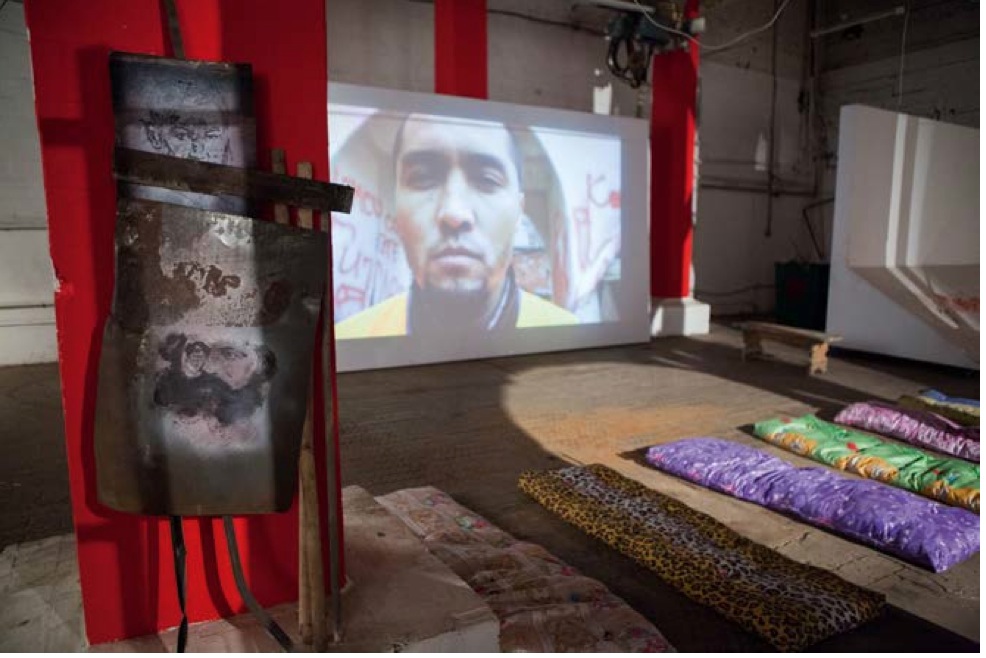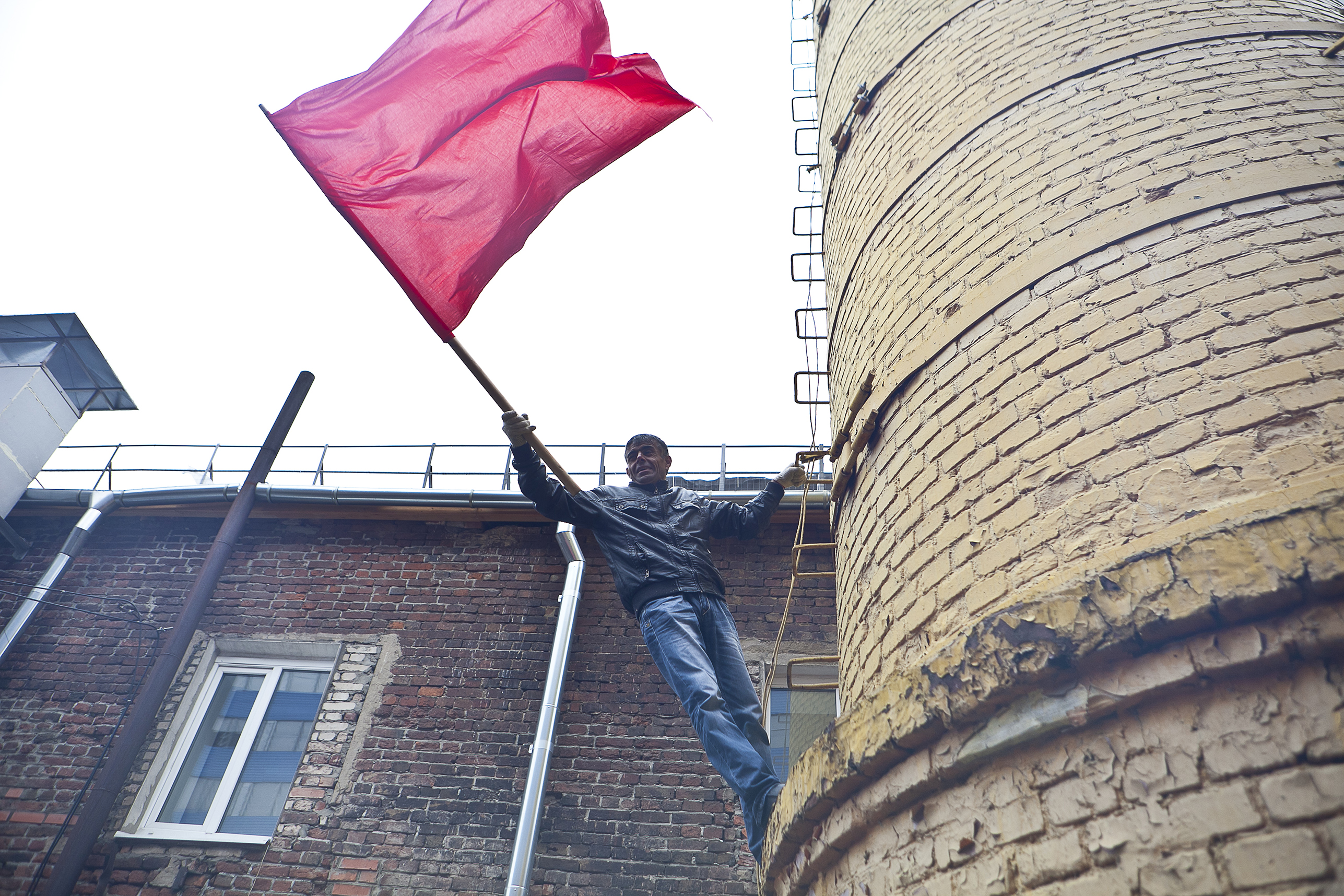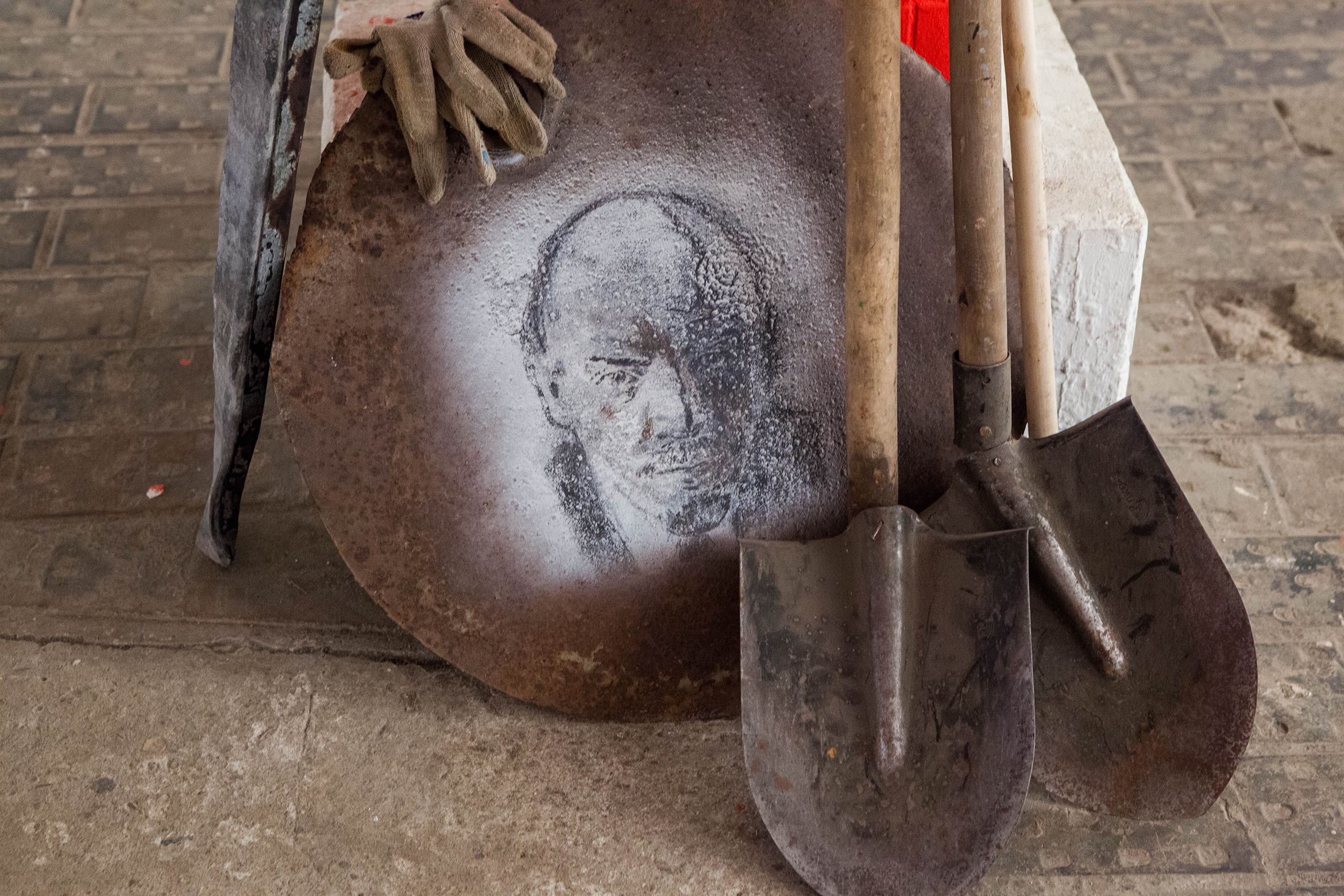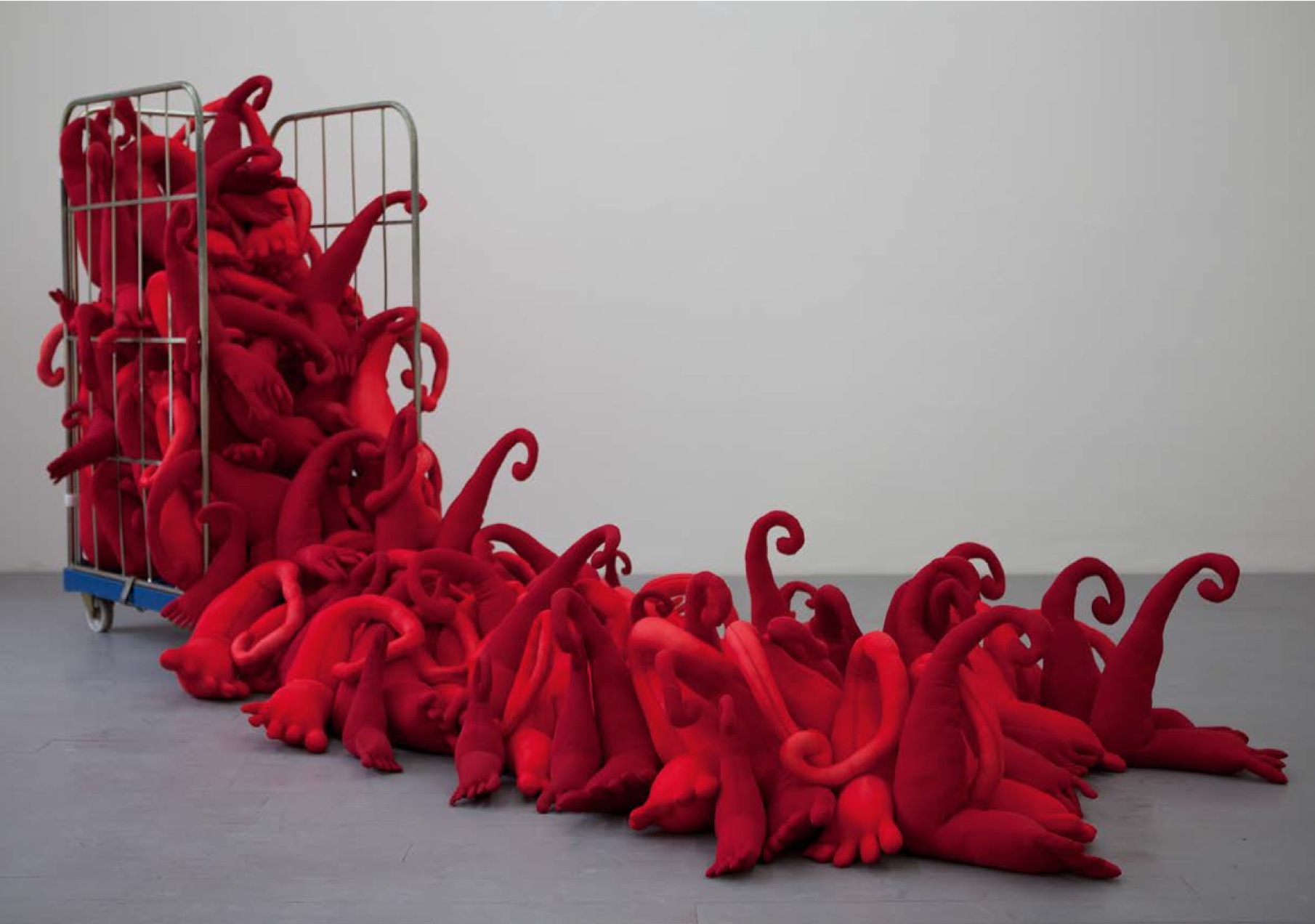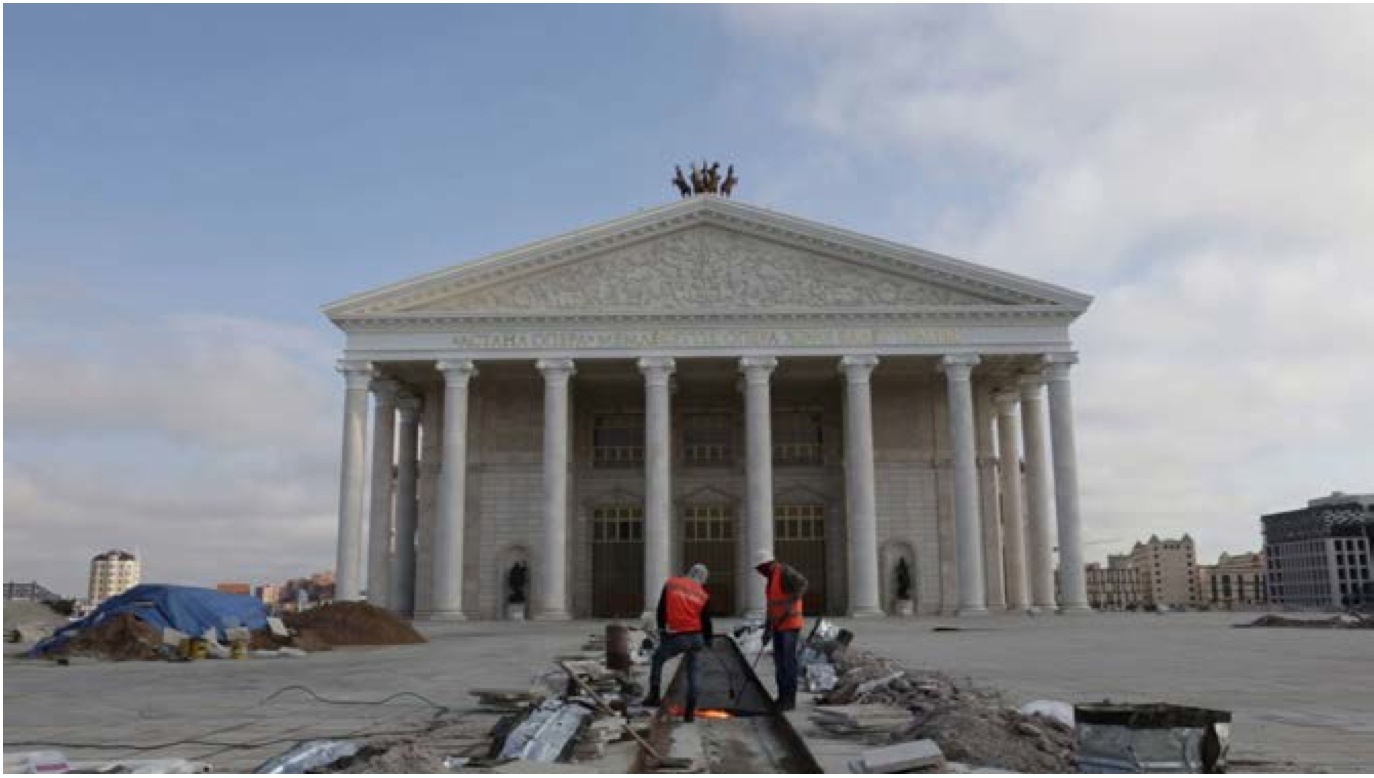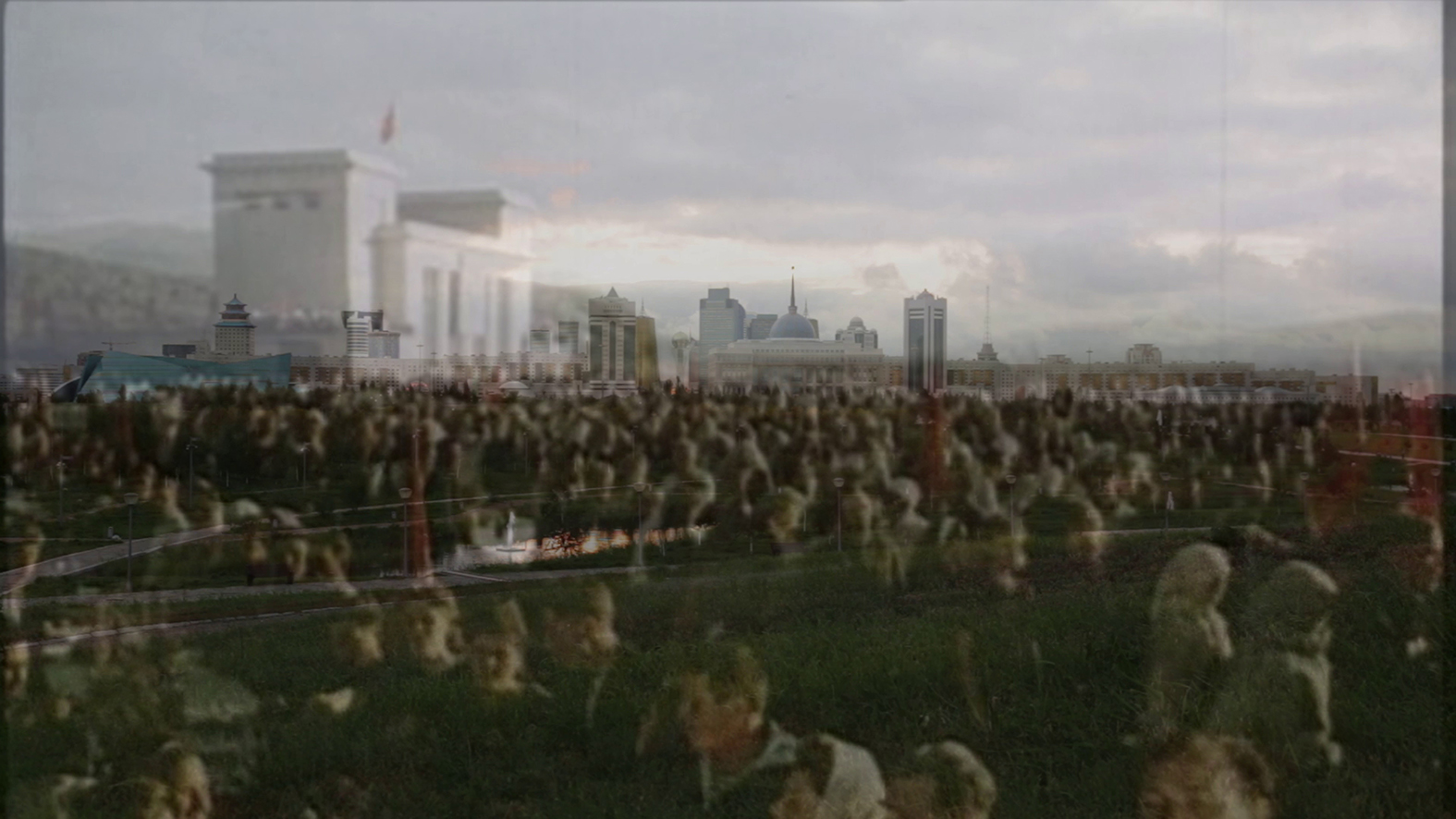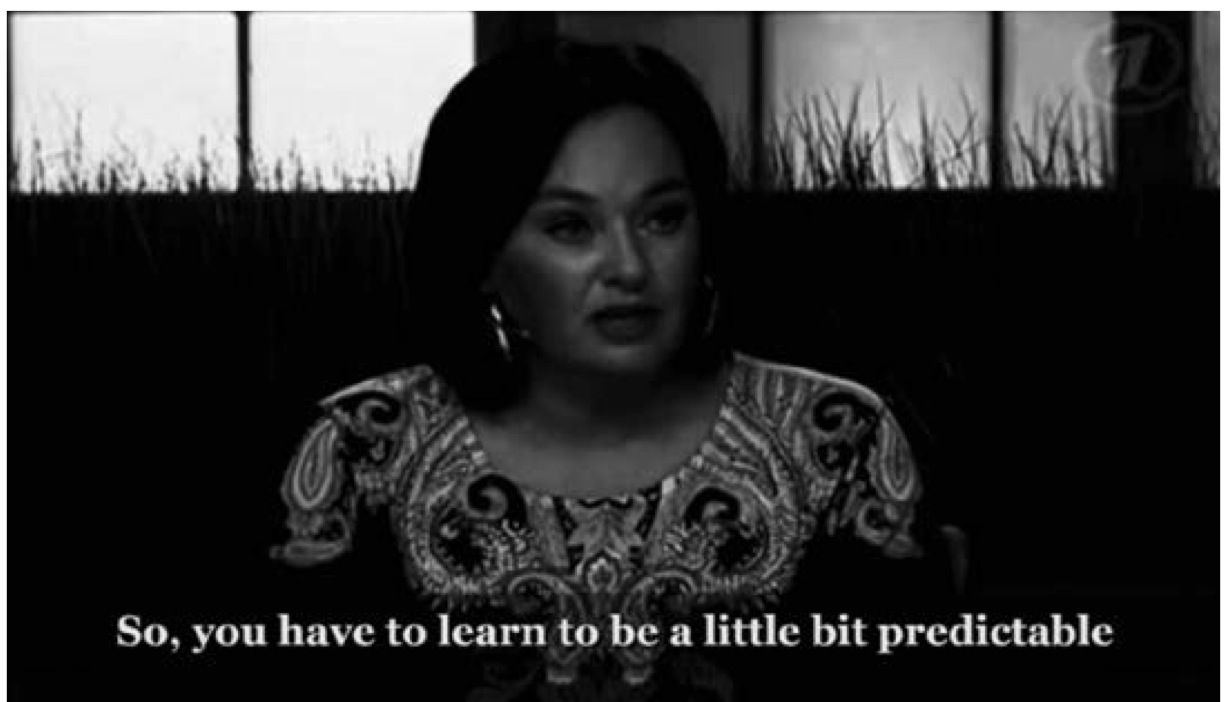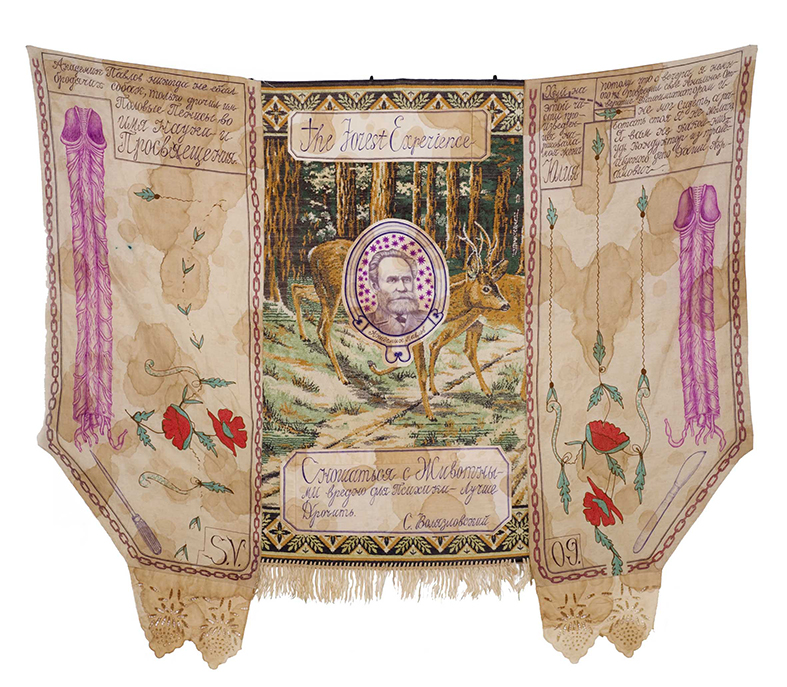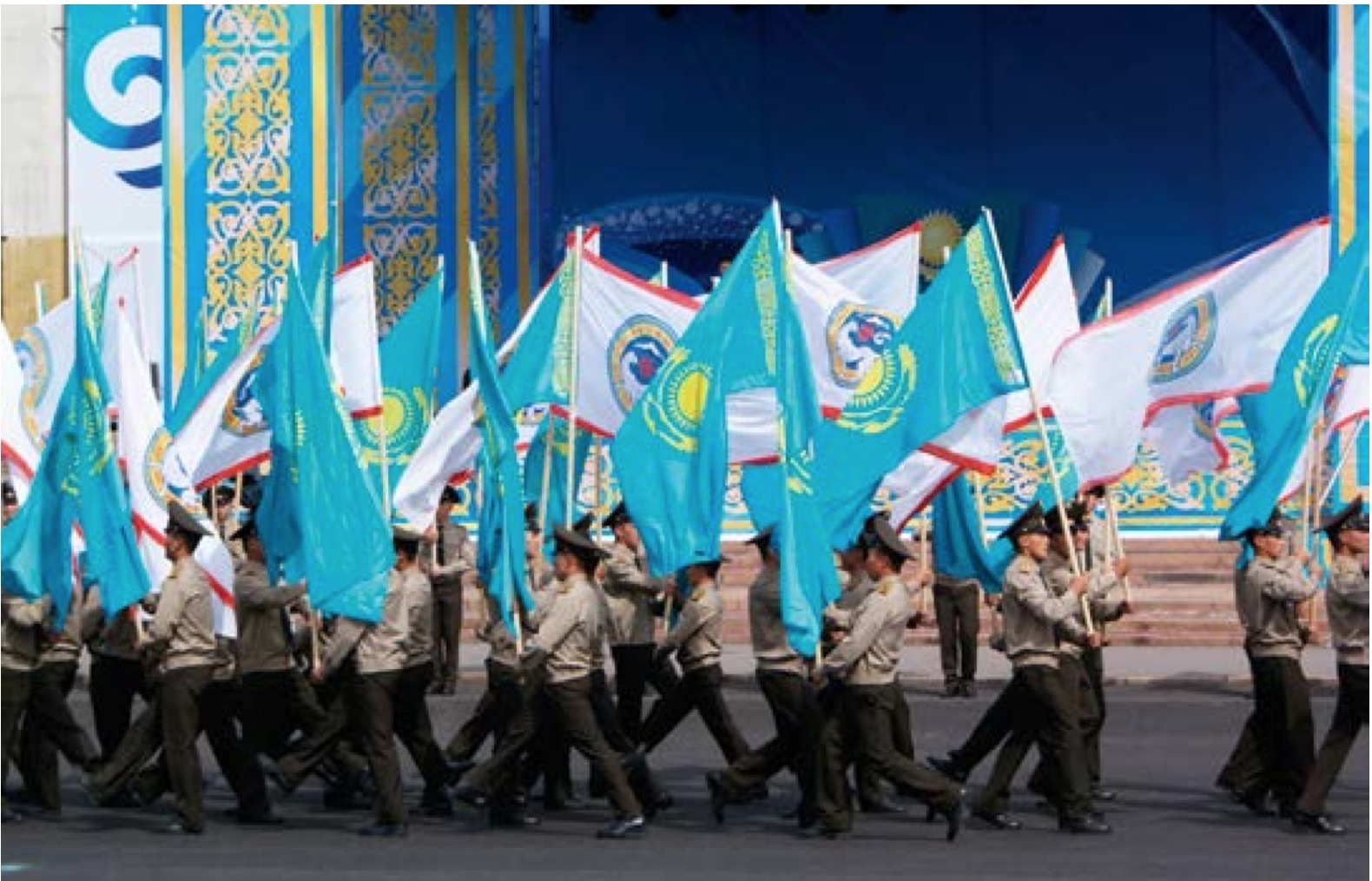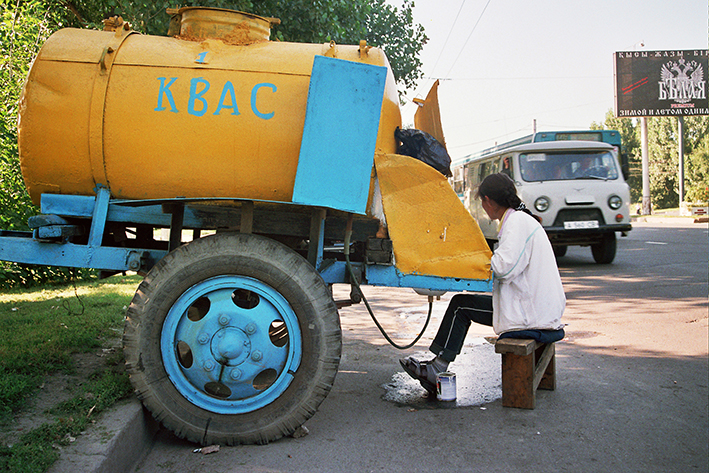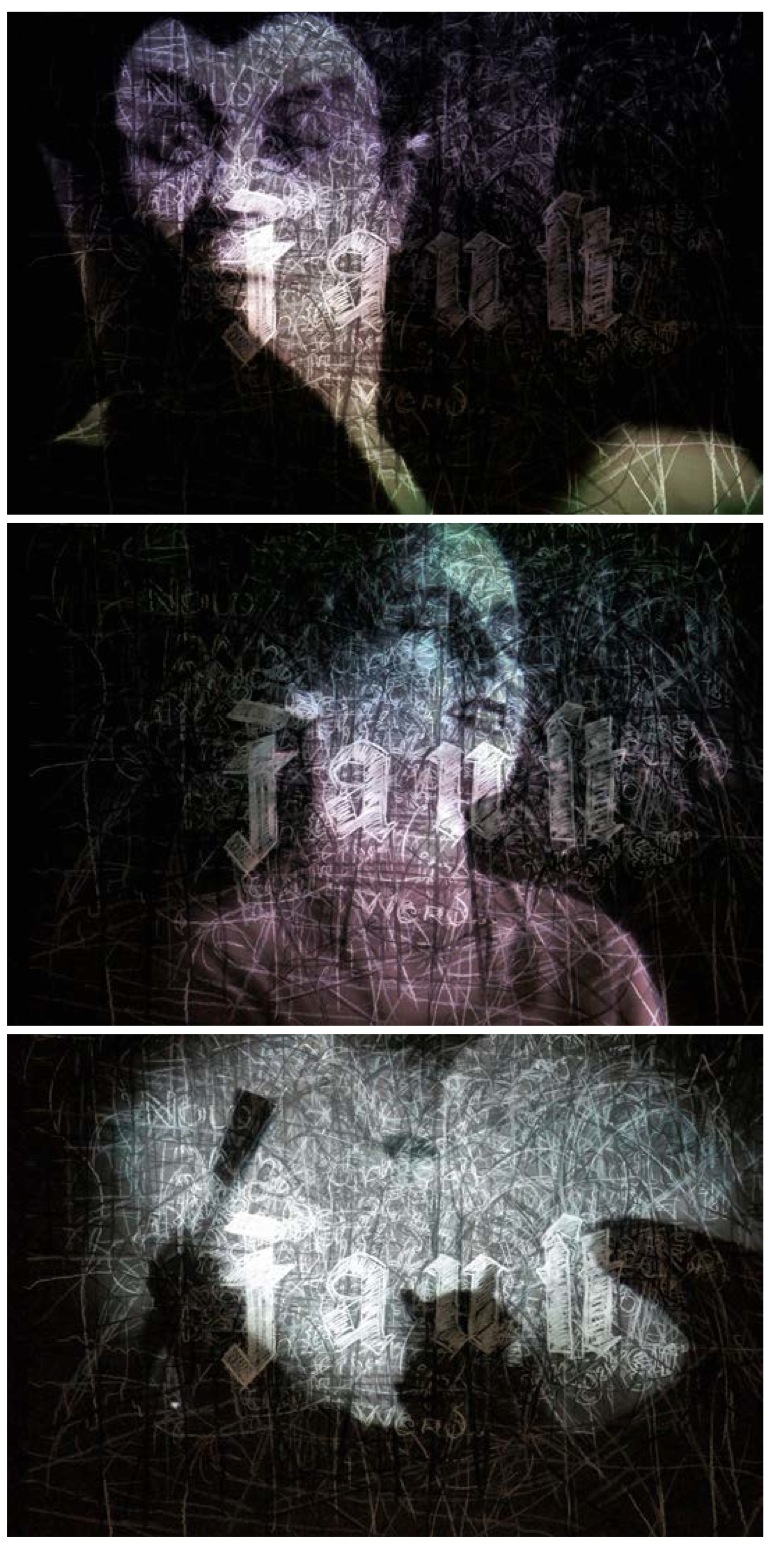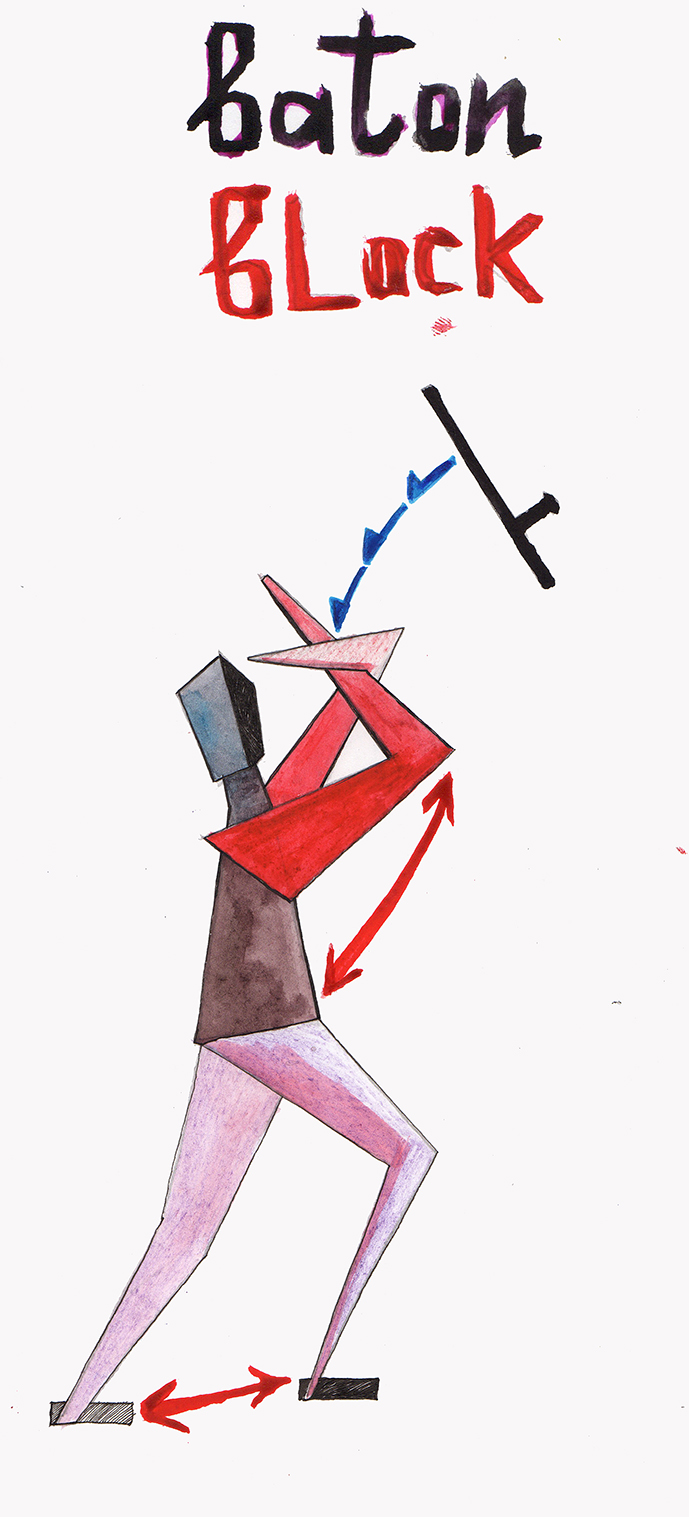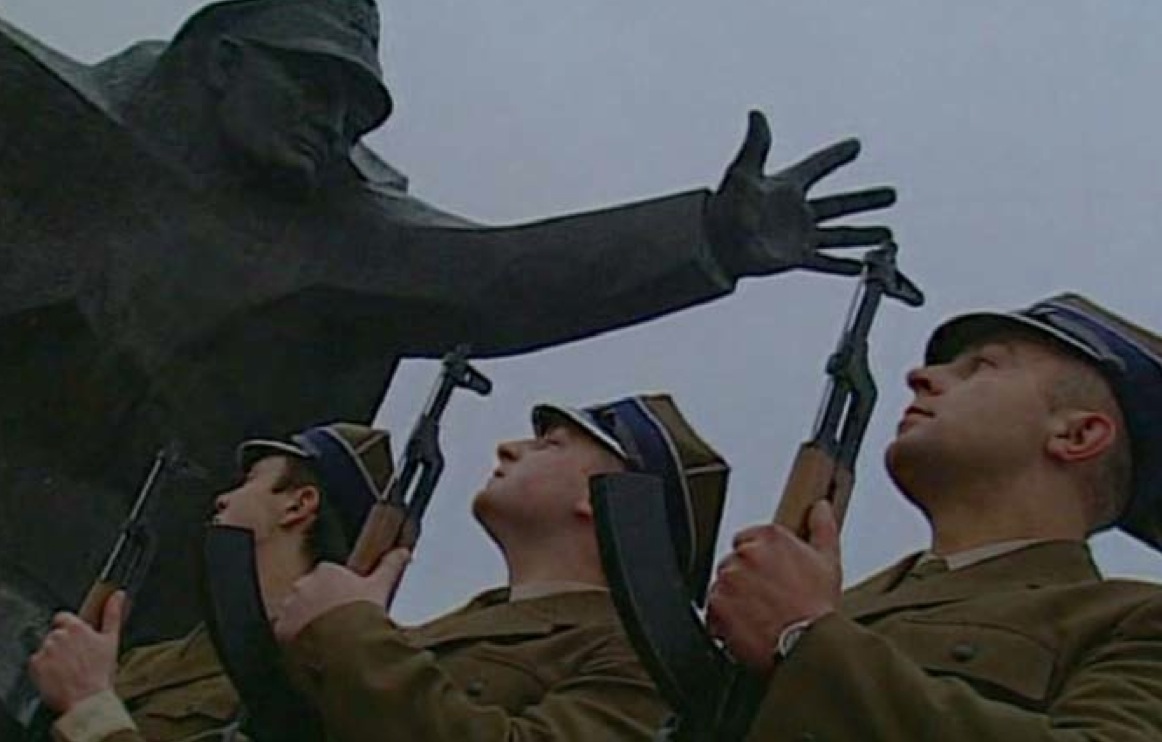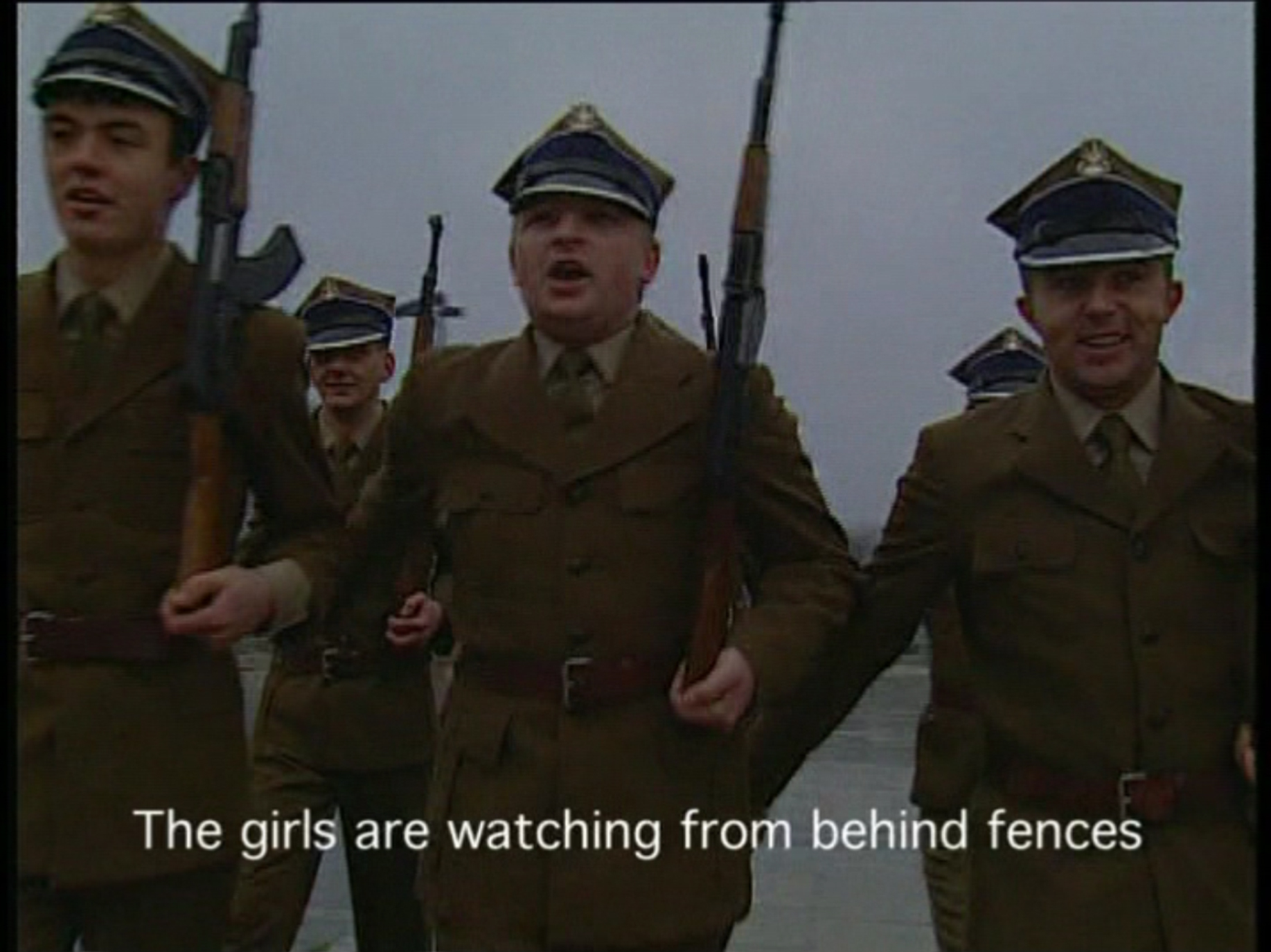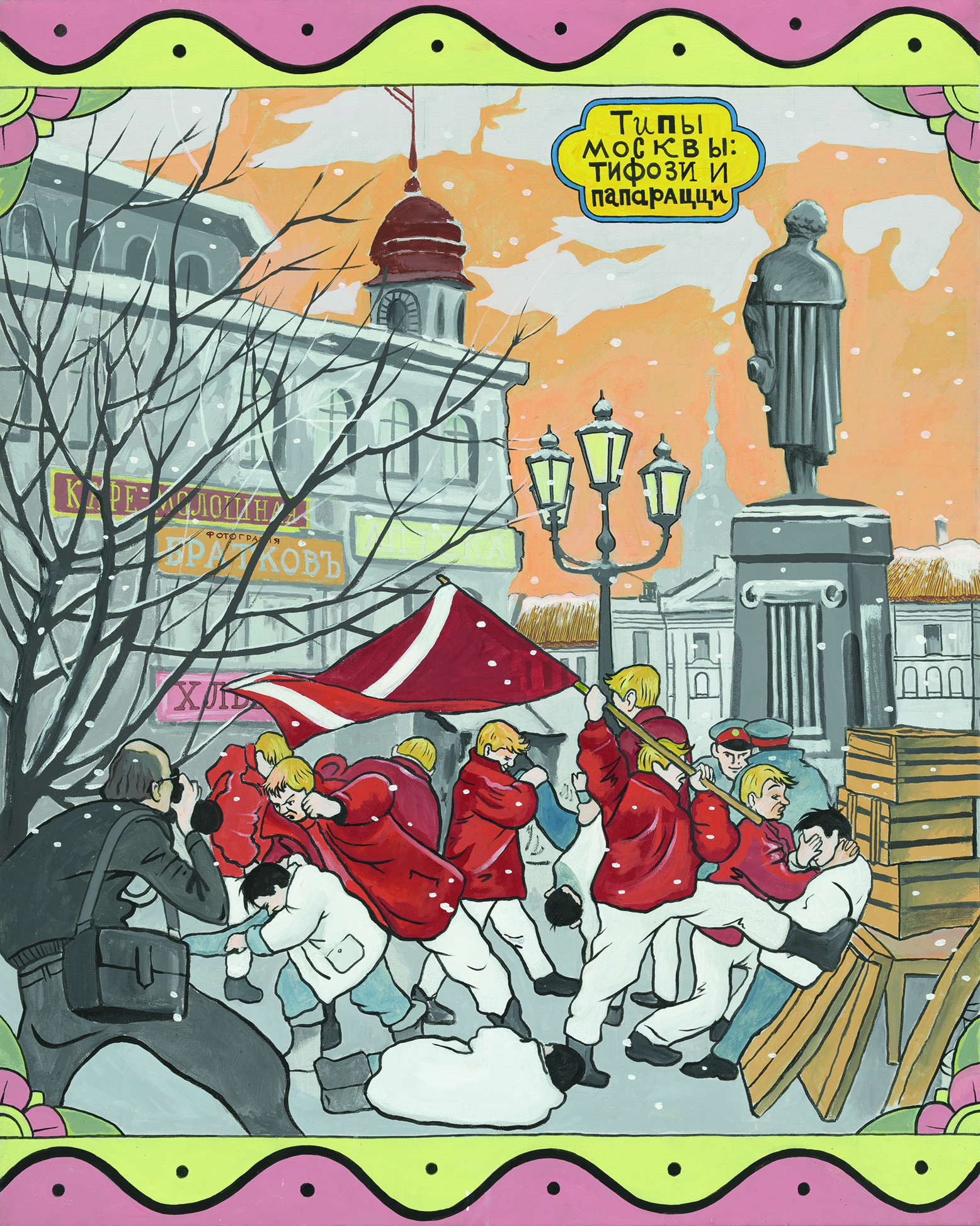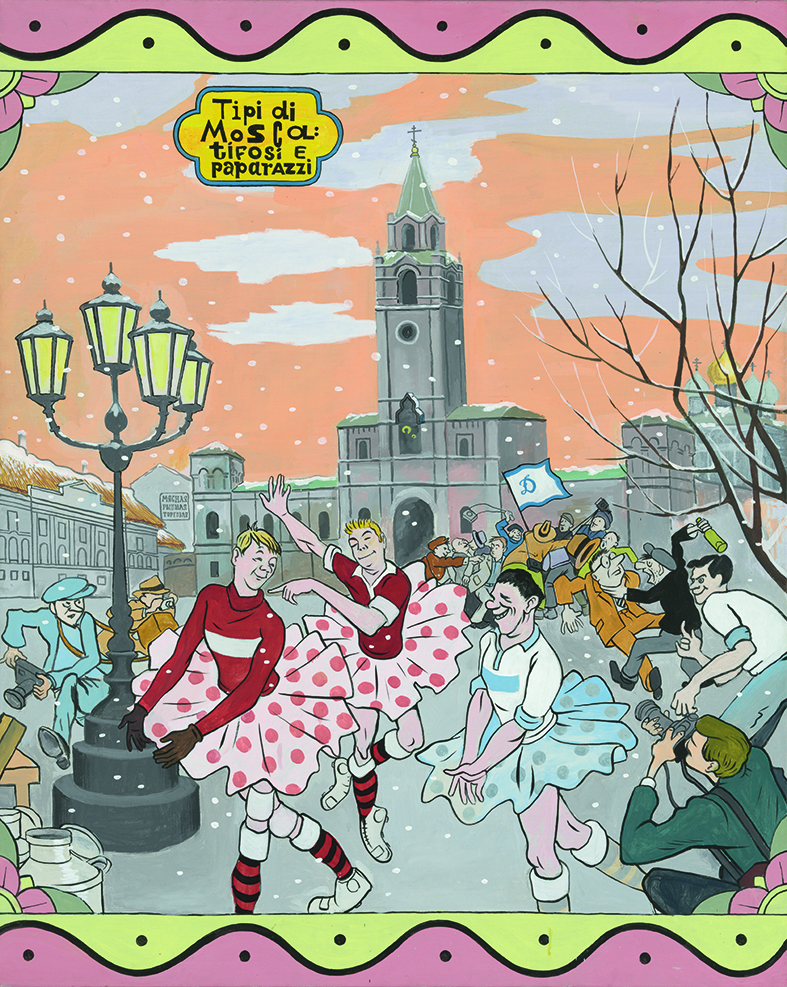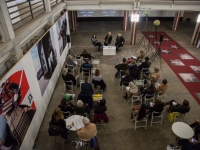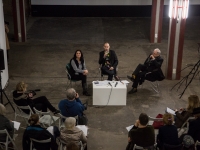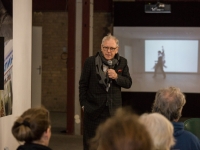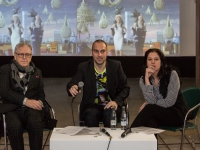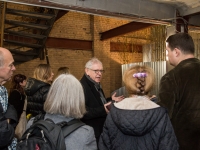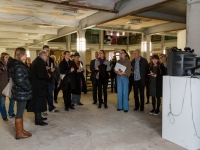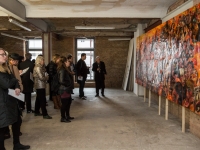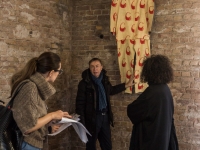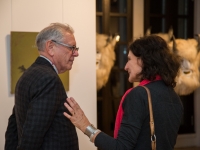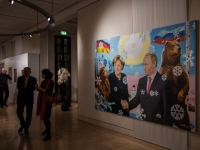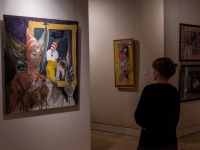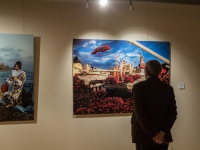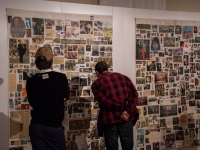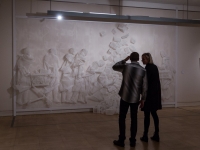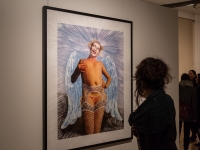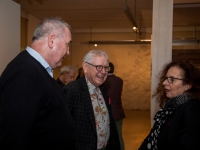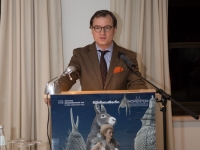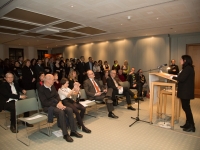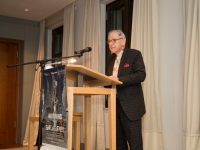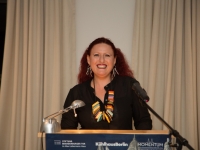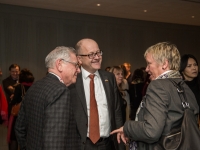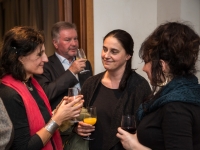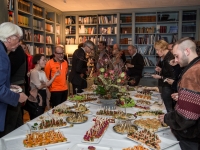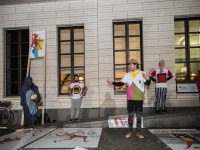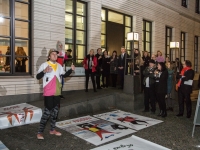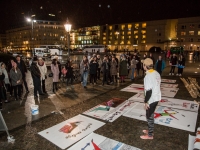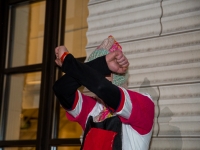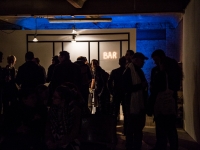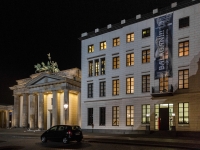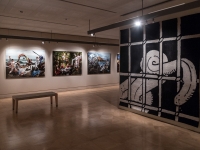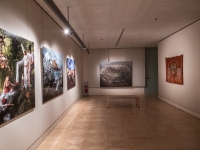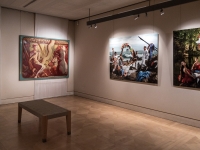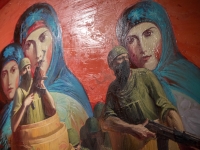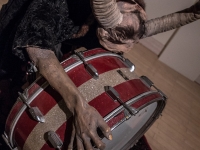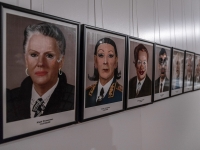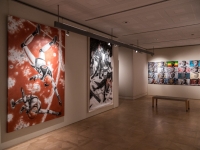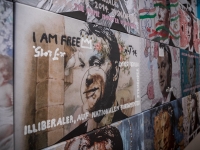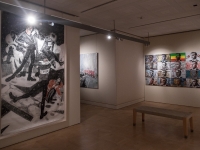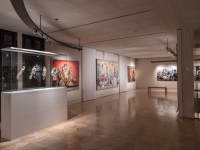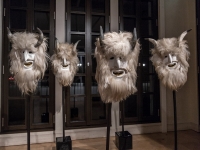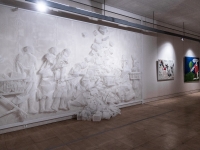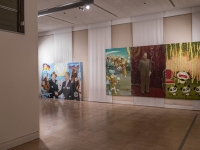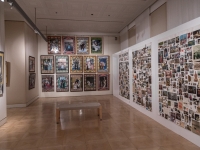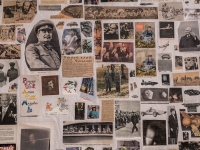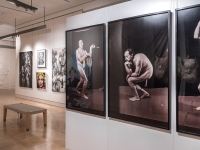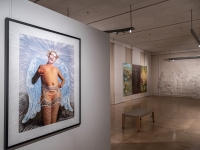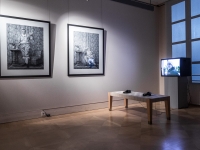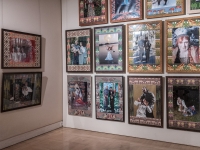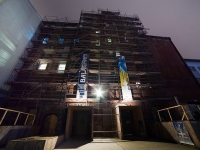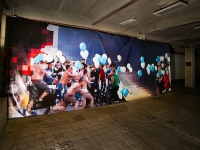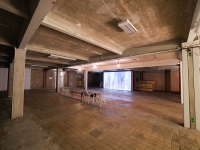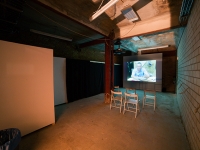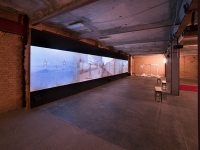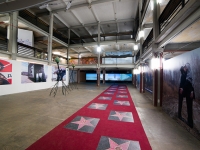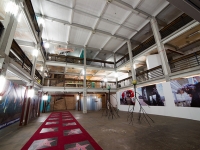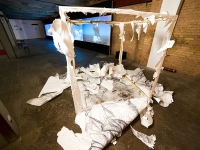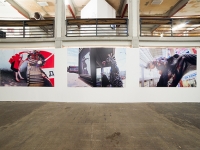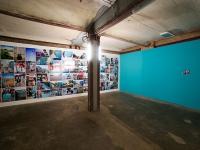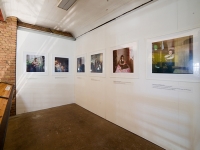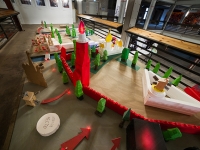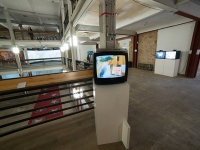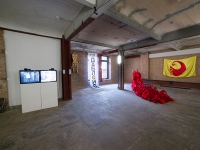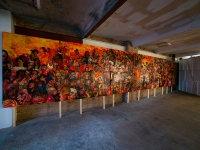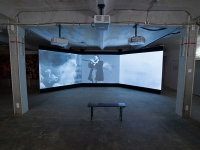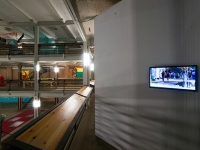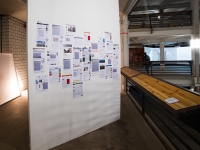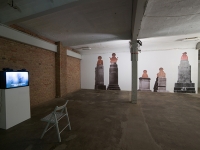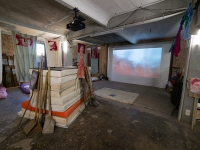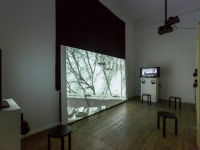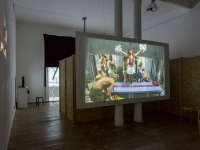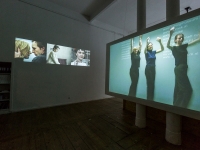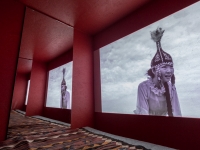 Back to Index
Back to Index
EXHIBITIONS
BALAGAN!!!
CONTEMPORARY ART FROM THE FORMER
SOVIET UNION AND OTHER MYTHICAL PLACES
Opening 13 November
14 November — 23 December 2015
75 Artists from 14 Countries from the Former “East”
Curated by David Elliott
Produced by MOMENTUM
[fve] http://vimeo.com/145039902 [/fve]
EXHIBITION at:
MOMENTUM
Mariannenplatz 2
10997 Berlin
Stiftung Brandenburger Tor
am Max Liebermann Haus
Pariser Platz 7
10117 Berlin
Kühlhaus am Gleisdreieck
Luckenwalder Str. 3
10963 Berlin
OPENING HOURS – ALL VENUES:
Frid & Sat @ 12 – 8pm
Mon, Wed, Thurs, Sun @ 12 – 6pm
Closed Tuesdays
16 December 2015 at 2 – 8pm
The Russians Have A Word For It: BALAGAN and the World Outside
Speakers:
Kathrin Becker // Ekaterina Degot // Volker Diehl // David Elliott //
Gabriele Knapstein // Olaf Kühl // Bojana Pejic // Asia Zak Persons
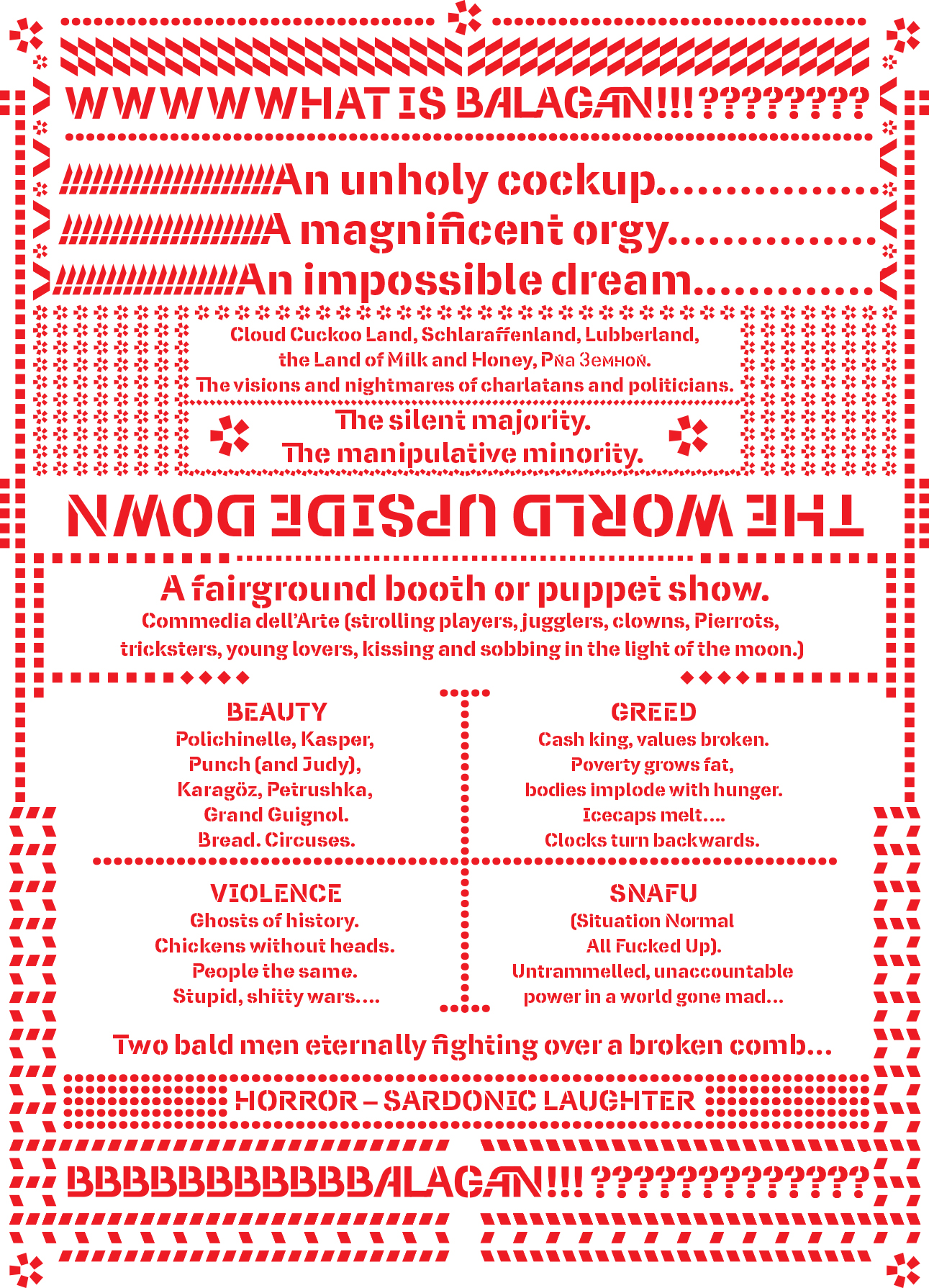
— by David Elliott
Balagan knows no borders. Although the contemporary condition of the world is almost impossible to categorise, the Russians have a single word for it that describes, with celebratory gusto, a farce, a mess, a SNAFU, the most unholy of cock-ups. What existentialism was for war-ravaged Europe, or ‘normality’ for the Cold War, balagan is for the whole world today.
BALAGAN!!! is therefore the framework for an exhibition curated by David Elliott in Berlin, for MOMENTUM and the NORDWIND Festival 2015, that shows contemporary art from just one part of the world, those countries that comprised the former USSR and its allies. In 1999 Elliott conceived the travelling exhibition AFTER THE WALL. Art and Culture in post-Communist Europe, that measured cultural change one decade after the fall of the Berlin Wall. Now, twenty-five years after this momentous event, he shows a world where chaos and misrule, along with the social comedy that results from it, are lovingly shown in art as artists struggle to digest and reconcile what they have experienced and integrate this with their dreams of a new and different way of life.
The exhibition will take place from 14 November to 23 December in three venues: the museum spaces of the Max Liebermann Haus in Pariser Platz, next to the Brandenburg Gate, the rough industrial interiors of Kühlhaus, a former refrigeration plant on Gleisdreiecke, and in MOMENTUM, part of the Bethanien Art District in Kreuzburg. At the same time works by some artists in the exhibition will be shown in Hellerau in Dresden and kampnagel in Hamburg. A lecture, symposium and performance programme will also be organised in co-operation with ICI and the Hamburger Bahnhof in Berlin.
The story of BALAGAN is strongly embedded within all the arts, particularly in the commedia dell’arte that underwent a revival in Russia immediately before and after the Revolution. Derived from the Turkic and Persian for ‘a wooden platform’, the original Russian word meant ‘fairground’, or the lightly constructed booths that characterised them. By the 18th century it had become associated with the activities of the people who worked there: puppeteers, clowns and jesters who made fun of and satirised established order.
In 1906, writer and poet Aleksandr Blok (1880-1921) finished his play Balaganshchik (variously translated as The Fairground Booth or The Puppet Show), the St. Petersburg première of which was directed by the avant-garde theatre director and actor Vsevolod Meyerhold (1874-1940), who also played Pierrot, its lead role. The riotous events of the opening night proved to be the first salvo in a continuing volley of artistic coups that lasted until the repression of the early 1930s. Blok’s intent in presenting such a dysfunctional masquerade to the public was to explode the social pretensions of Realist and Symbolist theatre by exposing its melodramatic clichés yet, in doing this, he was exposed the pain and drama of his times as well as on his personal experience and relationships. The creative fusion between the political, social and the personal is the impetus for BALAGAN!!! today.
Even during the dark years of Stalinist repression BALAGAN continued underground. While Europe was torn apart by World War II, Mikhail Bakhtin (1895-1975) completed his critical masterwork Rabelais and the Folk Culture of the Middle Ages and the Renaissance. In this he regarded the upside-down-world of carnival as both a safety valve and a vision of a better life that depended, amongst other things, on the subversive effect of exhibiting publicly the private functions of the human body.1 Cultural dichotomies such as spirit and body, ‘high’ and ‘low’, rich and poor, sacred and profane were revealed as methods of social control, the disruption of which he highlighted in the grotesque realism of Rabelais’ writings and time. In the face of oppression laughter was an uncontrollable, therapeutic, liberating force. The revolutionary politics of laughter and the cathartic release that it promises are a central subject of the BALAGAN!!! exhibition.
(Click on the name to see the bio and the work description below)
Afrika (Sergey Bugaev)
Vyacheslav Akhunov
Shaarbek Amankul
Evgeny Antufiev
Lutz Becker
Blue Noses Group
Sergey Bratkov
Yvon Chabrowski
Olga Chernysheva
Valery Chtak
Chto Delat?
Vladimir Dubossarsky
Andrej Dubravsky
Natalia Dyu
Sasha Frolova
Ivan Gorshkov
Georgy Guryanov
Dmitry Gutov
Sitara Ibrahimova
Nikita Kadan
Polina Kanis
Krištof Kintera
Francizka Klotz
Irina Korina
Egor Koshelev
Katarzyna Kozyra
Olya Kroytor
Gaisha Madanova
Vladislav Mamyshev-Monroe
Natalie Maximova
Yerbossyn Meldibekov
Almagul Menlibayeva
Boris Mikhailov
Ciprian Mureşan
Kriszta Nagy (Tereskova)
Deimantas Narkevičius
Ioana Nemes
Pavel Pepperstein
Pirate TV
Sasha Pirogova
Mykola Ridnyi
Arsen Savadov
Mariya Sharova / Dmitriy Okruzhnov
Haim Sokol
Slavs and Tatars
Leonid Tishkov
Aleksandr Ugay
Oleg Ustinov
Anastasia Vepreva
VMS Group
Stas Volyazlovsky
Viktor Vorobyev / Elena Vorobyeva
Vadim Zakharov
Sergey Zarva
ZIP Group
Artur Žmijewski
Constantin Zvezdochotov
|
AES+F
Tatiana Arzamasova (b.1955 Moscow, USSR) The collaboration between Arzamasova, Evzovich and Svyatsky began 1987 as AES, however, after fashion photographer Fridkes joined the group in 1995 it became known as AES+F. Arzamasova and Evzovich both conceptual architects, graduated from Moscow Architectural Institute State Academy (MARCHI) (1978 and 1982), Svyatsky graduated from the Moscow University of Printing Arts in the department of book design (1980). The many projects that have made employing this wide range of skills have been recognised by a number of awards: Pino Pascali Prize, 18th Edition, Foundation & Museum Pino Pascali, Italy (2015), Nordart Festival, Main Award, Germany (2014), Kandinsky Prize, Russia (2012). AES+F have also exhibited their work in numerous international venues, the most recent include: 001 Inverso Mundus. AES+F, the 56th Venice Biennale (2015), Multimedia Art Museum, Moscow (2015) Triumph Gallery, Moscow (2015), Martin-Gropius-Bau, Berlin (2012), 1st Kyiv Biennale of Contemporary Art (2012), Melbourne Festival (2011) and the 17th Sydney Biennale (2010). Their practice includes computer-based art, photography, performance, drawings, sculpture, objects and video installation. AES+F bring together many different, usually conflicting, taboos in their work, such as youth culture, religion, gender issues, class or ethnicity, to create an overall critique of contemporary consumerism and desire. The laughter invoked by parody, sarcasm or allegory not only mimics the effect of a safety valve in times of oppression, but also offers a critical vision for a better life as the world is turned upside down.As in a medieval morality play, the banality of today’s consumerism with its social and financial vices, is made evident and tangible. Inverso Mundus(2015), the title of their vast moving video ‘frieze’ shown here does just this: the poor become rich, the wise behave as fools, saints degenerate into sinners, the weak grasp power. No expression of power or entitlement is spared as the artists slice through the cortex of capitalism to expose its poverty of thought and value. |
|
|
AFRIKA (Sergey Bugaev)
Born 1966 in Novorossiysk, USSR) Bugaev is an artist, curator and sometime musician who grew up in the southern Russian port city of Novorossiysk. In 1981 he moved to Leningrad where he met and became friends with such leaders of the unofficial cultural scene as artist Timur Novikov (1958 –2002) and the rock musician Boris Grebenshchikov (b. 1953). He soon started to make art himself under the pseudonym ‘Afrika’ and, in 1983, joined the ‘New Artists’ movement Novikov had founded the previous year. In 1987 he played the lead role of Bananen in the cult film Assa, directed by Sergei Solovyov, that drew Russian rock music out of the counterculture into the mainstream and expressed a young generation’s desire for openness and freedom under perestroika. In 1990 he was co-founder, with Irena Kuksenaite, Olessya Turkina and Viktor Mazin, of Kabinet, a theoretical journal of art and psychology. His work focussed on performance, installation and the fabrication of strange objects that all reflected the consequences of misgovernment and the rapidity of change in Russia in the years after the breakup of the USSR. He also, with Novikov, provided an important contact between St. Petersburg and influential western artists such as John Cage and Robert Rauschenburg Recent group exhibitions of his work include: Club of Friends, Calvert 22 Gallery, London (2014) and Assa: the last generation of Leningrad’s avant-garde art, Russian Academy of Fine Arts Museum, St. Petersburg (2013). His solo shows include, amongst others: The Good Ballerina is Always Right, I-20 Gallery, New York (2008), Sergei Bugaev Afrika, Museum Küppersmühle für Moderne Kunst, Duisburg (2008) and his representation in the Russian Pavilion at the 48th Venice Biennale (1999). The two works by Afrika shown here use the silk ceremonial banners of the Soviet era as exotic objets trouvés. In the earliest of these, Quasi-Dream (1995), a joint portrait of Lenin and Stalin is appropriated and embroidered over by images of hallucinogenic mushrooms and textual references to Roman Jacobson (1896 – 1982), the Russian American pioneer of linguistic structuralism.The lush naturalism of this work is in stark contrast to the embroidered child-like forms in Twin Portraits of Gusinsky and Berezovsky at the Moment of the Sale of the Remnants of their Motherland (2000). The glum faces in this work represent the Russian Oligarchs and former media tycoons Vladimir Gusinsky (b.1952) and Boris Berezovsky (1946 –2013) who in 2000 were both targeted by Vladimir Putin when he became President as part of his promised anti-oligarch campaign. Both were investigated for financial malfeasance and had to leave Russia to avoid imprisonment. |
|
|
Vyacheslav Akhunov
Born 1948 in Osh, Kyrgyz SSR Akhunov graduated from the Moscow Surikov Art Institute in 1979, afterwards working independently as an artist, writer and philosopher. Since 1980 he has lived and worked in Tashkent, producing works using collage, painting, installation, performance and moving image as well as writing numerous essays and novels. Since 2000, he has been investigating the possibilities of new media, especially video, often appearing in his works himself. His work tackles the ironies of perceived cultural marginality as well as the power of difference. He also examines change and inequality in the region in which he lives, commenting obliquely on the rise of collective religiosity in what was previously a secular society. His work is always focused on the integrity and responsibility of the individual in whatever structure of power he or she may be situated. Akunov has designed national pavilions for Uzbekistan for the World Expos in Aichi, Japan (2005) and Hanover (2000). As an artist he has participated in such exhibitions as the 55th Venice Biennale (2013), the 1st Kyiv International Biennale of Contemporary Art (2012), Revolution vs Revolution, Beirut Art Center (2012), Documenta 13, Kassel (2012), Between Heaven and Earth, Contemporary Art from the Centre of Asia, Calvert 22, London (2011), Ostalgia, New Museum, New York (2011), and Atlas. How To Carry The World On One’s Back?, ZKM, Karlsruhe (2011). Allee of Superstars (2015), the work Akunov has made especially for this exhibition, is both a celebration and condemnation of political buffoonery. It consists of a long narrow red carpet with the faces of carefully selected international politicians printed in stars on its surface. As if they were at the entrance to a Hollywood premiere, visitors are invited to enjoy the ridiculousness of their moment of celebrity by walking on the carpet and laughing as each new face is stepped on and recognised. |
|
|
Shaarbek Amankul Born in 1959 Bishkek, Kyrgyz SSR) Amankul graduated with degrees in art and history from the Kyrgyz State College of Arts (1980) and the Kyrgyz National University (1989) respectively. He has participated in a number ofseveral residencies abroad as well as in exhibitions at the following museums and art spaces: Kunstmuseum Thun (2014), Yay Gallery (2013, Baku), 50 Years of Video Art (2012, Marseille, Tokyo), International Video Art (2011, Ramallah), Between Heaven and Earth. Contemporary Art from the Centre of Asia, Calvert 22 (2011, London), 17th Biennale of Sydney (2010), Kunsthalle/Spiegel, Lothringer13 (2009, Munich), OK Center for Contemporary Art (2009, Linz), Sherman Contemporary Art Foundation (2009, Sydney), Queensland Art Gallery / Gallery of Modern ArtBrisbane (2009), 22ndLes Instants Vidéo (2009, Marseille), 2nd Singapore Biennale (2008), Modern Art Gallery (2007, Ulan Bator), Kunsthaus Gazometer (2006, Liechtenstein). Editing documentary footage within a poetic structure, Amankul’s videos have tracked the fundamental social, political and cultural changes that have taken place in Kyrgyzstan since it gained independence from the USSR in 1991. During this time there has been considerable civil unrest and a move from a secular to an Islamic state culture. Vatan (2007) and Ketsin (2010), the twofilms shown in BALAGAN!!! examine the tragic discrepancies between propaganda and reality in statements of ‘motherland’ as well as the ludicrous faces of state power, inhumanity,wasteage of resources and civil unrest.Ketsin depicts the second revolution in Kyrgyzstan in 2010 after five years of relative stability and expands the perspective on the wastefullness and absurdity of human action already shown in Vatan. Since 2007 Mr. Amankul has been founding director of the organizational development and creative initiatives at B’Art Contemporary, a non-profit organization in Bishkek that researches and promotes art development in Kyrgyzstan and continue his artistic research method of the several projects in Kyrgyzstan. |
|
|
Evgeny Antufiev Born 1986 Kyzyl in Tuva, ASSR. Antufiev graduated from Moscow’s Institute of Contemporary Art Problems in 2009; in the same year he was awarded the Kandinsky Prize in the ‘Young Artist’ category. His solo exhibitions include Seven Underground Kings or a Brief Story of the Shadow, Regina Gallery, Moscow (2015), Immortality Forever, Moscow Museum of Modern Art (2015), Twelve, wood, dolphin, knife, bowl, mask, crystal, bones and marble – fusion. Exploring materials, Multimedia Art Museum, Moscow and Collezione Maramotti, Reggio Emilia (2013), Exploring The Material: Absorption, Regina Gallery, Moscow (2012), and such group exhibitions as The Empty Pedestal Ghosts from the Eastern Europe, Museo Civico Archeologico. Bologna (2014) and Ostalgia, New Museum, New York (2011). Antufiev’s primitive-looking works revolve around his conviction that that ‘…in the wake of the general collapse of the space of myth, the knowledge of it becomes the basis for creativity and perception of reality’. The ostensible naivety of his works, therefore, fills a vacuum in an increasingly urban alienated environment by re-injecting into it primal elements of signification and meaning. In some sense, his works are almost a parody of folk art – those shown here seem to have affinities Siberian and northern Russian indigenous art – yet their voodoo ‘roughness’ also implies retribution for environmental mutation and social disturbance as well as a critique of the slickness of contemporary art. The hand embroidery and stitching in these works also relates to the artist’s own story and that of his family. Re-using found objects, that integrate the violent or abject histories of nameless figures into an unfinished narrative, he reflects on both past and present in which political control and sudden, violent disappearance have been a fundamental part of everyday life. |
|
|
Lutz Becker Born 1941 in Berlin, Germany. Lutz Becker is a filmmaker, artist and curator, who graduated under Thorold Dickinson from the Slade School of Fine Art, London. In recent years, he worked extensively on the reconstruction of Sergei Eisenstein’s film ¡Que Viva Mexico!, whilst working as well as a curator. He participated with a video installation in the 1st Kyiv Biennale (2012) and in The Best of Times, the Worst of Times, CAC, Shanghai (2014). As a curator he worked on Salomon Nikritin – George Grosz: Political terror and social decadence in Europe between the Wars, SMCA, Thessaloniki (2014) and Modern Times – Responding to Chaos, Kettle’s Yard, Cambridge and De La Warr Pavilion, Bexhill (2010). Working mainly with video and film, the three-channel film installation The Scream (2012) is both homage to the Ukrainian filmmaker Aleksandr Dovzhenko (1894 –1956) and an elegy relating to the failure of the revolution that, at one time, he clearly supported. Dovzhenko structured his films poetically, with pastoral simplicity set in contrast against modernist self-consciousness. Echoing the title of Edvard Munch’s famous painting, Becker has created a montage of segments from Dovzhenko’s films, based on dramatic interactions and accidental synchronicities of images and scenes, to tell a story about violence, horror and forlorn hope firmly rooted within the Ukrainian countryside and land, both of which become protagonists in this work. |
|
|
Blue Noses Group
Aleksandr (Sasha) Shaburov Shaburov graduated from Sverdlovsk Academy of Architecture and Arts (1986), and Sverdlovsk Art School (1985), Mizin graduated from the Novosibirsk Architectural Institute (1984). The Blue Noses group was created in 1999, after they both met on the project Shelter Beyond Time, where they simulated the experience of life in a bunker after a nuclear catastrophe. From time to time the group includes other members and sometimes they perform with the Novosibirsk Rock group Nuclear Elk. In 2008 they were nominated for the Kandinsky Prize. Sometimes they exhibit as solo artists but as the Blue Noses they have been shown in Random Coincidences, Erarta Museum of Contemporary Art, St. Petersburg (2014), From Siberia with Love, 1999-2009, Musée des Beaux-Arts de Nantes, Nantes (2010/11), Retrospective 1999-2009, Fotoloft Gallery, Moscow (2010), Proletarian Conceptualism, M&J Guelman Gallery, Moscow (2010), The Naked Truth, Ethan Cohen Fine Arts, New York (2008) and the 50th and 51st Venice Biennales (2003, 2005). The Blue Noses are the Tricksters of their generation and derive their name not only from the bitter cold of the places they were born, but also, ironically, from the itinerant Blue Blouses – groups of agit-prop performers who in the early years of the Revolution travelled around factories and the countryside disseminating the communist message. Known for the satirical and often provocative works in which they appear, that encompass photography, video, performance and installation, they always use low-tech methods of production in order to parody and critique different aspects of Russian society, art, politics, and religion. Their works are marked by roughness and a crude, dark humour, even to a level of autism, that has encouraged some to regard them as Holy Fools – contemporary equivalents of Yurodivy – the mendicants who, during medieval times, were believed to be both insane and touched by God. Their photo-panel The Era of Mercy (2005), one of their works shown in BALAGAN!!! – a homage to a vandalised wall painting by Banksy, the British street artist – depicted two Russian policemen locked in a passionate embrace in a snowy birch forest. In 2007, this was refused an export license by the then Minister of Culture on the grounds that it was both ‘erotic’ and a ‘disgrace to Russia’ and should therefore not be shown in a public exhibition in France. |
|
|
Sergey Bratkov Born 1960 in Kharkov, Ukrainian SSR. Bratkov graduated in Industrial Electronics at the Polytechnic Academy of Kharkov in 1983 but, like Boris Mikhailov, his friend, taught himself photography and became a member of the Vremya (Time), a group of underground artists who pushed far beyond official boundaries to confront such Soviet ‘taboos’ as individual sexuality and volition. Out of this, with Mikhailov and Sergil Solonskij, he formed the Fast Reaction Group, which produced absurd performances or tableaux, such as If I were a German (1994), that imagined in black and white photographs an ironic pornographic Arcadia of SS Officers in German-occupied Ukraine. He has won many awards and has had a number of solo shows, including Spell, Regina Gallery, Moscow (2014), Chapiteau Moscow, Galerie Volker Diehl, Berlin (2013), the Innovation Prize in Contemporary Visual Art, NCCA Moscow (2010), Glory Days, (Winterthur, Madrid and Hamburg 2008-10), and the Ukrainian Pavilion at the 52nd Venice Biennale (2007). Recent group shows include Borderline. Ukrainian art 1985-2004, Pinchuk Art Centre. Kyiv (2015), Faces now. European portrait photography since 1990, Bozar, Centre for Fine Arts, Brussels (2015) and Photomania-2015, Baltic Biennale of Photography, Kaliningrad (2015). Three large prints by Bratkov from the Chapiteau Moscow series (2012), each containing two montaged photographs, are shown in BALAGAN!!! (There are sixty images in the series). These works reflect Bratkov’s description of everyday life in Moscow as a circus Big Top ‘so comical that the first thing it brings to mind is the circus and clowns with sad make up on their faces… Each movement in a theatrical performance is symbolic and filled with ideas, whereas in the circus the crowd gathers for a spectacle, which is closer to reality and therefore also more risky. In the circus, a lion may eat its tamer, and a trapeze artist…can crash on the ground. But the most important thing in the circus is the expectation of a miracle. Moscow is a city in which risk and magic are incredibly concentrated. Thousands of people go there each year in the hope of a miracle. The city is a myth in which you can get fabulously rich, marry a princess and triumph over a two-headed dragon. It is a place where fairy tale beauty and riches live next to infinite ugliness and poverty; the two are so tightly knit together that the one can no longer exist without the other. When the “Moscow Circus” voted to stick with its Ringmaster for the long haul, two questions spring to mind: when the public is no longer laughing but caught in tense silence, maybe it’s time to change the repertoire, as well as the Ringmaster? And, for the future, when will a real miracle happen and the circus disappear?’ With sardonic humour, Bratkov, a connoisseur of urban grotesque, portrays everyday life as a succession of ugly, monstrous and meaningless collisions out of which he wrests abstract allegories of a world gone mad. In these large photo-panels, he dissects the body of a city that has lost its soul and replaced it with successions of mindless mutations or with the robotic motions of marionettes that appear to have run out of control. |
|
|
Yvon Chabrowski Born 1978 in Berlin, GDR. Chabrowsky studied philosophy before completing her MA in photography at the Leipziger Hochschule für Grafik und Buchkunst. In 2007 she has received DAAD scholarships to Cairo (2007) and New York (2008). Recently her work has been included in Labour at Eigen+Art, Berlin, fuck the system, A&V, Leipzig, and A Time for Dreams, the IV Biennale of Young Artists, Moscow, (2014). Her video installation Afterimage / Protest is based on a collection of media images of protests found on the Internet. First we hear the sound of steps, then we see on the large video screen how people arrange themselves into a group until the image of a street fight is recreated. The iconography of these enactments is based on images of recent demonstrations in Istanbul and Cairo, but these scenes could also be several centuries old. They uncover something akin to an underlying skeleton of resistance that resurfaces in the images of media reports on resistance. The slowness of the re-enactment and the freezing of movement into tableaux vivants weakens the inevitability of the plot, upon which they are based. As a result it opens up a new space of possibility. |
|
|
Olga Chernysheva Born 1962 in Moscow, USSR. Chernysheva studied first at the Moscow Cinema Academy in 1986 and then at the Rijksakademie van Beeldende Kunsten, Amsterdam in 1995/96. Her art, which includes films, photographs, paintings, drawings and object-based works, reflects the ever-changing, turbulent, unstable time through which she has lived and is based on the careful observation of often unwitting subjects. Whatever the medium, her works lyrically investigate the fabric of individuality and self-sufficiency at a time of crumbling values and infrastructures. Chernysheva concentrates on the relationships between object and figure, in particular, on the ways in which people, and the spaces they inhabit, co-exist uneasily or in an absurd way. Her work has been shown in different international solo exhibitions, including: Peripheral Visions, GRAD, London (2015), Olga Chernysheva, Pace London, London (2014/15), Compossibilities, Kunsthalle Erfurt (2013), Olga Chernysheva, Foxy Production, New York (2011), In the Middle of Things, BAK, Utrecht (2011), Olga Chernysheva, Calvert 22, London (2010); she represented Russia at the 49th Venice Biennale (2001). As both observer and chronicler, Chernysheva reflects the multi-layered anthropology of post-Soviet society throughout her work, while examining the role of the artist with a singular mix of lyricism, humour, and melancholy. In her video Trashman (2011) she continues her investigation into ‘typical characters under typical circumstances’ within the context of illegal migrant labourers from the Central Asian republics of the former Soviet Union who moonlight, working ‘invisibly’, in poorly paid temporary jobs. In this case, the hero of her film clears the rubbish from multiplex cinemas. In White Lines – on the Ground, Dark Lines – in the Sky(2012) filmed from the window of her apartment, she choreographs a formal ballet of communication and labour as workmen endlessly install vast lengths of light coloured underground cable that she counterpoints with the ever present ‘black spaghetti’ of existing telephone lines in the sky. Respecting the historical and linguistic spirit of BALAGAN!!! Chernysheva has made a special work for the exhibition: a life-size drawing of a contemporary Moscow ‘Pierrot’. |
|
|
Valery Chtak Born 1981 in Moscow, USSR. In 1998 Chtak joined the School of Contemporary Art, an informal art school founded by Avdey Ter-Oganyan. Afterwards, with other young artists from this school, he formed the Radek Community in which he took part in different actions (2000-2005). His work has been shown widely, including his solo exhibitions: Do not come closer, Trenchcoat Gallery, Moscow (2014), This is not a nightmare, Red October Gallery, Moscow (2013), Author Unknown, Mironova Gallery, Kyiv (2012); he also participated in Not Museum, part of the Manifesta 10 parallel program in St Petersburg (2014) and in the group show In Search of Horizon, LDZ, Riga (2014). Collecting trash and re-cycling it in grafitti-like paintings has become Chtak’s trade mark. Inspired by the example of Lawrence Weiner, his works often include riddle-like or impenetrable texts. In 2010 his friend, Alexei Buldakov wrote the following about his work: ‘Chtak’s pictures are like grafitti on the walls of toilet stalls in an ideal city of the sun populated entirely by midgets, all of them artists or conceptual poet-politologists. […] Chtak reproduces chaos, and by doing so, he orders it. He introduces order without imposing form. His painting is rather on the side of formlessness and incompleteness. Every painting has a void, an unmarked space, the paintings aren’t fully populated. They are in a state of becoming, and continue to develop even after he has already painted them. Chtak constantly slips away and eludes finished forms; in fact, he’s a prime example of an artist-bum who starts lots of projects and never finishes anything. Maybe that’s why his pictures look like rantings and ravings, but not sick or senile ravings, but the cheerful ravings of an aggressive schizophrenic, a text that “invokes that oppressed bastard race that ceaselessly stirs beneath dominations, resisting everything that crushes and imprisons. Or, as the artist puts it: “It’s cool to go off.”’* *Gilles Deleuze, Essays Critical and Clinical, London: Verso 1998, p. 4 |
|
|
Chto Delat? Collective founded in St Petersburg in 2003. The name of this group, meaning in Russian What is to be done? is a common question asked everywhere, but it is also the title of an influential social novel written by philosopher, journalist and literary critic Nikolai Chernyshevsky in 1863 that, in 1902, Lenin appropriated for a political pamphlet, subtitled Burning Questions of Our Movement, inspired by Chernyshevsky’s book. The members of this group come from a wide range of different backgrounds: art, dance, philosophy, theory, performance, design and literature. Using the media of video, performance, intervention, publication and installation, their practice has tracked and commented on the profound changes that have taken place in Russian society and official ideology since perestroika. Sometimes they present a general view of its social and historical development, at others they focus on particular traumatic events that they regard as typical of the whole. The collective has had solo shows in many international venues including: Time Capsule. Artistic Report on Catastrophes and Utopia, Secession, Vienna (2014/15), KOW, Berlin (2015), Chto Delat – Was tun?, Brandenburgischer Kunstverein, Potsdam (2014/15), The excluded. The moment of danger, Kunstbunker, Forum für Zeitgenössische Kunst, Nürnberg (2014) and Chto Delat? Perestroika: Twenty Years After: 2011-1991, Kölnischer Kunstverein, Köln (2011). They have also participated in the 56th Venice Biennale (2015) and the 1st International Biennale of Kyiv (2012). The collective aims to combine art with activism and political theory by problematizing social, political and economic change as the basis of their work. The absurd, callous effects of corruption, racism, gender discrimination or violence are highlighted through songspiels (musical commentaries) and lehrstück (learning plays), Brechtian devices that encourage viewers/audiences to unpack events for themselves by considering alternative methods of reasoning. The installation shown in BALAGAN!!! combines two previous works: Russian Woods wand The Tower. The former combines a Greek chorus with the aesthetics of a children’s school play in a violent, grim fairy tale of animal life in the forest. But childish fears of the ‘woods’ are revealed as reality when intercut with snatches from TV newsreels that show orchestrated, mindless, gopnik (urban thug) violence against different groups and minorities. The Tower, a video songspiel that bleeds out into an installation of smothering, visceral red tentacles is based on the conflict around the planned Okhta redevelopment in St Petersburg, a UNESCO World Heritage Site, in which the objections of local heritage groups and residents have been consistently ignored in favour of the Gazprom Corporation’s application to build a 403-metre-high skyscraper, environmentally damaging and completely out of keeping with its surroundings. |
|
|
Vladimir Dubossarsky Born 1964 in Moscow, USSR. Dubossarsky graduated from the Moscow Art College (of the 1905 Revolution) in 1984 and, from 1988 to 1991, studied at the Surikov State Art Institute. From 1994 he has worked collectively with Alexander Vinogradov (b. 1963, Moscow) but from 2014 he has also made works by himself. Working in a range of media, the duo have had solo shows in various venues, including: Moscow Vanishing Reality, Museum of Moscow (2014), Painters of Russian Life, Kunsthal KAde, Amersfoort (2013), Retrospective, Winzavod Centre for Contemporary Art and Triumph Gallery, Moscow (2012), X. Ten, Mystetskyi Arsenal, Kyiv (2012), Khimki Life, Wilma Gold Gallery, London (2011), On the Block, Charlotte Moser Gallery, Geneva (2010) and Danger! Museum, 53rd Venice Biennale, Venice (2009). Initially they took inspiration from the propaganda paintings of the Soviet era in a parody of Socialist Realism that created an illusion of a non-existent paradise. But they also included in these works outside influences, such as the lurid advertising of Hollywood film posters or sleazy porn flicks. In 2001, their work moved away from a depiction of former Soviet fantasies to incorporate ideas from advertising, mass media and celebrity culture, often interpolating these images into banal, kitsch or absurd situations in reference to the newly forming Russian national identity. In his solo work Dubossarsky has ostensibly moved away from carnival chaos towards a more sardonic view of the present. Two large paintings are shown in BALAGAN!!!: In a typically strange reflection of contemporary geopolitics, Happy Childhood (2014) looks back to the era of Stalin with a found, battered, full-length portrait of the Great Leader, yet it is flanked on one side by adoring Disney-like fairies carrying candles, while on the other, in an exotic bamboo landscape, cartoon pandas are bewailing the Leader’s empty chair. What we may ask is the state today of Russian Chinese relations? In Merry Christmas! (2015), we are brought undeniably up to date in an ‘official’ seasonal portrait of President Putin and Chancellor Merkel yet, although they are shown together, there is little communication between them: their body language and expressions suggest that they are enjoying private jokes and may even originate from different planets. |
|
|
Andrej Dubravsky Born 1987 in Bratislava, Czechoslovakia. Dubravsky originally studied sculpture at the Academy of Fine Arts and Design in Bratislava from which he graduated in 2012. A precocious talent, he specialised in painting while still a student and won the First Prize in the VUB / Intesa Sanpaolo Foundation Award for Painting for Young Artists (2012). His solo shows have included The Exciting Mysterious Aquarium, Depot in Petržalka, Bratislava (2013) and Golden Sands at the Jiři Švestka galleries in Berlin and Prague (2012/13). His style of painting is inspired by the Old Masters yet the vulnerable male subjects that often feature in his work express a frailty emphasised by the appearance of enigmatic masked figures with bunny-ears. Dubravsky explains his absurd collision of an outdated ideal of feminine beauty with lithe, naked young men as follows: ‘Boys with bunny ears represent young greenhorns like me. The bunnies are some sort of Fauns from the pictures of old masters, but with a kinky, contemporary twist.’ In these works he introduces visitors into a dark, obscure yet intimate world, where the distinctions between guest, visitor and voyeur are easily blurred. |
|
|
Natalia Dyu Born 1976 in Karaganda, Kazakh SSR. With a degree from the Buketov Karaganda State University Department of Fine Arts and Mechanical Drawing, Dyu works mainly in video. Her works have been exhibited in Kazakhstan as well as in India, Korea, Greece, Germany, Mexico, the UK and the United States. She participated in the Busan Biennale, Busan (2014), Between Heaven and Earth. Contemporary Art for the Centre of Asia, Calvert 22, London (2011), Liberty / Freedom, Moscow Museum of Modern Art, Moscow (2010), Is There Any Hope for an Optimistic Art? Moscow Museum of Modern Art, Moscow (2010) and in EXIT, Almaty (2009). Although her approach may seem ironic, her works are fully immersed in social reality, unravelling the processes through which habits are formed, expectations are created and dreams are constructed. The bitter-sweet video Happystan (2007) is set to the soundtrack of a sentimental love ballad written and performed by Aliya Belyaeva whose oligarch husband was imprisoned at the time of its making. The film’s imagery presents a hard and dispassionate look at the economic and social conditions of the vast majority of Kazakh people, particularly women, highlighting with poignant and tragic humour the discrepancy between the naïve optimism of the lyrics and the harsh, colourless realities of everyday life. |
|
|
Sasha Frolova Born 1984 in Moscow, USSR. Frolova graduated in 2002 from the Art School of the Stroganov Moscow Higher College of Art and Industry in Moscow and extended her studies in Graphic Design at the National Institute of Design (2004 – 08) and on the New Art Strategies (Contemporary Art) course at the Institute of Contemporary Art Problems (2006) under the tutorship of Joseph Backstein. For ten years she was assistant to the eminent performance artist and object maker Andrey Bartenev. She is the current holder of Andrew Logan’s London-based Alternative Miss World award. She had a solo show in the Frederica Ghizzoni Gallery, Milan (2014) was finalist of the Arte Laguna Special Prize for a solo show in Venice in 2013 and took part in the finalists’ group exhibition in the Arsenale where she was awarded a special exhibition prize. She was a finalist of the Kandinsky Prize (Young Artist Project of the Year nomination) in Moscow, 2009. AQUAAEROBIKA, a collective performance project that she both directs and performs, was first presented in Saint Petersburg and Venice during 2013 and has since toured widely. Her solo shows include FR BR, in the parallel programme of the 4th Moscow Biennale of Contemporary Art (2011), Albinism, Aidan Gallery, Moscow (2010) and Cyber Princess, Moscow Museum of Modern Art (2009). She has also presented her work: in London at the Whitechapel Gallery, at the Rifle maker Gallery and at the Russian Winter Festival in Trafalgar Square; in Kyiv at Gogolfest; in Hamburg at Kampnagel; and in Moscow at the Shushev State Museum of Architecture and the National Centre of Contemporary Art (NCCA). Frolova uses her body to work in different media – sculpture, inflatables, dance, music and performance – in which the different kinds of movement, colour and energy it generates are the dominating elements. A hybrid between the puppet-like figures of Oscar Schlemmer’s Bauhaus Triadisches Ballet (1922), whirling dervishes and Lady Gaga on speed, she employs outlandish costumes, electronic music and dance to melt into the abstract forms of her colourful inflatable sculptures and to create a sense of awe and wonder in the viewer – a cyber-beauty of latex, speed and sound. As part of the opening celebrations of BALAGAN!!! Frolova will be making a special performance. Her large, inflatable sculptures conjure images of alien body parts and vectors of energy that stand in their own right but also integrate with her performances. Lyubolet (2008), a coiling uterine fantasy in eau de nil latex that also suggests the ready-to-strike mandibles of a Preying Mantis, is sited in the first gallery of BALAGAN!!! in Kühlhaus. |
|
|
Ivan Gorshkov Born 1985 in Voronezh, USSR. After graduating from the Fine Arts Department of the Voronezh State Pedagogical University in 2008, Gorshkov co-founded the Voronezh Centre for Contemporary Art. He is a two times recipient of the grant for young Russian artists from the GARAGE Centre for Contemporary Culture, Moscow and has already had the following solo shows: The Way of King’s Pie, Diehl Cube, Berlin (2015), Instant Bliss, Knoll Galerie, Vienna (2013/14) and Boiling point, Galerie L’Aleatoire, Paris (2011). He has also participated in the Moscow Biennale of Contemporary Art (2013 & 2011) and in the Moscow Biennale for Young Art (2010). Working across media, but concentrating mainly mainly on sculpture and painting, he combines different media in surprising ways by bringing unexpected materials and forms together and covering them with layers and glazes of strange enamel colours so that they resemble ‘an abstract, violent storm’. His sculptures, opaque, dark and mysterious, appear to have landed from another world. The process of fabricating the work is also important to him, smelting, casting, hammering and welding metal into chaotic, illogical form. The rough, hand-made-ness of this process is not only a matter of surface for him but also of fundamental form. |
|
|
Georgy Guryanov Born 1961 in Leningrad, USSR – 2013 St. Petersburg, Russia. Guryanov studied at the Vladimir Serov School of Art in Leningrad (1975), but left after one year. He became a leading figure in the Leningrad avant-garde during the 1980s, playing as drummer in Viktor Tsoi’s rock band Kino (1984–90), and worked closely with such artists as Timur Novikov and Vladislav Mamyshev-Monroe, appearing as a guest on Mamyshev-Monroe’s Pirate TV. He was a member of the New Artists movement from 1982, from 1986, a founding member of the ‘Friends of Vladimir Mayakovsky’ and, from 1989, a professor at Novikov’s New Academy of Fine Arts. His many solo shows included Sailors and Heaven, D137 Gallery. St. Petersburg (2004), Painting, XL Gallery, Moscow and Gallery D-137, St. Petersburg (2003), Georgy Gurianov: paintings, photos, graphics, Gallery D-137, St. Petersburg (2001) and at the Stedelijk Museum Amsterdam (1997). His work was also shown in Club of Friends. Timur Novikov’s New Artists and the New Academy, Calvert 22, London (2014) and After the Wall. Art and Culture in post-Communist Europe, Stockholm, Budapest and Berlin (1999/2000). A leading member of the St. Petersburg Neo-Academicians, Guryanov was a dandy, making himself his art work. His drawings and paintings were inspired by the values of classical art but he always added a contemporary twist. Using the muscular perfection of Greek and Roman statuary as a starting point, he incorporated contemporary political, gender and social issues into his work, often depicting sailors, athletes or soldiers, and using the faces of his artist friends, or even himself, in ways that were unapologetically homoerotic. Traktoristka (2002), the painting shown in BALAGAN!!! refers back to the styles and subjects of Socialist Realism, but this is neither a pastiche nor a satire, the figure has a wholly new intensity and severity. |
|
|
Dmitry Gutov Born 1960 in Moscow, USSR. A graduate of the Institute of Art, Sculpture and Architecture at the Academy of Arts in St. Petersburg, Gutov works with painting, photography, video and installation. He has had many solo shows, including Rembrandt: a different perspective, Pushkin Museum of Fine Arts, Moscow (2015), Life is hard, but thankfully, brief, Triumph Gallery, Moscow (2014), Fugue. A growing bout of excitement with blackouts and memory decoders, Bourse Art Museum, Riga (2014), No Surprises, Moscow Museum of Modern Art (2013), Genius Needs an Orgy, Triumph Gallery Moscow (2013) and Relativism is dialectics for idiots, Scaramouche Gallery, New York (2010). He has also participated in numerous international group shows, such as A clear and unseen presence in the city, NCCA, Moscow (2015), Really Useful Knowledge, Museo Nacional Centro de Arte Reina Sofía, Madrid (2014/15) and Unrest of Form. Imagining the Political Subject, Secession, Vienna (2013). In critical dialogue with the art of the former Soviet Union, Gutov also scrutinises Western values, consumerism and modernity in a similarly way, while reflecting on the different paths that contemporary art has taken in different parts of the world and on the significance of this for art. Many of his paintings revolve around how ideas of originality have become submerged by the consumerism of the art market that favours art made within its own image. In his work, Gutov tries to disrupt this pattern that he feels is inimical to art. He has acknowledged the work of the Marxist art and literary critic Mikhail Lifshitz (1905 – 1983) as vital for the development of his own view of art. The collages and paintings shown in BALAGAN!!! strongly reflect this ironic perspective. |
|
|
Sitara Ibrahimova Born 1984 in Baku, Azerbaijan SSR. Ibrahimova is a photographer who has covered the plight of refugees and victims of the Nagorno-Karabakh conflict, women’s prisons, mental health hospitals, and early marriage in Azerbaijan. She has worked for Eurasianet.org, the Red Cross, and the British Council in Azerbaijan and has taken master classes with photographers Rena Effendi, Inta Ruka, Lucia Nemcova, and Rudo Prekop. Her work has been shown at the 2012 Tbilisi Photo Festival, the 2009 Inter Photo Festival Camp in the Czech Republic, the 2007 Photonic Moments Festival in Ljubljana, Slovenia, and exhibited at galleries and museums in Europe and the South Caucasus. In 2010, Ibrahimova curated the exhibition ART BAZAAR, bringing together the work of contemporary young artists in Baku. She received her bachelor’s degree in Psychology from Baku State University in 2004 and a bachelor’s degree in still photography from the Film and Television School of Performing Arts Prague in 2010. Her video A Boy is GOOD a Girl is NOT (2013) shows how gender discrimination starts even before birth. One of the musts of the traditional Azerbaijani family is the birth of a boy. Like in many traditional cultures this leads to the gradual gender imbalance since you can control the future by having, or not having, an abortion. The other side of the problem is the state of mind of a woman in that environment: she is transformed into an instrument for achieving an archaic cultural norm, based on the value of a baby-boy. This documentary video tells the stories of several women who gave birth to baby-girls. It shows how cynical people are about traditional cultural norms and how absurd this is in the flow of the modern life. |
|
|
Nikita Kadan Born 1982 in Kiev, Ukrainian SSR. Kadan studied under Mykola Storozhenko at the National Academy of Fine Art, Kyiv, graduating in 2007. Having been nominated for the PinchukArtCentre Prize in 2009, he won it in 2011. He is a member of different artists’ collectives: R.E.P. (from 2004) and HUDRADA (from 2008) of which he is also co-founder. His solo shows include Poland magazine, Ya Gallery Art Centre, Kyiv (2015), Limits of Responsibility, Campagne Première, Berlin (2014/15), Everybody wants to live by the sea, Viafarini DOCVA, Milan (2014), Kyjev Hotel, Bratislava – Cinema, Gandy Gallery, Bratislava (2013). He also has exhibited in the 1st and 2nd Kyiv Biennales of Contemporary Art (2012/15). Kadan works in an interdisciplinary way, collaborating with activists, architects or others, in a wide range of different media that include objects, constructions, paintings, graphics, installations and posters. The recent political unrest and armed conflict with Russia has inevitably surfaced in his work, both in reference to the extended occupation of Maidan Square in Kyiv (2014) – he has made a form of commemoration of this event by focussing on the ‘gardens’ that the demonstrators made while they occupied the square – and in the tense, changed atmosphere of the whole country. In BALAGAN!!! Kadan presents a new site-specific ‘tower’ that, while continuing the cycle of previous works related to the language of Soviet neo-modernism, also refers to the transformed social and political climate. In this work, the triumphal, colonial Soviet column is topped by a flimsy structure that references both a GULAG watchtower and the structures built by early Christian Stylites to separate themselves from the world and mortify their flesh. Kadan sees this structure not only as a meditation on different significations of power, but also as an unstable and dangerous ‘image of a totalitarian saint who regards the world from the safety of his asceticism’ – a criticism, perhaps, of the role of the artist in times of duress. |
|
|
Aleksey Kallima Born 1969 in Groznyy, Chechen-Ingush ASSR. Kallima graduated with a degree in Fine Arts from the University of Krasnodar in 1988. He curated his own project the France Gallery from 2001 to 2005 and in the following year was given an award in the Contemporary Arts section of the Innovation Prize in Moscow. He has had numerous solo exhibitions, including: Audience, Regina Gallery, Moscow (2015), Gray days. Bright dreams, Regina Gallery, Moscow (2013), All for Sale, Regina Gallery, London (2012), as well as group shows The new story-tellers in Russian art of the XX – XXI centuries, The Russian Museum, Saint-Petersburg (2015), Upward, Museum of Moscow (2014) and the Russian pavilion in the 53rd Venice Biennale (2009). ‘A refugee from his native Groznyy and witness of its storming, the Russian Aleksey Kallima acts as a patriot of Chechnya in Moscow and in his works refers to the theme of the Chechen war. The artists develops the theme of the province in a harsh way, in opposition to generally accepted democratic norms, without national exotica, natural beauty, the adornment of historical and regional traditions. The Chechens for Kallima are the inhabitants of roads and roadsides; they wear Adidas, drink Coca-Cola and smoke Turkish Marlborough. The global brands receive an unexpected boost of energy, becoming the marks of saboteurs and terrorists. Returning to figurative expressive language, the artist has freed the picture from its responsibilities to realism, having placed it in the dimension of will and imagination. Will is personified by the Chechens, the wild power of the new millennium, bringing death to the old epoch.’ [Aleksandr Evangely] |
|
|
Polina Kanis Born 1985 in St. Petersburg, USSR. Kanis graduated from the Herzen State Pedagogical University in St Petersburg in 2006 and studied art at the Rodchenko School of Art, Photography and Multimedia in Moscow in 2011. She was shortlisted for the ‘Innovation Prize’ and awarded the ‘Kandinsky Art Prize’ (Young Artists) in 2011. Her solo exhibitions include: Formal Portrait, Manifesta 10, First Cadets’ Corpus, St. Petersburg (2014), New Flag, New Holland Gallery, St Petersburg (2013), 1,2,3,4, Mystetskyi Arsenal, Kyiv and Triumph Gallery, Moscow (2012). Working primarily with video, Kanis re-examines stereotypical tropes or memes that have survived from the former Soviet Union by highlighting their bizarre strangeness. Treading a fine line between performance and documentation, she reflects on the ideological usage of parades and military festivities in the past, by presenting them in an equivocal way in the present. In Workout (2011), she plays the commanding role of an aerobics instructor in a Moscow park creating a strange hybrid between the totalitarian sports cult of the Soviet era and contemporary, imported western pop culture. A similarly provocative juxtaposition is also evident in Formal Portrait (2014), shown in BALAGAN!!! in which a young woman acrobatically, ritually and repeatedly climbs up a thin metal pole on a motorcycle sidecar. The artist describes ‘The eternity of expectations’ as the ‘ key motif’ of this work ‘… we hear the roar of the engine as a symbol of a readiness to action. The pole has been prepared, the figures obediently come together to form a flag – this endless repetition is fated to remain in eternity, without ever becoming a moment in history…’ In Celebration (2014), also in this exhibition, the repressive behavior and actions of the everyday are played out in an atmosphere of lugubrious celebration as soldiers dance with each other in a large but plain room. The men in uniform, casually dressed, move like automatons. Referring to current restrictive proposals about sexual orientation in Russia, this dance is hardly a celebration, but a joyless and absurd assertion of alienation at every level in which there can be no meaning or purpose. |
|
|
Krištof Kintera Born 1973 in Prague, Czechoslovakia. After first studying at the Academy of Fine Arts in Prague, Kintera graduated from the Rijksakademie van Beeldende Kunsten, Amsterdam in 2004. He has three times been a finalist in the Jindřich Chalupecký Award (1999, 2001, 2003) and has had many solo exhibitions, including Your Light is My Life at the Kunsthal Rotterdam (2015), I am not you at the Tinguely Museum, Basel (2014) and Bad News at the Jiři Švestka Gallery, Berlin (2013). His work was also shown in the travelling exhibition After the Wall. Art and Culture in post-Communist Europe, Stockholm, Budapest, Berlin 1999-2000. Since the mid-1990s Kintera’s social critique of politics, economy and excessive consumption has run throughout his sculpture, installations, videos and performances. By engineering striking juxtapositions between mundane, second-hand or discarded objects, he skillfully creates absurd or provocative perspectives on common dreams and nightmares that reflect, with dark, unforgiving humour, about the ways that power and desire affect us all. The hunched, all-consuming horned beast in Bad News (2011) and the febrile shudders of the inverted trunks that carry the weight of the world’s mass in their fragile roots in Nervous Trees (2013) invoke a progressive, modernist past turned on its head – countermanded by a primitive, primeval present. |
|
|
Francizka Klotz Born 1979 in Dresden, GDR. In 2000 Klotz enrolled in the Department of Painting at the Art Academy in Weissensee, choosing in 2005 the one-year master class of Werner Liebmann. Katarina Grosse and Hanns Schimansky, both professors at Weissensee, also had an impact on her work. The sharp pine green of felled trees and the scattered browns of shattered wood and bare earth in the paintings shown in BALAGAN!!! mark the vast crater of an actual asteroid impact that took place in the isolated Siberian forest of Tunguska in 1908. Flickering dabs of red paint in a bleak, snowy landscape, imagined from a photograph, define the uniforms of Japanese rescue workers. This is based on a newspaper report she had seen about the Fukushima Power Plant meltdown in 2011, itself the cataclysmic effect of a fatal and tragic tsunami. ‘My paintings mostly depict landscapes, but at the same time I feel the urge to escape the classical tradition of landscape painting. While the wrath of nature has always been an important aspect of this genre, the understanding of nature itself was based on the idea of a recurrent cycle of growth and decline. In my paintings I question whether this idea is outdated, as the impacts of man-made climate-change seem to be irreversible. I therefore use motifs connected to catastrophic events, both man-made and natural, in a way that is pessimistic and yet still searching for an unseen healing hand. Krater (2013) and Kathedral (2014) show the rotten trees of a devastated forest. They are part of a group of paintings that started out from the still recovering landscape around Tunguska in Siberia which suffered a cataclysmic meteorite impact in 1908.’ ‘The work Gap (2012), is one of a group of works depicting the nuclear accident in Fukushima, Japan. I sometimes wonder if I am searching for hope while painting the most nightmarish phenomena of nature.’ |
|
|
Irina Korina Born 1977 in Moscow, USSR. After graduating from the Stage Design Faculty of the Russian Theatre Academy, Moscow in 2000, where she participated in an exchange program with the Valand Academy of the University of Gothenburg, she then studied at the Academy of Fine Arts in Vienna, graduating in 2005. She has worked as a stage designer for many companies: Teatr.doc, the Taganka Theatre and Moscow Arts Theatre, for example, and she alternates this with her production as an artist. On three occasions she has been awarded the Soratnik [Comrade] Prize for Contemporary Art Professionals, an award judged by other artists (2006, 2009, 2012) as well as, on two occasions, the NCCA Innovation Prize Contemporary Art Award (2008, 2014). She has had many solo exhibitions including: Scales of Desire, City Gallery, Ostrava, (2014/15) Refrain, Stella Art Foundation, Moscow (2014), Winter Crops, XL Gallery, Moscow (2014), Armed with a Dream, Manege, Moscow (2013), Demonstrative Behavior, Scaramouche, New York (2012), Installations, Museum of Modern Art, Moscow (2009), Comma 13, Bloomberg Space, London (2009) and the Russian Pavilion, 53rd Venice Biennale (2009). Korina primarily works by making objects or large, often immersive, installations, using found materials or cheap goods bought from hardware stores or thrift shops, that all make clear reference to the social, political and economic changes taking place around her. Infographics (2014), an ornamental series of tactile, wall mounted roundels, is made up of different fragments of brightly colored textiles in different analytical Pie Charts, the divisions of which indicate economic distribution or demographic change. In her site-specific installation Chapel (2013), remodeled specially for BALAGAN!!!, Korina refers not only to the ways in which the public spaces of cities have been carved up and made private – the chapel is surrounded by a high wall and an impenetrable forest – but also to the shift in belief from State Socialism to an equally unthinking religiosity, devoted either to the powerful Orthodox Church, or to the many different cults that since the early 1990s have proliferated in Russia. The design of the chapel’s stained glass adds to the alarm in that its imagery is more socialist or cultist than religious. Korina is concerned here, as in all of her works, with questions of value and belief. What do we share, and what separates us, in a climate that respects neither humanity nor faith? |
|
|
Egor Koshelev Born 1980 in Moscow USSR. Before studying Art History, Koshelev had graduated in 2003 from the Department of Monumental Painting at the Stroganov State University of Arts and Industry in Moscow. His PhD thesis (2006) focused on late Renaissance, Mannerism and the Baroque and concentrated particularly on the work of Tintoretto; he now works as a lecturer on contemporary Russian art at the Moscow State Academy of Industrial and Applied Arts. Koshelev won the STRABAG Art Award International in 2012 and his paintings, installations and graphic art have been shown in such exhibitions as Pictures from the Underground, Regina Gallery, Moscow (2014), The Art of Translation, Parallel program of Manifesta 10, St. Petersburg (2014), Altars of Love and Rebellion, STRABAG Kunstforum, Vienna (2012/13), The Last Artist and the Exhibition that Never Happened, ArtBerloga, Moscow (2011). Influenced by the Italian Old Masters, his monumental paintings ask the question: how may an artist interweave contemporary themes both with classical painting and with the monumental style of the former Soviet Union? His answer combines seriousness with parody. Socialist Realism was once a politically correct style that he now turns on its head by quoting it in relation to contemporary political issues and aesthetic clichés. The robust figuration of his work is a world apart from that of the Moscow Conceptualists but it is no less effective in opening up different ways of looking. The surrealistic, Alice-in-Wonderland atmosphere of Koshelev’s painting Lecture (2014), one of two shown here, suggests an allegory of didacticism gone mad. While, The World’s Famous Matryoshka Show (2015), in an obvious reference to current hostilities by irregular Russian forces in Ukraine as well as the story of the Trojan Horse: it shows armed, masked soldiers climbing out of the bodies of the mother-like Matryoshka, a national Russian folk symbol, souvenir and gift. |
|
|
Katarzyna Kozyra Born 1963 in Warsaw, Poland. After studying German Philology, Kozyra graduated from the Fine Arts Academy in Warsaw in 1993 and completed, in 1998, a Postgraduate degree in Graphic and Book Art in the New Media Workshop in Leipzig. She has received various awards, including honourable mention from ArtsLink, New York (1999), the DAAD Scholarship, Berlin (2003) and the Polish Minister of Culture Award (2011). She has also had a number of large international touring exhibitions of her work including Looking for Jesus, Poland, Jerusalem, New York, Berlin (2014-15), Katarzyna Kozyra: Master of Puppets, Schmela Haus, Kunstsammlung Nordrhein Westfalen, Düsseldorf (2012) and In Art Dreams Come True, Prague, Tel-Aviv, Berlin (2008-2012). In 1999-2000 her work featured in After The Wall. Art and Culture in post-Communist Europe, Stockholm, Budapest, Berlin. A leading figure in the Polish ‘critical art’ movement during the 1990s, Kozyra’s strongly autobiographical, confrontational work attracted considerable attention both within and outside Poland, often eliciting strong responses and heated public discussions. Her eccentric sense of humour continuously tests the boundaries of conventional expectation by focussing on social taboos, myths and gender-stereotypes. In her work Man’s Bathhouse (1999), she donned a beard and prosthetic penis as a man in a public bathhouse and in many other works she has consistently highlighted the presence of those who are otherwise excluded or marginalized by society. Combining elements of visual arts, theatre, performance, dance and choreography, her fairy tales and fables, in the form of videos, photo-works and installations, straddle the line between the idyllic and the grotesque, setting the perfect scene on which to stage a clash between the sanctimonious and the sacrilegious. Other works concentrate on her own insecurity and physical frailty, as well as on that of others, as she struggles to complete what seem to be insurmountable tasks. Summertale (2008), part of her series of videos In Art Dreams Come True, is a vivid contemporary fairy tale unfolding into horror. In a narrative resembling Snow White and the Seven Dwarves, the dwarves are female and Snow White appears as three characters: Maestro (Grzegorz Pitułej, teacher of singing), Gloria Viagra (Berlin-based drag queen) and the artist herself, dressed like Alice in Wonderland. The tranquil and idyllic atmosphere of the female dwarves’ world is brutally disturbed by the arrival of these three characters. That the status quo needs to be restored, no matter what the cost, renders Summertale into an engaging, if disquieting and violent, moral parable. In Diva. Reincarnation (2005), also part of the same series, Kozyra is locked in a double cage – literal and symbolic. Encased in a grotesque prosthetic body and imprisoned in an oversized birdcage, she sings the Olympia aria from Offenbach’s opera The Tales of Hoffmann. Tunelessly trilling away, this ‘diva’ is reincarnated as a grotesque, primeval, quasi-erotic ‘Venus’ in a discordant, perverse parody of the performance of femininity. In Cheer Leader (2006), the third work from this series, Kozyra reprises gender related clichés dressed as a pom-pom girl singing Gwen Stefani’s What Are You Waiting For? in a music video set in the changing room of a men’s gym. In between the dance sequences she returns to characters she played in previous works acting as a diva or a man. Combining elements of visual arts, theatre, performance, dance and choreography, her fairy tales and fables, in the form of videos, photo-works and installations, straddle the line between the idyllic and the grotesque, setting the perfect scene on which to stage a clash between the sanctimonious and the sacrilegious. Other works concentrate on her own insecurity and physical frailty, as well as on that of others, as she struggles to complete what seem to be insurmountable tasks. |
|
|
Olya Kroytor Born 1986 in Moscow, USSR. Olya Kroytor attended the Moscow Museum of Modern Art Free Workshops in 2007 and graduated in art from the Moscow State Pedagogical University in 2008, the following year she gained a diploma from the Institute of Contemporary Art. In 2012 she was a Kandinsky Prize nominee in the ‘Young Artist’ category and in 2014 was shortlisted for the Kuryokhin Award the ‘Art in Public Spaces’ category. Her solo shows include Time That Exists, SRC Dawn, Vladivostok (2015), 8 Situations, ArtWin Gallery, Moscow (2015), Extra, Gallery Room, Moscow (2014), ChtoNichto, Moscow Museum of Modern Art (2011) and Split Personality, Regina Gallery, (2011). Kroytor’s work moves between durational performance and the production of drawings and collages. In Point of Support (2013) she stood for hours on end, alone in the open air, on a narrow four-metre-high column. Cube (2015), a new work she has made specially for BALAGAN!!! brings all aspects of her work into play: she will confine herself within a life-sized cube, its surfaces covered by paper. Randomly, she will sketch on the inside of the cube until the surface of the paper is worn away. Once there is room for her to escape she will leave. The marks of her ‘imprisonment’ will remain. |
|
|
Gaisha Madanova Born 1987 in Alma Ata, Kazakh SSR. From 2004 to 2009 Madanova studied architecture at the Almaty College of Construction and Management and in 2012 moved to study art in Munich under Hermann Pitz at the Akademie der Bildenden Künste. She combines an interest in art with anthropology to engage in the visual exploration of urban landscapes. Much of her work has the quality of ongoing research The Syndrome of Learned Helplessness, the work she is showing in BALAGAN!!! refers to a passive sense of powerless that remains long after the conditions that have created it have been removed. For her it is a metaphor of the social and political conditions in which many people live today. She describes this work as follows: ‘The basis for these works were photo illustrations from a book, The Magical Power of Stretching (Sovet Sport Publishing, 1990), which describes exercises for enhancing mobility and reducing mental stress. The subjects of the photographs, in their stretched poses, appear helpless, defeated, inanimate, and any attempt to breathe life into them would be doomed from the start. These photo illustrations reminded me of a syndrome described in 1967 by the American psychologists Martin Seligman and Steven Maier, which they called ‘learned helplessness’ and which may appear after several unsuccessful attempts by a person to change their negative circumstances. According to their research, it is not the unpleasant circumstances themselves that cause the syndrome, but rather the person’s experience of the uncontrollability of these events. They become helpless when they accept that their actions change nothing. They abandon any further attempt to solve their problems using their own resources. But the loss of belief in their own capacities and in the possibility of effecting change continues, even when the adverse circumstances have been removed. It seems to me that the syndrome of learned helplessness corresponds to the spirit of the time in which we live and is characteristic not only of individuals, but of whole communities, cultures and countries.’ |
|
|
Vladislav Mamyshev-Monroe Born 1969 in Leningrad, USSR – 2013 Bali, Indonesia Legend has it that, although Mamyshev-Monroe may have spent a few fleeting moments studying art, the critical moment in his career came during his statutory period of National Service in the Red Army, when he first began to dress as Marilyn Monroe in honour of his mother whom he thought looked like her. Discovered photographs of him in drag led to his discharge and psychiatric care. He made way to the magic city of Leningrad where he met artists Timur Novikov, Georgy Guryanov and Sergey Bugaev/Afrika and became a vibrant member of the underground. With Novikov and Yuris Lesnik as cameraman, he presented Pirate TV from his apartment for three years from 1987. He formulated the discipline of ‘Monroe-ology’ and eventually, unwittingly, was recognized as a social media icon for gay rights, particularly after his unexpected tragic death in a shallow Bali swimming pool. In 2014 he was posthumously honoured with the 2013 Innovation Prize of the 9th All-Russian Competition in Contemporary Art; in 2007 he had won the Kandinsky Prize. His work has been shown widely and, since his demise, a number of large retrospective exhibitions have taken place: Archive M, Moscow Museum of Modern Art (2015), The Life of The Remarkable Monroe, Novy Museum, St. Petersburg (2014), Manifesta 10, St. Petersburg (2014) – a selection of his video work. All these exhibitions have substantial catalogues. By adopting different roles and genders, this legendary artist punctured the superficial veneer of glamour that had increasingly begun to characterize post-communist high society to replace it with a tragic, human vulnerability symbolized by the fate of that glamorous Hollywood film star. In Pirate TV, he played the role of a dysfunctional chat show host, interviewing visiting artists and curators and going to art exhibitions, as well as acting out the roles of his namesake Marylin, and many other notables from the world stage. In the works shown in BALAGAN!!! he appears variously as Prince Igor, Adolf Hitler, Eva Braun, Lolita, heroes and heroines from Russian folk tales, Vladimir Putin and other political figures. Throughout his films, photographs, collages, performances and paintings, he brings burlesque together with sympathy and humanity in a unique hybrid that has become his enduring legacy. |
|
|
Natalie Maximova Born 1986 in Moscow USSR. Maximova graduated from the Moscow State University of Design and Technology in 2009 and then studied photography at the Rodchenko School of Photography and Multimedia from 2012 to 2015. In her carefully researched series of documentary photographs True Self (2013), she looks specifically at the melting, dissolution or changing of genders in portraits and interviews with people from different parts of Russia for whom their gender and biological sex are not necessarily the same. She describes this work as follows: ‘Our gender and biological sex are not necessarily congruent and any discrepancy between them can lead to serious psychological discomfort. From childhood the life of transsexuals is a struggle for the right to live in harmony with oneself. They are constantly faced with a dialogue of two personalities: the inner ‘I’ that is longing for a different gender identity and the ‘I’ that corresponds to their biological sex. My series of photographs depicts people from different gender communities. Each portrait is followed by a quote from our conversations which help us to perceive the realities in which they live — as well as their bravery and the significance of the steps they have to take on their way to their true selves.’ |
|
|
Yerbossyn Meldibekov Born 1964 in Shymkent, Kazakh SSR. Meldibekov graduated from the State Institute of Theatre and Fine Arts, Almaty in 1992. He has exhibited internationally with various solo shows, including: Mountains of Revolution, Rossi & Rossi, Hong Kong (2014), The Revolution in the Mountains, Jozsa Gallery, Brussels (2013) and Peak of Lenin, Galleria Nina Lumer, Milan (2013). He has also participated in the Central Asian Pavilion, 54th Venice Biennale, (2013), the 1st Kyiv Biennale of Contemporary Art (2012) and Between Heaven and Earth. Contemporary Art from the Centre of Asia, London, Calvert 22 (2011). Meldibekov’s work has focused on the ‘collapse of culture’ in post-Soviet Central Asia: its political and social disarray, with rival political and commercial ‘tribes’ clashing over distribution of power and wealth. He also refers to the collapse of civil society in this area, referencing continuing conflicts in Afghanistan and Iraq. Focusing on political and social change, Meldibekov works across a variety of media that includes installation, sculpture, photography video and performance. Approaching art from an anthropological as well as a psychoanalytical point of view, he creates scenarios in which physical mutations reflect both historical and social transformations. Dramatising the absurd paradoxes of the contemporary art world, his performance September – October – November. Asian Prisoner, made specially for BALAGAN!!! reprises an action made in Berlin seventeen years previously. Then, as now, the Kazhak artist is a prisoner, bound by the culture in which he finds himself, a punishing kangue around his neck as an antiquated, stereotypical symbol. Yet he is not alone. Is not the art world itself also a kind of prison? |
|
|
Almagul Menlibayeva Born 1969 in Almaty Kazakh SSR. Menlibayeva graduated from the Academy of Art and Theatre in Almaty in 1992. A video, photographic and performance artist, her works are usually shot in the dramatic landscapes of Kazakhstan and its surrounding region and frame the political present and past within the diverse mythologies that still haunt the land. She has been awarded a number of prizes: the Main Award, KINO DER KUNST, International Film Competition, Munich (2013), KfW Audience Award, Videonale 13, Kunstmuseum Bonn (2011) and the Art and Culture Network Program Grant, Open Society Institute Budapest (2011). Her work has been shown widely including: Transoxiana Dreams, Videozone, Ludwig Forum, Aachen (2014/15), Empire of Memory, Ethnographic Museum, Warsaw (2013) and An Ode to the Wastelands and Gulags, Kunstraum Innsbruck (2013). She has also exhibited in the Azerbaijan pavilion of the 56th Venice Biennale (2015), in the 1st International Biennale of Contemporary Art, Kyiv, (2012), and in Between Heaven and Earth. Contemporary Art from the Centre of Asia, Calvert 22, London (2011). Menlibayeva shows two works in BALAGAN!!! In her five-channel video installation Kurchatka 22 (2012), she visits the desert wasteland of Semipalatinsk, the former Soviet chief nuclear test site. Interspersing documentary with elements of mythical fantasy, she films its derelict condition and interviews old country people, survivors of the tests and radiation, that have always resided there and who relate their experience of the early ‘test’ explosions. Woven through these memories, this arid landscape, and the derelict remains of once busy offices and laboratories, is the presence of enigmatic female spirits – peris, avian-human hybrids – who reoccupy this blighted land. Memory is dissected as a collective living organism. Her experimental documentary Transoxiana Dreams (2011) addresses the social, economic and ecological condition of the peoples living in the vast region of the Aral Sea, which is now rapidly receding and becoming a desert because of present inaction and the misguided and self-defeating irrigation policies of the Soviet era. Following the fishermen’s long drive to water that used to be on their doorstep, she portrays the impact of global change on the inhabitants of an area that formerly thrived with tourism, beaches and fishing fleets. But they now live in the desolation of a constantly expanding desert. |
|
|
Boris Mikhailov Born 1938 in Kharkov, Ukrainian SSR. Mikhailov initially studied electrical engineering but during the 1960s taught himself photography and began recording, with sarcastic and poetic humour, the sub-culture of the factory in which he worked and his friends, while excavating bizarre examples of everyday Soviet life. He has received many awards: including the Goslar Kaiserring (2015), the Hasselblad Foundation International Award (2000) and the Albert-Renger-Patzsch-Price (1997) and has been featured in numerous solo exhibitions such as Boris Mikhailov. Die Bücher. 1968-2012, Sprengel Museum Hanover (2013), TIME IS OUT OF JOINT. FOTOGRAFIEN 1966–2011, Berlinische Galerie, Berlin (2012) and Boris Mikhailov: Case History, The Museum of Modern Art, New York (2011). One of the leading non-conformist artists in the former Soviet Union, Mikhailov has moved in his work from a sardonic view of the everyday to an allegorical approach that encompasses the vast social and political transformations of Russia and Ukraine since perestroika. During the early 1990s, he formed (with Sergey Bratkov and Sergil Solonskij) the Fast Reaction Group in Kharkhov (Kharkiv) that employed carnivalesque satire to confront deep conflicts within the embryonic state of Ukraine by referring back to the time of its Nazi occupation during World War II. In a grotesque parody of classical sculpture, I Am Not I (1992), the triptych of self-portraits shown in BALAGAN!!!, Mikhailov brings together, within the melancholic frame of his own naked body, both the frailty and monstrosity of humanity when faced by events it cannot control. |
|
|
Ciprian Mureşan Born 1977 in Dej, Romania. Mureşan is a co-editor of VERSION, an artist-run magazine and, since 2005, has been editor of IDEA art + society magazine. His work has been recently exhibited in Your survival is guaranteed by treaty, Ludwig Museum, Budapest (2015), Ciprian Mureşan, Wilkinson Gallery, London (2015), The Suicide Series , Galeria Plan B, Berlin (2014) and Ciprian Mureşan, Mihai Nicodim Gallery, Los Angeles (2014), All that work for nothing! That’s what I try to do all the time! Galeria Plan B, Berlin (2013), Stage and Twist , Tate Modern Project Space, London/ Museum of Modern Art, Warsaw (2012), Dead Weights , Museum of Art, Cluj (2012) and 17th Biennale of Sydney (2010). Mureşan works with digital media but also makes drawing and installations, dealing primarily with themes of tension, war, and the relationship between the individual and the collective. As an artist who has experienced social transition and the shift of political regimes from authoritarian communism to capitalism, he offers his audience dramatised inverted representations of social practice. The historic sense of imbalance and social neurosis in his work finds its embodiment in children and animals who are frequently the heroes of his video works. In his single-channel video Dog Luv (2009) a ludicrous Orwellian puppet show, dogs pronounce and declaim enthusiastically about a range of political issues and injustices with each one barking vigorously their agreement or dissent. Within an unsettling vacuum between command and debate, Mureşan ironises human values by examining the dangers and opportunities of counteracting repression. Disquietingly, the moral miasma of his ‘dog eat dog world’ highlights the similarities as well as the differences between characteristics usually regarded as unrelated: violence and innocence, premeditation and immaturity, altruism and arrogance. |
|
|
Kriszta Nagy (Tereskova) Born 1972 in Szolnok, Hungary. Nagy graduated from the Painting and Inter-media Faculties of the Budapest Academy of Fine Arts in 1998 and at the same time was a singer and song writer for the pop group Tereshkova, named after the first female astronaut. Nagy has always combined her work as a painter with an awareness of pop culture, media presence and gender issues. Her earliest oil paintings enlarged and copied pages from her diaries – sketches of everyday objects mashed together with handwritten texts. This fragmentary approach brought together, often with humor, banal absurdity with a more intimate or emotional view of life that was also reflected in her songs. Her photographic work, I Am A contemporary Painter, a large poster billboard, was shown in After the Wall. Art and Culture in post-Communist Europe (Stockholm, Budapest, Berlin, 1999/2000). For over ten years she has exhibited with Godot Gallery, Budapest: I paint portraits (2014); I Paint For Museums, Not For Above Your Couch (2006) and in 2009 -10 her work was included in Gender Check, Mumok, Vienna (2009/10). Working with performance, painting, photography and collage, Nagy has continued to engage with social and political change and has provoked considerable controversy as people have struggled to understand the relationships between what she depicts, and how she depicts it, and outside events. Previously, she has exhibited her naked body in a performance and, in 2006, circulated a photo-shopped portrait of herself defecating in front of parliament at a time of violent street demonstrations. After 2010, when ultra-conservative nationalist politician Viktor Orbán became Prime Minister of Hungary with a two-thirds majority in Parliament, she began to make a large series of Warholesque paintings of the leader based on one of his election posters. But she embellished these variously with folk and religious motifs, Hungarian flags, marajuana leaves, advertisements, nationalist symbols and texts. Nagy describes her motive for making these works: Lots of people are unhappy, and emotions run high. That’s what I paint: the fact that all this has found its way into the most intimate parts of our lives, dividing families, love and friendships, even though we live in a democracy. Public response to these works has been mixed and a number of Orbán’s supporters, including his wife, have purchased examples along with people of opposite political persuasions. In these works, the artist never admits her political views, Nagy lampoons the cult of leadership familiar from the years of Communist rule by overlaying the ‘sacred’ image of the head of state with other images that may be either supportive of or antipathetic to his ethos. In this laconic puppet show of many such images, all based on one face, Nagy reveals power and weakness as little more than masks. She encourages the viewer to dig beneath the surfaces of appearance in search of a deeper moral compass, rather than to be seduced by the easy politics of events. ‘In Hungary, politics has outgrown its own limitations, its framework, it has encroached into the private sphere of people, to such an extent, that for me and my generation it hasn’t been a lived experience, we recognize its methods from history only. Politics has penetrated way into our private lives, right up to our bedrooms. This is why I introduce it as projected prints on patterned bed-linen, tapestry, tablecloths and religious icons. The series had a huge impact on Hungarian public life, breaking out of the tight, narrow circle of art. It precipitated unpredictable passions and sentiments from both sides, the right and the left. People can no longer argue in a sober, serene manner, their political views divide them, they can no longer share a ‘bed or table’. And precisely because everybody has lost their sanity, I have decided that officially, I would not take sides. To do otherwise would endanger both my career and the goodwill of my friends. The war that is taking place at present, I do not have to win, my task is to depict what is taking place here and now. The pictures work as a Rorschach test, everyone can see in them whatever they wish. I think this contributes to the great success of my work, and to the successful sale of the pictures.’ [Kriszta Nagy] |
|
|
Deimantas Narkevičius Born 1964 in Utena, Lithuania. Trained as a sculptor at the Art Academy in Vilnius, his work became widely known, when he represented Lithuania at the 49th Venice Biennale (2001). Working now mainly with film and video, his works have been widely shown, as in Archaeology of Memories, KGB Corner House, Riga (2015), DEIMANTAS NARKEVIČIUS, Maureen Paley, London (2015), Deimantas Narkevičius: Da Capo, MSU-Museum of Contemporary Art Zagreb (2014), Deimantas Narkevičius: Cupboard and a Song, MNAC-The National Museum of Contemporary Art Bucharest, Romania (2014), Deimantas Narkevičius – Da Capo, Museo Marino Marini, Florence (2013) and About Films, Para/Site Art Space, Hong Kong (2012). His work was also included in After the Wall. Art and Culture in post-Communist Europe, Stockholm, Budapest, Berlin (1999/2000). Narkevičius’s films reflect on his past as well as on the heritage of Lithuania, his home country, but in the context of the histories it shares with others.The Head (2007), a film he put together from broadcast Television footage. is an investigation of, and reflection on, the installation of the Karl Marx monument in Karl-Marx-Stadt (now Chemnitz) that 7.1 metres hall and weighing approximately 40 tons still stands in the city. After renaming the city Karl-Marx-Stadt in 1953, the East German government commissioned Lev Kerbel, a Russian sculptor, to make this work. It had been originally planned to cast it in Russia and move it to Germany but, for many reasons, this could not be done and the work was eventually fabricated in Germany. The monument was inaugurated in 1971 in front of a crowd of 250,000 people. At a time when, through the whole of Russia and Eastern Europe, the monuments of Communism have been taken away or destroyed, Narkeviius’s film tells another story through the words of the artist and the people of Chemnitz. Even though the reason for putting the sculpture there has disappeared, the work remains, still powerful although shorn of its significance. |
|
|
Ioana Nemes Born 1979 in Bucharest, Romania – 2011 New York, USA. Nemes’s first vocation was as a professional handball player but, at the age of 21, she turned to art after a serious knee injury. She studied photography at the University of Fine Arts in Bucharest under Iosif Kiraly graduating in 2005 and quickly began to work in a way that showed a wide ranging concern for the hidden mechanisms behind the linguistic, visual and psychological systems that usually define reality. Her work has been widely exhibited and has appeared in such international exhibitions as Report on the Construction of a Space Module, New Museum, New York (2014), Monthly Evaluations, Eastside Projects, Birmingham, UK (2014), Times Colliding, Art in General, New York (2011), On the Threshhold, Jiři Švestka Gallery, Berlin, Communism Never Happened, Charim Gallery, Vienna (2011) and On Joy, Sadness and Desire, Smart Project Space, Amsterdam (2009) and the 11th Istanbul Biennale (2009). During her tragically short career Nemes became one of the best known Romanian conceptual artists. Her work reflected a strong interest in fashion, design, scenography and science along with the possibility of a non-progressive avant-garde that questioned the dominance of chronology as a critique of present day hubris. Such an idea underlay the sophisticated primeval quality of her installation The white team (Satan) 2009 shown here, as well as the concerns that led to her Times Colliding exhibition held in New York during 2011. |
|
|
Pavel Pepperstein Born 1966 in Moscow, USSR. Pepperstein was born into a family of artists; his mother Irina Pivovarova was an author of children’s books and his father Viktor Pivovarov was a well- known painter. He studied at the Academy of Fine Arts in Prague from 1985 to 1987 and, back in Moscow, was in 1987 co-founder – with Sergei Anufriev and Yuri Liederman – of the avant-garde group Inspection Medical Hermeneutics. In the context of glasnost and perestroika, their main interest was in experimenting with language and meaning particularly in a fusion of western philosophy, Asian region and Orthodox theology in the language of psychiatry and pharmacology. Since 1989, Pepperstein has worked as an independent artist, art critic, theorist and rap musician. His recent solo exhibitions include The Future Enamoured with the Past, Multi Media Art Museum Moscow MAMM (2015), Landscapes of the Future, Kewenig Galerie, Cologne, (2012), Ophelia, Regina Gallery, London (2012), Studies of American Suprematism, Galerie Kamm, Berlin (2013), Murder, She said! Galería Kewenig, Palma de Mallorca (2013), Debris of the Future Pace Gallery, London (2014), Holy Politics, Regina Gallery, Moscow (2014). He also participated in Manifesta 10 (2014), showing work in the main building of the Hermitage. This Tree Saved Me (2014) and The Faun and the Nimph (2015), the two paintings shown in BALAGAN!!! bring together shared primeval mythologies with different aspects of modernity. The former work refers to an age of innocence when man was part of nature and is rendered in a ‘primitive’ style that makes reference to Mayakovsky’s ROSTA posters. The age-old erotic fascination of a faun with a nymph in the other painting, however, is incongruously set against the cosmic ideolology and high prices of Kasimir Malevich’s Suprematism. |
|
|
Pirate TV Pirate TV (PTV) was a collective set up in Leningrad by Timur Novikov, Vladislav Mamyshev-Monroe and Juris Lesnik operating between 1988 and 1992. As an alternative to television in the Soviet Union under perestroika, PTV developed various television formats, news show, music videos, fictional film and TV series among others, together with the performance artist Mamyshev-Monroe serving as host, using drag alter-egos. An important component here was spoofing traditional TV programs. PTV was distributed in the form of VHS cassettes and shown during alternative artist meetings. In this chaotic and discursive series of parodies of western TV in which special guests – such as Novikov, Georgy Guryanov, the German curator Kathrin Becker and and British pop musician Brian Eno – were invited into the studio, visits were also made to artists’ studios and to exhibition openings where, in various personae, Mamyshev-Monroe commented on current events. Pirate TV also broadcast ‘The death of remarkable people’, a soap opera in which Mamyshev-Monroe played the main roles. Here is an extract from ‘John and Marilyn’, the first film in the series: Happy birthday, Mr. President.. A subsequent episode in the series was Adolph and Eva, set in the Berlin Bunker in the last years of the Third Reich. |
|
|
Sasha Pirogova Born 1986 in Moscow, USSR. Pirogova is a performance and video artist, for her the two disciplines are inter-connected. After graduating from the Physics Department at Moscow State University in 2010, she received a degree in 2014 from the Rodchenko Art School in Video and New Media in Moscow. She has been awarded prizes at the Extra Short Film Festival, ESF (2012) as well as the Innovation Prize in the ‘New Generation’ category (2014). She has participated in various exhibitions, such as Burning News, Hayward Gallery, London (2014), I saw lightning, Udarnik, Moscow (2014) and in the Manifesta 10, parallel program, St. Petersburg (2014). Working with performance, she has also participated in different festivals, including: the 6th International Festival of Video, Performance and Technology, Lisbon (2014), VIII Andrei Tarkovsky International Film Festival, Ivanovo (2014), Cinedans Dance on Screen Festival, Amsterdam (2014) and Now & After International Video Art Festival, The State Museum of GULAG, Moscow (2014). The people in Pirogova’s work adapt automatically to the mechanics of their physical environments, relinquishing their autonomy to the rhythm and structure of the work. Her video-performance BIBLIMLEN (2013) is a behind-the-scenes look at Moscow’s Russian State Library (the former Lenin Library), in which the interior architecture of the building becomes an active co-author of the piece. An earlier video-performance, QUEUE (2011), based on Vladimir Sorokin’s novel of the same name (1983), is a nervous but ‘bizarrely funny saga of a quintessential Russian institution, the interminably long line’ (NYT, 2011). Creating an absurdist choreography of hysterics, dependence and clanship, Pirogova takes pains to replay the text through dance to identify the queue as not a physical but a psycho-social contemporary condition. |
|
|
RECYCLE Group Founded in 2006 in Krasnodar, Russia. Recycle Group was formed by Andrey Blokhin (b. 1987) & Georgy Kuznetsov (b. 1985) in 2006. Since 2008 the artists have regularly participated in various group shows in Moscow, St Petersburg and other Russian cities. In 2010 they won the prestigious Kandinsky Prize ‘Young Artist’ category for their Reverse project and since that time their works have been regularly showcased in international galleries and contemporary art spaces in France, Italy, Great Britain, USA and Belgium. In 2012, the Multimedia Art Museum, Moscow hosted their large solo show Paradise Network, which attracted a wide audience. The artists have also participated in the programme of the Venice Biennale (2011/2013/2015) and their large-scale, plastic mesh installations have covered the façade of the Grand Palais during Art Paris (2013) as well as the façade of London School of Economics. Their works have been acquired by a number of public collections. In The Gifts of the Gods (2014) an ironical examination of everyday consumption, abundance and commoditisation, the members of the RECYCLE GROUP echo the ideals and forms of a classical frieze but within the precincts of a supermarket. In this massive, monochrome, plastic-mesh relief, the ecstatic abandon of ancient bacchanalian rituals is equated with the frenzied consumerism of lines of contemporary shoppers in a mall as the goods topple down upon their heads. An abundance of goods is offered here and the artists make a parallel between ancient Greek pagan festivities, with their lavish sacrifices, and the desire for consumption elevated to the status of a religion, which has become a hallmark of the 21st century. A scene of consumer frenzy is reminiscent of ancient Greek bas-reliefs, depicting hunt scenes, athletic contests or solemn sacrifices to the gods. The artists have a carefully articulated attitude towards modern materials and technology, and have used plastic mesh for this work, since its semi-transparent structure echoes the ephemerality of material goods, which displace each other at terrific speed. Obvious criticism of the issues of our time and a moralising tone, however, are not characteristic of the Recycle Group’s work. Irony remains their principal tool in their articulation of a consumerist rather than divine commedia. |
|
|
Mykola Ridnyi Born 1985 in Kharkov, Ukrainian SSR. A graduate of the Sculpture Department of the Kharkiv State Academy of Design and Arts (2008), Ridnyi works as an artist and curator. From 2005 to 2012 he curated the gallery- art laboratory SOSka in Kharkiv, a non-profit artists’ space, and also worked with this group as an artist. He was awarded the stipendium program of the Polish Ministry of Culture in Krakow (2015), the DAAD residence program for artists and curators, Berlin (2014) and was shortlisted for the Malevich award (2014) and the PinchukArtCentre Prize (2013). Various venues have shown his work in the following solo exhibitions: Shelter, Visual Culture Research Centre, Kyiv (2014), Labour Circle, Centre for Contemporary Art Zamek Ujazdowski (Bank Pekao Project Room), Warsaw (2012) and Documents, Art Arsenal gallery, Kyiv (2011). He has also participated in various group shows: the main exhibition and Ukrainian Pavilion in the 56th Venice Biennale (2015), Gallery Vartai, Vilnius (2015), Grammar of Freedom/ 5 Lessons, Museum for Contemporary Art GARAGE, Moscow (2015), Through Maidan and Beyond, Architekturzentrum, Vienna (2014), Sister Europe, Kunstraum Lakeside, Klagenfurt (2014) and the 1st Kyiv International Biennale of Contemporary Art (2012). Ridnyi works in a variety of media including video, installation and sculpture. He is particularly concerned with the idea of public space in his work: how it is formed, signified, represented and protected. Kharkiv has been at the front line of the current armed conflict with Russian separatists and he has documented this in his work, setting it alongside changing representations of nationhood in Ukraine over the past twenty-five years. His new film Five Episodes (2015), a work still in progress is shown in BALAGAN!!! It incorporates documentary footage of old monuments being torn down, new monuments being put up in their place, the resistance in Maidan Square in Kyiv, retaliatory police action, and the effects of the recent armed violence where he lives. |
|
|
Arsen Savadov Born 1962 Kiev, Ukrainian SSR. Savadov graduated from the Kiev Art Institute in 1986 and was one of the first artists in Ukraine to work with video in the 1990s. His works have been shown in many exhibitions, including: Escape to Egypt, Collection Gallery, Kyiv (2012) and First-person, Pecherskiy Gallery, V-art gallery, Moscow (2012) as well as in group shows: Days of Ukraine in the United Kingdom, Saatchi Gallery, London (2013), the 1st Kyiv International Biennale of Contemporary Art (2012) and After the Wall. Art and Culture in post-Communist Europe, Stockholm, Budapest, Berlin, (1999/2000). Savadov first came to public attention in the mid-1990s when he published a series of fashion shoots of scantily clad models taken in cemeteries during funerals, with burials as the backdrop. The shocking and provocative juxtaposition of life and death, happiness and sorrow, power and weakness, transformed into an allegory of pretense and reality, has continued in his works until the present. During the 1990s, at the time of the economic restructuring of newly formed Republic of Ukraine, he moved to work in disused industrial plants, initially in the coal fields of Donetsk. His Donbass-Chocolate (1997) series of large photographs made there show in close detail the semi-naked, coal-dust-caked bodies of former miners, once the Stakhanovite hero-workers of the Soviet Union, now garbed, pathetically and vulnerably, by the wispy fronds of ballerinas’ tutus. Savadov’s latest photo series Commedia dell’Arte in Crimea (2012), a reference to both balagan and to Picasso’s ‘Blue Period’, sets the traditional story of Pierrot, Harlequin and Columbine in the timeless spaces of the mansions, coasts, and forests of Crimea, brought up to date by reference to the current armed conflict with Russia. In this absurd, melancholic allegory of fratricidal strife, these figures seem frozen, unable to act, without conviction or future. |
|
|
Mariya Sharova / Dmitriy Okruzhnov Dmitry Okruzhnov Okruzhnov studied at the Ivanovo Art College from 1999 to 2004, the Surikov Art Institute in Moscow from 2004 to 2010 and the Contemporary Art School attached to the Moscow Museum of Modern Art from 2013 to 2014. He has been awarded two medals by the Russian Academy of Arts. Sharova studied at the Ivanovo Art College from 2004 to 2005, the Surikov Art Institute in Moscow from 2005 to 2011) and at the Contemporary Art School attached to the Moscow Museum of Modern Art from 2013 to 2014. Since 2012 they have lived and worked together in Moscow. Dmitry Okruzhnov and Maria Sharova, two painters working together, produce an impression in their vast paintings that is reminiscent of Jean-Luc Godard’s black comedy Weekend (1967). They manage this by patching images together off the internet and by assembling them in monstrous, multi-perspectival renditions of freeways, overpasses and riots. Modern man has forgotten how to observe reality. Increasingly we look at the world through gadgets: TVs, computers, cameras, phones. We build our conception of the world out of the knowledge we derive from the screen. Various fragments of information are collected and a new world is built with their help. There is a similarity with the grandiose décor of an imaginary theatre, where screens and passages are used to conjure up plots and where the spectator, knowing full well that he is viewing deceits, still continues to believe in what is happening. Visual information, which ought to make everything patent, in fact plunges us deeper into the precarious space of interpretations and questions. The works shown from the Surrounded by Reality (2015) project are part of an encompassing pictorial installation that literally swallows the viewer. Viewers appear to be inside the news environment until they are overwhelmed by it and vanish. Combining printing on banner fabric with painting produces an eerie mixture of mass production and handicraft. The result is mixture of flickering grey pixels, the atoms of the graphic structure of any computer, and the pictorial representation of actual events torn from their context in an unpredictable, chaotic new narrative with its own explosions and festivities. The real world has been replaced by fakes and simulacra. |
|
|
Haim Sokol Born 1973 in Archangelsk, USSR. Sokol graduated from the Hebrew University in Jerusalem (1996 B.A., 2004 M.A.) and in 2007 studied at the Moscow Institute of Contemporary Art; since this time he has been based in Moscow. He is a teacher at the Rodchenko School of Photography and Multimedia, Moscow and has been nominated two times for the NCCA Innovation Prize (2008, 2014). In 2009 he won the Special Stella Art Foundation Prize. His work has been exhibited in many different venues: Spartacus. Time New Romans, NCCA, Moscow (2015)/Centre of Creative Industries Fabrika, Moscow (2014), Premonition, Rendom Gallery, Moscow (2013) and Ambivalence, Anna Nova Gallery, S. Petersburg (2012). Sokol works in a variety of media, including video, installation and sculpture, using a variety of found materials such as worn out tools, floor cloths and cleaning implements. He inhabits the periphery of reality and fantasy, mixing them together to tell stories about the present by showing terrible events from the past within a parodic framework. In the installation shown in BALAGAN!!! an amateur performance of Katchachurian’s high Soviet ballet Spartacus by Central Asian gastarbeiter contrasts the story of the revolt against the Roman Empire by slaves with the racist violence and exploitative labour market that cohabit in Moscow today. |
|
|
Slavs and Tatars Slavs and Tatars is a faction of polemics and intimacies devoted to an area east of the former Berlin Wall and west of the Great Wall of China known as Eurasia. The collective’s work spans several media, disciplines, and a broad spectrum of cultural registers (high and low), focusing on an oft-forgotten sphere of influence between Slavs, Caucasians and Central Asians. They have exhibited in major institutions across the Middle East, Europe and North America, including the Tate Modern, Centre Pompidou, 10th Sharjah, 8th Berlin, 3rd Thessaloniki, and 9th Gwangju Biennials. Select solo engagements include MoMA, NY (2012), Secession, Vienna (2012), Dallas Museum of Art (2014), Kunsthalle Zurich (2014) and NYU Abu Dhabi (2015). The artists’ lecture-performances, on topics ranging from transliteration as language in drag to Slavic Orientalism have been presented extensively at universities, museums, and various institutions. Slavs and Tatars have published several books, including Mirrors for Princes (JRP|Ringier / NYU Abu Dhabi), Kidnapping Mountains (Book Works, 2009), Love Me, Love Me Not: Changed Names (onestar press, 2010), Not Moscow Not Mecca (Revolver/Secession, 2012), Khhhhhhh (Mousse/Moravia Gallery, 2012), Friendship of Nations: Polish Shi’ite Showbiz (Book Works, 2013) as well as their translation of the legendary Azeri satire Molla Nasreddin: the magazine that would’ve, could’ve, should’ve (JRP-Ringier, 2011). |
|
|
Leonid Tishkov Born 1953 in Nizhniye Sergi, USSR. Tishkov initially trained as a doctor, graduating in 1979 from the I.M. Sechenov Medical University in Moscow but, from the early 1980s, began to work as an artist, making cartoon-like books and paintings that commented in an absurd way on ideology and social change. Since that time his work has expanded to include installation, video, theatre and performance and has been presented internationally: over the past decade his installation Private Moon has travelled to Austria, France, Japan, Russia, Singapore, Switzerland and Taiwan and his solo shows include The Arctic Diary, Krokin gallery, Moscow (2011), In Search of the Miraculous (Selected works, 1980-2010), Moscow Museum of Modern Art (2010), and Looking Homeward, Centre for Contemporary Art Ujazdowski Castle, Warsaw (2007). His work has also been exhibited in the 11th Krasnoyarsk Biennale (2015), the Moscow Biennale (2009) and the Singapore Biennale (2008) as well as in the museum shows Eye on Europe – 1960 to Now, The Museum of Modern Art, New York (2006), Berlin – Moscow/ Moscow- Berlin 1950 – 2000, Martin Gropius Bau, Berlin (2002). Tishkov is widely known for his DABLOIDS, a social and artistic project initiated in the early 1990s directly after the fall of the Soviet Union. These small, and large, bright red, kidney-shaped creatures, consisting of little heads on large feet, may be understood as emblems of the burden of personal experience, views and prejudices within a transformed ‘democratic’ world. They spawn their own culture with clothes, flags and banners in an ironical artistic representation of symbols and opinions that refer to homeland, nationality and religion. As such, DABLOIDS become child-like, but potentially vicious, expressions of familiar ideologies, languages, histories and social identities. Tongue-in-cheek, the artist once warned ‘Foreign Dabloids can be dangerous’ – a truth clearly demonstrated in his 1998 short video, War with Dabloids as well as by the xenophobic paranoia that is presently sweeping Europe. As well as making an special DABLOID installation for BALAGAN!!!, Tishkov will be revisiting both his early medical training and the famous painting The Anatomy Lesson of Dr. Nicolaes Tulp (1632) by Rembrandt in his performance of The Anatomy Lesson of the Dabloid. |
|
|
Aleksandr Ugay Born 1973 in Archangelsk, USSR. Sokol graduated from the Hebrew University in Jerusalem (1996 B.A., 2004 M.A.) and in 2007 studied at the Moscow Institute of Contemporary Art; since this time he has been based in Moscow. He is a teacher at the Rodchenko School of Photography and Multimedia, Moscow and has been nominated two times for the NCCA Innovation Prize (2008, 2014). In 2009 he won the Special Stella Art Foundation Prize. His work has been exhibited in many different venues: Spartacus. Time New Romans, NCCA, Moscow (2015)/Centre of Creative Industries Fabrika, Moscow (2014), Premonition, Rendom Gallery, Moscow (2013) and Ambivalence, Anna Nova Gallery, S. Petersburg (2012). Sokol works in a variety of media, including video, installation and sculpture, using a variety of found materials such as worn out tools, floor cloths and cleaning implements. He inhabits the periphery of reality and fantasy, mixing them together to tell stories about the present by showing terrible events from the past within a parodic framework. In the installation shown in BALAGAN!!! an amateur performance of Katchachurian’s high Soviet ballet Spartacus by Central Asian gastarbeiter contrasts the story of the revolt against the Roman Empire by slaves with the racist violence and exploitative labour market that cohabit in Moscow today. |
|
|
Oleg Ustinov Born 1984 in Rostov-on-Don, USSR. Oleg Ustinov works with different media – sculpture, painting, installation and sound-art – and has developed two major artistic directions in his work. The first is concerned with a provocative interaction with the Media in which public response becomes a key part. One such work is Alexander Zaloopin — the creation of an imaginary singer and Russian star of the internet who performs in the innovative genre of ‘gay-chanson’; another is Administration shown here. His second direction is concerned with developing a new approach in abstract mark-making typified by the formal research in his IDM series that is related to the visual mapping of electronic music and dance. In 2013 Ustinov, a Rodchenko School graduate, caused havoc with the Russian media in his home town of Rostov-on-Don by manufacturing official looking notices signed simply ‘The Administration’, that asked the residents of housing blocks to look out for and report to the Town Hall any indications of sexual ‘abnormality’. Most people took them seriously and were nonplussed. Some tried to phone the published telephone number either to make a report or protest, others ignored them completely. Soon, when the rash of absurd notices and public reactions to them continued to increase, the newspapers and television got hold of this story that had extended far beyond opinions on the definition of ‘deviant’ to turn into a detective mystery tracking the origin of the notices. Ustinov’s work is a re-creation of one of one of his notices posted in a public hallway along with documentation of the many different public responses to his action. |
|
|
Anastasia Vepreva Born 1989 in Archangelsk, USSR. Anastasia Vepreva works in a variety of media, including photography, video, installation, performance, collage, drawing and text. Her video triptych, Requiem For Romantic Love (2015), part of her Movement series, is a compilation of found footage depicting romantic scenes from cinema and other aspects of popular culture. In this requiem, or dance of death, she parodies the idea of romance as a perfect decoration for patriarchal marriage to expose contradictions within it that are often accepted as ‘natural’: he beats her and then he brings her flowers; dead drunk, he promises her the stars of the heavens; he sleeps around but he always comes back home. Jealousy and possessiveness, ‘traditional values’ that define the dark side of romance, slowly corrode the dignity of both partners. Unless recognized, its deathly impact pollutes countless generations and its vapid, false promise erodes a clear conscience and common decency. In earlier work she has examined and made fun of the institutional sexism within Russian Media and particularly the ways in which some women bolster their own lack of status. Her video installation She Has To (2013) focuses on the absurd content of Reality Shows in which young women ask their elders for advice about how to save their marriages. With unintentional black humour, grotesque hags, in voices distorted by the artist, unfailingly and repeatedly lay the blame on the young wife for ‘failing to look after their “men” properly’. |
|
|
VMS Group Anna Abazieva The VMS group was shown in the Moscow Museum of Modern Art (2010), the State Tretyakov Art Museum, Moscow (2002), and the Guelman Gallery, Moscow (2000). Kovylina studied at the Surikov Art Institute, Moscow (1995), the F+F School for Art and Media Design, Zurich (1998) and the Universität der Künste Berlin (2003) and has established a high reputation and has exhibited widely as a performance artist. Satirising the military march pasts in Red Square every May Day during the Soviet era, and the inevitably male symbology of the rockets and guns of the tanks, female power is revealed as these two young naked women, self avowed ‘Heroines from the East’, gleefully straddle the armaments while receiving equally symbolic offerings of red carnations strewn in their path. Feminism, identity and openness are the key motives in their cooperation. Approaching controversial themes with an aggressive critique, they are at this time one of the most important groups of women artists in the whole region. |
|
|
Stas Volyazlovsky Born 1971 in Kherson, Ukrainian SSR. Volyazlovsky has worked in a range of media: with graphic art, videos, objects, photographs, textiles and collages, but he is best known for what he has described as chanson art, drawings and paintings on pre-used fabrics that comment on contemporary political events, often with a scurrilous broadside text, drawn in the style of lubki (traditional Russian folk art prints) or of GULAG tattoos. He was awarded the International Malevich Prize in 2010 and his work has been exhibited widely, including Kiosk Between Two Towers, Regina Gallery, Moscow (2011), Chanson Art, Regina Gallery, Moscow (2008) and in groups shows such as The Team I Can’t Live Without, Regina Gallery, Moscow (2013), the 1st Kyiv International Biennale of Contemporary Art (2012), Past, Future Perfect, Calvert 22, London, and the 3rd Moscow Biennale of Contemporary Art at the GARAGE Center for Contemporary Culture, Moscow (2009). His textiles tell legends and tales, where he sometimes takes on a role himself. Their combination of political wordplays and sexual double entendres with humorously explicit illustrations draw the viewer into a wondrous, surreal and conflicted world. Provocatively, what he sees as the excesses and abuses of today he depicts as national folk myths, wrapping them up as ‘the art of the people’. |
|
|
Viktor Vorobyev / Elena Vorobyeva Elena Vorobyeva Elena Vorobyeva and Viktor Vorobyev work as artists, writers and curators. A couple, they began working together on conceptual art projects during the early 1990s Their work has been shown in a range of different international venues including 1st Kyiv International Biennale of Contemporary Art, (2012), Between Heaven and Earth. Contemporary Art from the Centre of Asia, Calvert22, London, (2011), Kazakhstan Blue Period, Impronte Contemporary Art Milan (2010), Postmonument, 14th International Sculpture Biennale, Carrara, (2010), Lonely at the The Top, MUKHA, Antwerp (2009), Time of the Storytellers, Kiasma Museum, Helsinki (2007) and Progressive Nostalgia. Contemporary Art from the former USSR, Luigi Pecci Centre, Prato (2007) and the 51st and 53rd Venice Biennales (2005, 2009). From the matrix of Central Asia, the Vorobyevs’ work has focussed on the past remnants of everyday life in the former Soviet Union, on how these have been transformed after independence, and what they represent in the present. One of the images in Kazakhstan Blue Period (2002-05), the group of works work shown here, portrays a school where the former Soviet red paint has been roughly obliterated by blue. Another photograph shows a tall, sad boy, standing in front of a Soviet block of flats. A pointed blue party-hat is awkwardly perched on his head making him seem like a Pierrot from a Central Asian commedia dell’arte. Elena Vorobyeva wrote about this work in 2005: ‘After the Republic declared its independence, the Kazakh flag became blue. To be more precise, its colour, kok in the Kazakh language, means both ‘blue’ and ‘green’. It can refer to ‘sky blue’, while its derivative koktem means ‘Spring’ and kokteu means ‘becoming green’. Fraught with endless associations – the ‘Eternal Blue Sky’ in the local religion of Tengriism, the nauryz, the pagan celebration of Spring, the blue domes of Islamic mosques, a dream of the vast expanse of the inaccessible ocean – the color blue was accepted by the people as the best, most ‘appropriate’, colour to represent our country. The people of Kazakhstan love the colour blue…Kok is Kazakhstan’s best selling shade of paint. Everything is painted with it: fences, kiosks, walls, benches, even the crosses on graves. Objects of the “Blue Period’ are everywhere, in the strangest places and combinations…..It has spread throughout Kazakhstan, adding an optimistic lustre to the dim nature of our lives. In this way our society, ‘yearning after’ a, perhaps non-existent, bygone integrity, has reacted to the instability and fluidity of this transitional period…..Aspirations of unity…identificatory signs – splashes of color that not only designate membership of a concrete community, but also signify belonging to both the ‘Divine’ as well as to a Power far greater. Perhaps it’s just a kind of good luck charm….’ |
|
|
Vadim Zakharov Born 1959 in Dushanbe, Tajik SSR. A graduate of the Moscow State Teachers’ Training Institute, Zakharov has worked as an artist, archivist, editor, collector, book designer and as publisher of the magazine ‘Pastor’. He has been awarded numerous prizes, such as the Best Work in the Visual Art section of the ‘Innovation Prize’, Moscow (2006), the Joseph Brodsky Memorial Fellowship at the American Academy, Rome (2007) and the Kandinsky Prize, Moscow (2009). His recent exhibitions include Postscript after RIP (a sarcophagus-like installation of his extensive archive of video documentation of Moscow artists’ exhibitions from 1989 until 2014), Garage Museum of Contemporary Art, Moscow (2015), Movie on One Page, Mario Mauroner Contemporary Art, Salzburg (2015), A Space Odyssey, The 2nd CAFAM Biennale, Beijing (2014), Danaë in the Russian pavilion at the 55th Venice Biennale (2013) and 25 years on one page, State Tretyakov Museum, Moscow (2006). Since 1978, Zakharov has been an active participant in the Moscow unofficial art scene as well as a leading proponent and chronicler of Moscow Conceptualism. From the absurd texts in his earliest enigmatic paintings of speech-bubble-elephants, he has built his work on a relationship between utterance, action and sign, not unlike the experiments of the Russian Futurists with zaum. The paintings exhibited in BALAGAN!!! are made in response to the fleeting movements of projections of old films as he becomes engaged in a hypnotic dance with their flickering images. Sometimes, these works remain in their painted form, at others they are photographed and exhibited in series. A third element in this work is the film of the artist painting over the image of the film that enables him to establish this primary image. The two appropriate themes chosen for BALAGAN!!! are Zakharov’s renditions of F.W. Murnau’s Faust (1926) and Aleksandr Medvedkin’s Happiness (1935). |
|
|
Sergey Zarva Born 1973 in Krivoi Rog, Ukrainian SSR. Zarva studied painting at the Grekov Art College in Odessa, graduating in 1992. His work has been exhibited widely, his solo shows including The Library of Optimism, Regina Gallery, Moscow (2013), and Three new projects («Ogonyok» «Family Album», «Honours Board»), Collection Gallery, Kiev (2010). He participated also in the following recent group exhibitions: Fortune Museum, Museum of Modern Art, Moscow (2014), The Encyclopedic Palace, 55th Venice Biennale (2013), the 1st Kyiv International Biennale of Contemporary Art, and Ostalgia, New Museum, New York (2011). Grotesque faces, evocative of Egon Schiele’s portraits, painted roughly in a brown palette are a trademark of Zarva’s work. Using thick layers of paint, he has taken and ‘redesigned’ the personalities from different front pages of Ogonyok, an illustrated news magazine rather like LIFE begun in the Soviet era. Leaving these ‘stars’ in a state of derangement, tourism, consumerism and popular culture, along with the ‘winners’ in the predatory neo-liberal state, are all dragged into his dark limelight, that unmasks these people and their flaws in front of the viewer. The two large paintings shown in BALAGAN!!! Disco (2005) multiplies this grotesque com media on a monumental scale. |
|
|
ZIP Group Founded in 2009 in Krasnodar. Under the collective name of ZIP (an acronym that denotes the name of Krasnodar’s main art space, situated in the former premises of a factory manufacturing measuring instruments, Zavod Izmeritelnykh Priborov) the group has created a small autonomous zone of contemporary art in the city. The summer of 2011 saw them found the self-proclaimed Krasnodar Institute of Contemporary Art (KICA), the city’s first independent and experimental art space, and a new intellectual/art milieu for the younger generation has started forming around it. Reversing the party-inspired unanimity of the Soviet avant-garde’s ‘agitational’ propaganda of the 1920s and ‘30s, ZIP have designed an environment that actively encourages dissent. Their Civil Resistance District, comprising B.O.P.s (Booths for One-man Pickets), bunkers, control platforms, ‘plumbic fists’ and information stands, has been deployed in actual demonstrations. A full-size example is shown outside, while inside the exhibition videos show them in action; drawings and a model illustrate how they all function together. In a demonstration these objects provide both protection and means of communication among participants and transform a simple protest into an organised civil uprising. The B. O. P. or B. I. P. (Booth of Individual Picketing) is a legally allowed ‘protester’s agitation costume’. At the same time it also serves as a protective bunker and a protester’s ‘tank’ as it is able to carry more placards than a single person and provides physical protection from attack. The ‘Shelter/Refuge’ is disguised as a high voltage transformer station. A protester can quite comfortably hide inside it. In addition, it can communicate with others and covertly survey the environment. The ‘Command Tower’ is designed both for scouting and for the coordination of the actions of protesters in the ‘B.I.P’s. It is also equipped with a loud-speaker for campaigning. An interactive model shows an operation in a ‘resistance district’ in action. and tracks the movements of the ‘B.I.P.’s along with the locations of the ‘Shelter/Refuges’ and ‘Command Towers’. Each of these objects has a practical, crucial use. They have been tested out in action by artists on the streets of Krasnodar, Almaty and Perm. |
|
|
Artur Žmijewski Born 1966 in Warsaw, Poland. A graduate of the Academy of Fine Arts, Warsaw (1995), Żmijewski studied there under the performance and installation artist Grzegorz Kowalski. He is currently working as Arts Editor for Krytyka Polityczna, a journal of political critique. He was curator of the Berlin Biennale (2012) and was awarded the Ordway Prize at the New Museum of Contemporary Art, New York in 2010. His work has been featured in numerous exhibitions, including: Pracując, Centre for Contemporary Art Ujazdowski Castle, Warsaw (2012/13), Democracies, HMKV, Dortmund (2012) and Videozone / Artur Żmijewski, Ludwig Forum für Internationale Kunst, Aachen (2012). The Mess, Teatre Dramatyczny, Warsaw (2011), Following Bauhaus, A Foundation, Liverpool, (2010) and Artur Żmijewski, Museum of Modern Art, New York (2009). A radical artist, who provokes his viewers with an insistence on the politics of aesthetics and the primacy of human values, Żmijewski works mainly in photography and video. He returns to social trauma like a bad tooth, it gives him pain but cannot be ignored. His video KR WP (2000), shown in BALAGAN!!! features a group of armed soldiers from the country’s crack Honour Guard Unit carrying out ceremonial drill in front of the camera. The action then moves inside where the men have taken off their clothes and cavort nakedly with their rifles in the mirrored space of a ballet studio. In a parody of vulnerability and innocence one could almost believe these soldiers were children, Żmijewski described this work as ‘… a musical and a masquerade, but also a serious story about the defenseless body hidden under the uniform. A tender film about men.’ |
|
|
Constantin Zvezdochotov Born 1958 in Moscow, USSR. Zvezdochetov graduated in 1981 from the Moscow Art Theatre School, where he studied stage design. His work has been exhibited widely within Russia and abroad, including his solo shows Given Up, Museum of Modern Art, Moscow (2009-10), Hello Dear Boltansky!, Paperworks Gallery, Moscow, (2007) and Gallery D137, St. Petersburg (2006). His recent group exhibitions include the 6th Moscow Biennale of Contemporary Art (2015), Upward!, Museum of Moscow (2014), The Team I Can’t Live Without, Regina Gallery, Moscow (2013), Progressive Riot, Museo Pecci, Milan (2012), Russian Pop Art, Tretyakov Gallery, Moscow (2007), Angels of History, MUHKA, Antwerp (2007), Moscow-Berlin/ Berlin Moscow, Martin Gropius Bau, Berlin, (2003-04). A leading figure in the Moscow art scene during perestroika, he participated at that time in such influential artists’ groups, as APTART, Mukhomor, and The Avantgarde Club (CLAVA). Influenced by folk art, popular prints, caricatures and comix, his paintings, environments and installations evoke an absurd parallel reality in which the past is brought together with the present in a gruesome car crash that captures the balagan of contemporary life. Zvezdochotov’s large oil painting Tipi di Mosca: tifosi o paparazzi (Moscow Types: Soccer Fans or Paparazzi, 2003) builds on the idea of traditionally picturesque depictions of Moscow professions but within an absurd juxtaposition of the historical and the contemporary. The left hand panel reflects traditional Russia and appears to be based on an old print of the Russo-Japanese War of 1905 but set in view of the statue of Pushkin in the centre of Moscow. Instead of soldiers, however, the combatants are the fanatical supporters of two rival Moscow football teams – Spartak (Red and White) and Dinamo (blue and white) – each with their own flags. On the right hand panel, described by letters in the Roman alphabet, supporters in their favourite colours with matching ballet dancers’ tutus mince clumsily and suggestively in Red Square in front of the Kremlin’s Spassky Gate. As on the other panel, there is evidence of conflict, overlaid here by the ludicrous effeminacy of the dancing supporters in their costumes. Perhaps this is a comment on the demonstratively emotional ways in which some of the players behave during matches? Both sides are overviewed, and chased, by ever-present cameras of the paparazzi. |
|
David Elliott is a curator, writer and teacher who has worked as director of modern and contemporary art museums and related institutions in Oxford, Stockholm, Tokyo, Istanbul, Sydney, Kiev and Moscow. A specialist in Soviet and Russian avant-garde, as well as in modern and contemporary Asian art, he has published widely in these fields as well as on many other aspects of contemporary art. In 1996 he was co-curator of the Council of Europe exhibition Art and Power. Europe under the Dictators, 1930 to 1945 at the Hayward Gallery, London and the Deutsches Historisches Museum in Berlin and in 1999-2000 was, with Bojana Pejić, Artistic Director of the exhibition After the Wall: Art and Culture in post-Communist Europe. In 2011 he curated Between Heaven and Earth. Contemporary Art from the Centre of Asia at Calvert 22, London; in 2012 he was Artistic Director of The Best of Times, The Worst of Times, Rebirth and Apocalypse in Contemporary Art, the 1st International Kyiv Biennale of Contemporary Art and, in 2014, Artistic Director of A Time for Dreams, the IV International Biennale of Young Art in Moscow. In 2016 he will be Artistic Director of Les Plaisirs d’Amour, the biennial 56th October Salon in Belgrade. He is a visiting professor in Curatorial Studies at the Chinese University in Hong Kong and chairman of the board of Triangle Arts Network/Gasworks, London.
NORDWIND is one of the largest festivals for the arts from the European north. NORDWIND presents the work of contemporary artists from the Nordic and Baltic countries in four European cities every two years: Berlin, Dresden, Hamburg, Bern. The aim is to promote new artistic impulses and to transmit them all over Europe. According to this mission the program is just as diverse in terms of represented aesthetics, content and artistic disciplines. Founded in 2006 in Berlin, NORDWIND has now grown into a sustainable operating platform. NORDWIND is co-producer, initiator and promoter. The platform consolidates a network of institutions, artists and sponsors and promotes a continuous international exchange. The results of this work are presented every two years in the NORDWIND festival and, since 2014, supplemented by smaller topics in the festival-free years.
The thematic focus of the sixth festival edition in 2015 is the relationship between Europe and Russia. Titled “BALAGAN!!!” the festival this year focuses on the eastern neighbors, on Russia and other countries of the former Soviet Union. The BALAGAN!!! Exhibition, curated by David Elliott, is realised in cooperation with the international platform for time-based media art, MOMENTUM.
 |
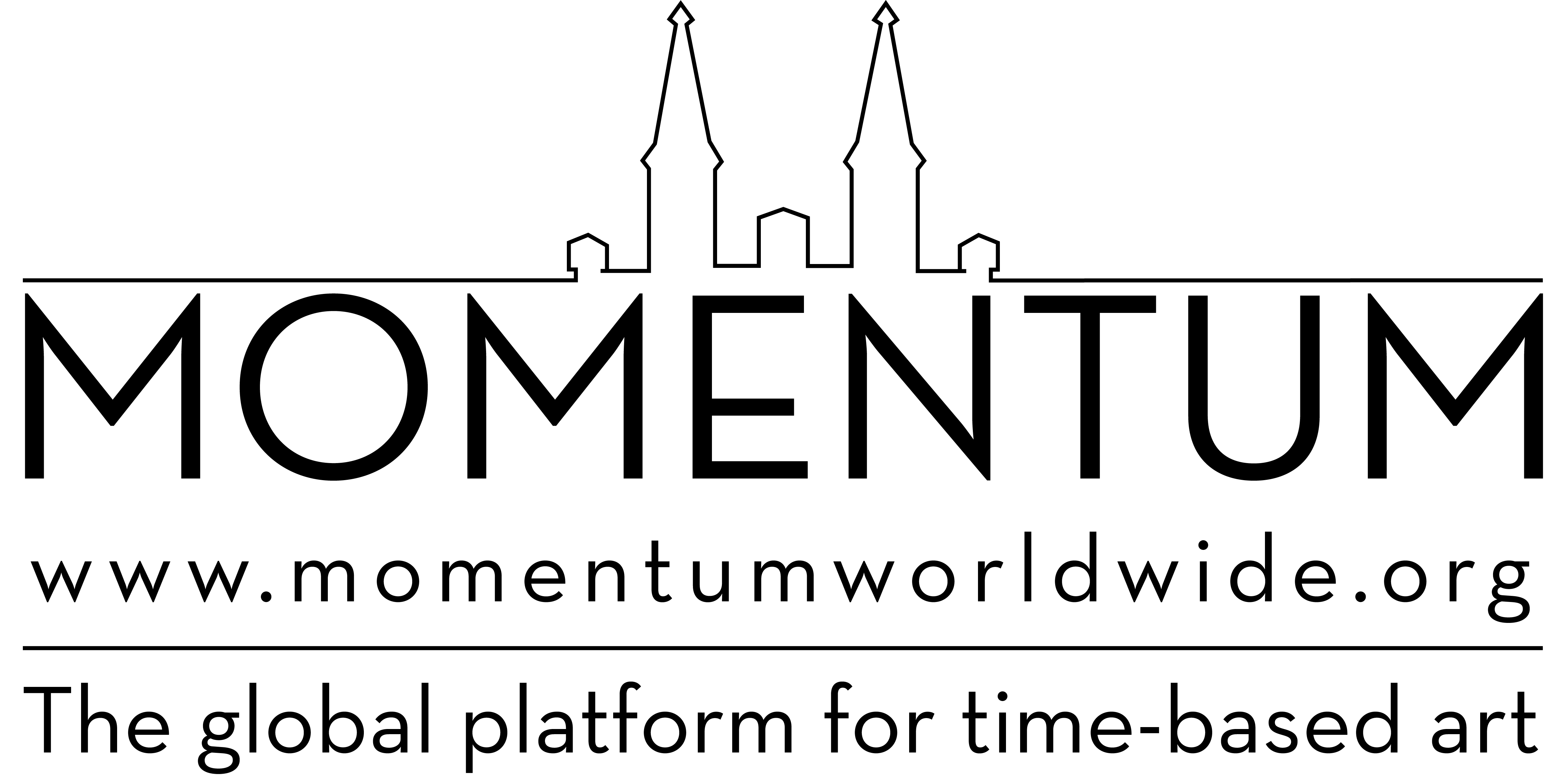 |
 |
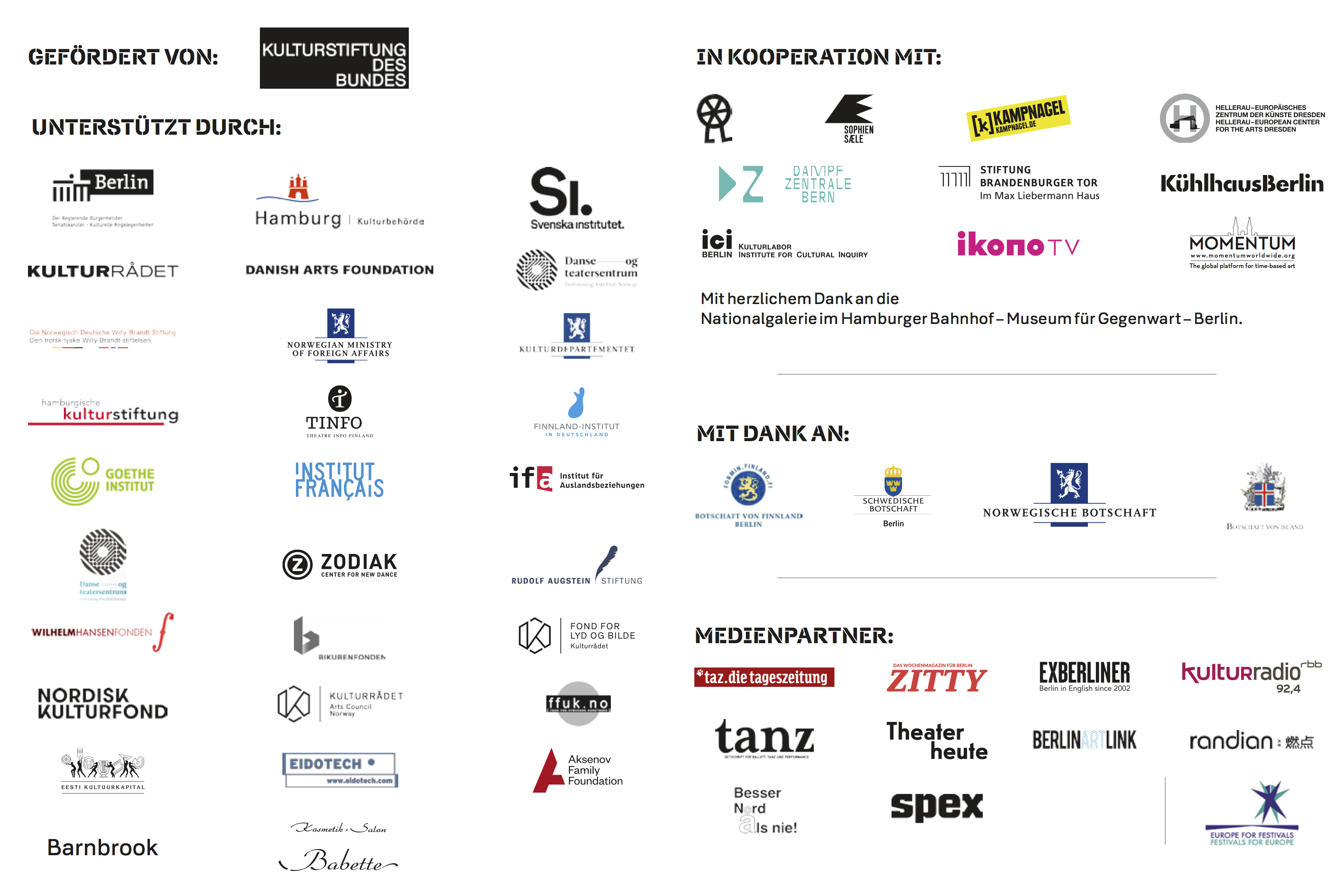
PHOTOS OF THE PRESS CONFERENCE
PHOTOS OF THE OPENING
PHOTOS OF THE INSTALLATION AT MAX LIEBERMANN HAUS
Photo Credit: Marina Belikova
PHOTOS OF THE INSTALLATION AT KÜHLHAUS BERLIN
Photo Credit: Marina Belikova
PHOTOS OF THE INSTALLATION AT MOMENTUM
Photo Credit: Marina Belikova









